

PARADISE
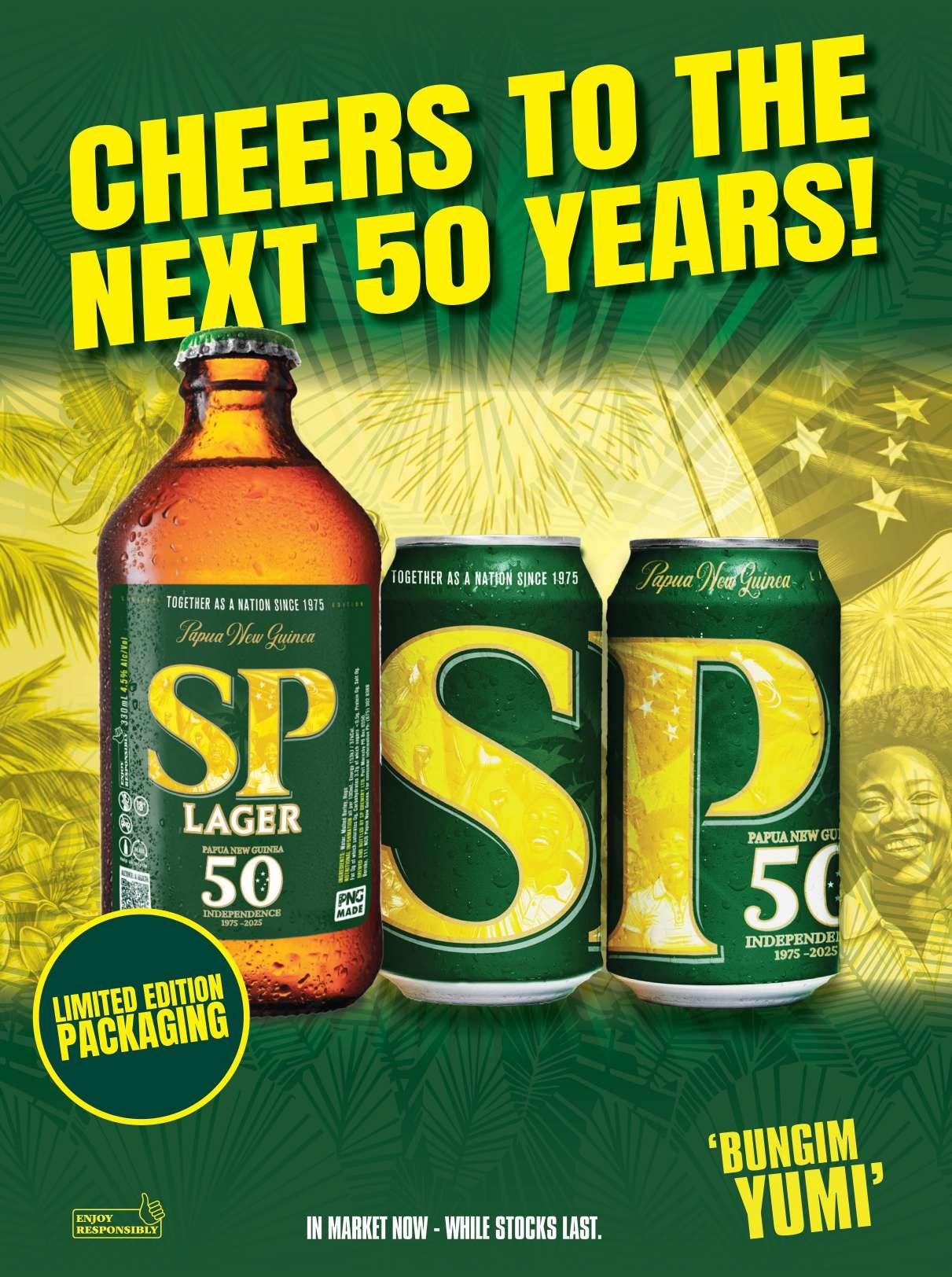
PARADISE
Paradise is the complimentary in-flight magazine of Air Niugini, Papua New Guinea’s international airline. The magazine is published by Business Advantage International.
BUSINESS ADVANTAGE INTERNATIONAL
PUBLISHING DIRECTOR
Andrew Wilkins
COMMERCIAL DIRECTOR
Robert Hamilton-Jones
ADVERTISING WITH US
Paradise is distributed in-seat on all Air Niugini international flights and selected domestic services. Additional circulation includes hotels, cafes and corporate offices in PNG. It is the country’s most-read magazine. To find out how to be seen in the magazine, contact our Advertising Sales Manager Robbie Milne @ rm@businessadvantageinternational.com

Business Advantage International Pty Ltd businessadvantageinternational.com
CORRESPONDENCE TO THE AIRLINE
The Chief Executive Officer
Air Niugini
PO Box 7186, Boroko, NCD, Papua New Guinea Tel +675 327 3498 Fax +675 327 3550
EDITOR
Robert Upe
STAFF WRITERS
Charlotte Armstrong, Nadav Shemer Shlezinger
CONTRIBUTORS
Bella Abel, Richard Andrews, Paul Barker, John Brooksbank, Paul Chai, Bronwen Gora, Belinda Jackson, Karen Ho, Godfreeman Kaptigau, Norman Ketan, David Kirkland, Lemach Lavari, Louise Murray, Theresa Patterson, Rocky Roe, Daniel Scott, Mary Tao, Paige Turner
AIR NIUGINI
EDITORIAL CONSULTANT
Illan Kaprangi
DESIGN
Alicia Freile, Peter Schofield
PROOFREADER
Sally Woollett
Editorial inquiries paradise@businessadvantageinternational.com airniuginiparadise.com
Printed in Australia. Both printer and paper manufacturer for this publication are accredited to ISO14001, the internationally recognised standard for environmental management. This publication is printed using vegetable inks and the stock is elemental chlorine free and manufactured using sustainable forestry practices.
Some of the articles in this publication are edited versions of those first published on the online PNG business magazine, businessadvantagepng.com.
Unsolicited manuscripts, artwork, transparencies and photographs are submitted at the sender’s risk. While all care will be taken, neither the publishers nor the airline will accept responsibility for accidental loss or damage. No part of this publication may be reproduced without the written permission of the publisher. Statements, opinions and points of view expressed by the writers are their own and do not necessarily represent those of the publisher, editor, or the airline. Information contained in this publication may be correct only at the time it was originally obtained by the writers and may be subject to change at any time and without notice.
© Copyright. 2025. All rights reserved.

Travel Services Limited
KAM NA HAMAMAS WANTAIM Mipela
Celebrate 50 Years of Independence with us at Hilton. Experience culture, connection and comfort, all in one place.
• 212 guest rooms & 180 residences
• Six restaurants & bars
• Two pools & fitness centres
• Hubworks co-working & retail
• Kutubu convention center








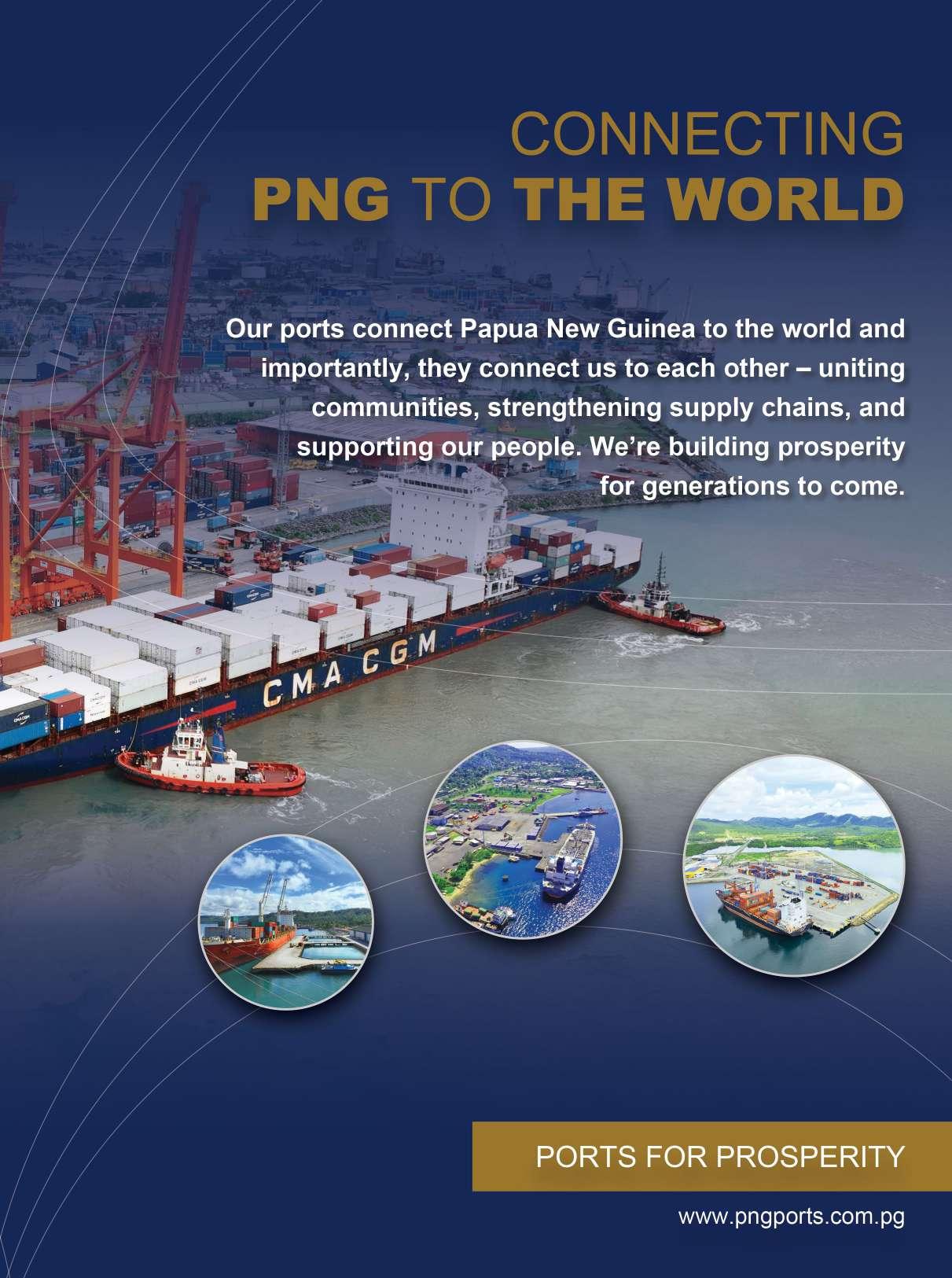
IN PARADISE




LIVING
Milne
Brisbane
48
International
Admiral

An
Untold


2025 Innovation PNG Award Recipient
2025 Innovation PNG Award
For the use of Arti cial Intelligence (AI) to automate the processing of invoices from suppliers.
For the use of Artificial Intelligence (AI) to automate the processing of invoices from suppliers.


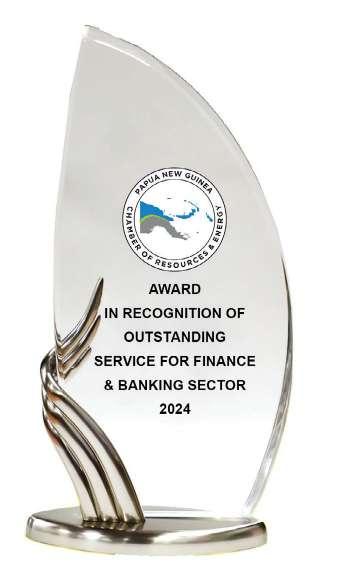

2024 PNG CORE Award Recipient
FOR
& BANKING SECTOR
SECTOR


Welcome aboard Message from the CEO

Welcome aboard and thank you for flying with Air Niugini. Just as the bird of paradise spreads its wings with beauty and grace, Papua New Guinea now takes flight into its next chapter, proudly marking 50 extraordinary years of independence. This golden jubilee is a time for reflection, celebration and renewal. It is a time for all of us to honour the journey of our nation and look forward with optimism and determination.
On the evening of September 15, 1975, the Australian flag was lowered at Sir Hubert Murray Stadium in Port Moresby. The following morning, the red, black and gold of the PNG flag was raised for the first time. It was the dawn of a new era. In this issue of Paradise, we honour that legacy with a powerful collection of stories from the people who lived through the early days of independence.
You will also discover a special feature exploring 50 defining influences that have shaped our national identity. These include those of political leaders, artists, athletes, media voices, major infrastructure projects and cultural movements that reflect who we are and where we have come from.
Air Niugini is proud to play a part in this milestone moment. In September, we welcome the first of our new Airbus A220 aircraft. This aircraft, affectionately known as the People’s Balus, signals the start of a new chapter for our airline and for aviation in PNG. It brings with it improved comfort, efficiency and reliability for our passengers and strengthens our ability to connect communities across the country and beyond.
Beyond aviation, our role as the national carrier includes serving the wider needs of our people. We continue to support the Operation Open Heart Foundation by transporting medical teams across the country and assisting children to have lifesaving heart surgeries at
Port Moresby General Hospital. This important partnership reflects our commitment to improving lives and contributing to our nation’s future.
As part of this year’s golden jubilee celebrations, the Bank of Papua New Guinea is issuing PGK20 million worth of commemorative 50-kina banknotes and 50-toea coins. These special denominations reflect the symbolic ‘50’ milestone and feature designs that celebrate our nation’s rich cultural heritage and identity.
This issue of Paradise is a celebration of PNG’s rich culture, environment and progress. From the vibrant coral reefs of Milne Bay to the voices of war survivors in Madang, from the conservation of the tenkile tree kangaroo in Sandaun to the artistic revival of the Moresby Arts Theatre, these stories capture the depth and diversity of our nation. You will also find updates on the global stage, including PNG’s participation at Expo 2025 in Osaka, Japan, where our country is proudly once again, sharing its trade and tourism potential with the world.
As we mark 50 years of independence, let us do so with gratitude for the past and a shared vision for the future. At Air Niugini, we are proud to fly the flag and to serve the people of PNG with purpose and care.
Finally, at Air Niugini, we acknowledge that from time to time your journey may be affected by unforeseen disruptions or a service experience that may not meet the standard you expect from us. Please know that we are listening, learning and working hard every day to improve. Your patience and understanding mean a great deal to us as we strive to deliver a safer, more reliable, and more comfortable travel experience for all Papua New Guineans and our international guests.
Just as the bird of paradise rises high above the canopy, so too do we seek to soar, lifting the hopes, pride and dreams of our people into the future. Congratulations, PNG. Together, we fly higher.
Bamahuta! Lukim yu bihain.
Gary Seddon Chief Executive Officer

WE’RE NOT JUST YOUR BANK. WE’RE YOUR PARTNER FOR LIFE.
In community, in business, and in life, we’re with you, building stronger futures together.
Proud to have walked alongside Papua New Guinea through 50 years of independence, and 115 years of shared progress.
BRIEFINGS, LOCAL KNOWLEDGE
DAME CAROL KIDU PARADISE Q&A
Paul Chai speaks with Dame Carol Kidu, a pioneering Australian-born female politician who served with PNG’s first Prime Minister, Michael Somare. Kidu is the widow of Sir Buri Kidu – who was appointed PNG’s first national chief justice in 1980. Since retiring from politics in 2012, she has passionately pursued a series of projects to help the Papua New Guinean community. Here, she reflects on the past five decades of Papua New Guinean independence.

Q: What is the most significant achievement PNG has made since independence?
A: Independence has brought over 800 tribes into one nation and that is an incredible achievement, although it hasn’t been entirely completed yet. The citizens are very proud to identify as Papua New Guinean, they are very proud of the PNG flag, and they go crazy every year at independence celebrations.
I feel our founding Prime Minister, Michael Somare, was the right man at the right time for independence. He had a unique ability to get a positive response everywhere that he went.
Q: What would you like to see happen over the next 50 years?
A: PNG is a unique country. What was done in the colonial times was a decree that the land would remain with the people and 97 per cent of the land at the time remained with the people – with only three per cent taken for government and church purposes.
Papua New Guineans do not realise how lucky they are and now is the time to understand that. They are not getting essential services, so they are racing to the city to get those services, which is causing pressure on urbanisation.
The solution to urbanisation is rural development: get schools, get hospitals, get health centres into those regions because people own the land.
Dame Carol Kidu says PNG needs to ramp up rural development in the next 50 years, with schools, hospitals, health centres and other essential services.
DEPARTURE LOUNGE
People get tempted to dispose of the land when there are no services out there, but they are very lucky. You look at the number of young people in Australia that cannot own a house, or people who are forfeiting on their mortgages because it is not easy in Australia either at the moment.
We have to start talking about how lucky Papua New Guineans are on the 50th anniversary of independence: they have land, they can build a house on that land but there has got to be infrastructure functioning out in those rural areas.
Q: As a woman in PNG politics how do you think things have changed for women in PNG?
A: It is still very difficult for women. In the first election after independence, in 1977, we had three women elected, we have never gone beyond three women, we have had several parliaments with zero women. That is one of the things I am working on: mentoring women to get more into politics.
We have much to be proud of at 50 years.
I am hoping 2027 will see some change – we are just about to get started on a mentoring program for 20 women who performed well in the last election.
We are trying to change mindsets about leadership, the idea that only men are leaders. Westerners quite often have the wrong idea about PNG, saying that women have no power. That is not true. Their power has always been in the private sphere. I know in the household I married into, the most powerful person was not my husband (Sir Buri Kidu), who became chief justice; it was

his mother. She was an incredible woman, and decisions would be made in private with the clan and then when the announcement was made in public it would be made by the men. Women do have power, but we have to transfer that power from the private sphere into the public sphere.
Q: How will you celebrate independence?
A: Since leaving politics I have set up a family enterprise (Tutu Beach Retreat) so we will do something there. In the pre-school that I have started, we will probably have a little independence show.
Q: What makes you proud of PNG?
A: I always defend PNG when I am overseas because we are facing enormous challenges. I think PNG is a very misunderstood country and society. We have much to be proud of at 50 years, but we have a long way to go. And the outside world could learn a lot from PNG if they are willing to humble themselves to do so. n


PNG on world stage in Japan
Papua New Guinea’s trade, investment, cultural heritage and tourism opportunities are being showcased at the 35th World Expo (expo2025.or.jp) in Osaka, Japan.
The six-month expo, which runs until October 13, is expected to draw 28 million visitors. PNG is among 150 countries and international organisations that are exhibiting at the expo to generate business.
PNG’s expo team is being led by Osaka Expo Commissioner General Gabriel Dusava.
He says: “What makes this event particularly special is that it is occurring in the 50th year of PNG being an independent country, which also means that it is the 50th anniversary of our country’s diplomatic relations with Japan.
“Our participation is not only a celebration of who we are as a nation, but also a clear statement that PNG is ready to engage with the world. We are proud to share our story, our people and our potential on this global stage.”
Commissioner General Dusava previously served as PNG’s

Foreign Affairs Secretary and as the country’s Ambassador to Japan from 2012 to 2017.
He was appointed to the expo role by the PNG Government following a 2024 discussion between Japan’s Prime Minister
Shell Gadinia S3 40

Fumio Kishida and PNG’s Prime Minister James Marape about PNG participating in the expo. Prime Minister Marape was due to visit the expo in late July, shortly after Paradise went to press, with his visit coinciding


Shell Gadinia S3 40
Unlock superior performance and reliability for your marine diesel engines with Shell Gadinia S3 40! This high-quality lubricant is expertly formulated to extend oil life, protect your engine from wear and tear, and maximize system efficiency. By choosing Shell Gadinia S3 40, you're not just buying a lubricant; you're investing in the longevity and smooth operation of your equipment, ultimately reducing operating costs and minimizing downtime. Trust Shell Gadinia S3 40 to keep your marine diesel engines running stronger, for longer.
Commissioner General Gabriel Dusava (above); expo visitors at the PNG pavilion (right).
The ONLY Authorised Shell Lubricants Distributor in PNG
Our participation is a clear statement that PNG is ready to engage with the world.
with PNG’s national day at the expo. (Each country taking part in the expo is allocated a national day, which includes a ceremonial flag-raising.)
Apart from its main pavilion at the expo centre, PNG has an off-site pavilion to facilitate sales,
a virtual pavilion on the World Expo’s digital platform, and is running investment roadshows in Osaka and Tokyo.
PNG’s presence at the expo has come together with support and cooperation of privatesector companies, as well as government stakeholder agencies, Commissioner General Dusava says.
Air Niugini, meanwhile, has provided direct charter flights from Port Moresby to Osaka for PNG delegates and attendees.
World Expos are held every five years in different cities around the world. The expo was last staged in Dubai in 2020 and the next is scheduled for Riyadh in Saudi Arabia in 2030. n
— JOHN BROOKSBANK


THE PNG–JAPAN FRIENDSHIP
Japan has been a longstanding partner of PNG. Over the years, technical cooperation has been extended through the Japan International Cooperation Agency, while concessional loans have enabled construction of essential infrastructure such as Port Moresby’s sewerage system, PNG Power’s Ramu grid reinforcement and Lae’s Tomodachi International Airport. Aid grants helped build the Kavieng Fisheries College in 1974 and have supported small projects such as markets in provincial centres.
The trade balance is in PNG’s favour with exports to Japan in 2023 worth more than US$3 billion, far exceeding the country’s imports.
Existing exports include tuna, LNG and a range of other goods but there is still great potential to expand trade and investment with Japan.
Against this backdrop and the potential to increase this level of trade, the PGK8.6 million cost of PNG’s presence at the World Expo could be considered a worthwhile investment.

Bank releases special notes and coins
To mark the country’s 50th anniversary of independence, the Bank of Papua New Guinea is releasing PGK20 million worth of commemorative 50-kina notes and 50-toea coins. The two denominations were selected specifically for their ‘50’ value.
The public got a first look at the commemorative monies in April, when they were launched by the Prime Minister James Marape and Bank of PNG Governor, Elizabeth Genia.
“When our currency was launched in 1975, it marked
more than a change in systems. It was a declaration of identity, of confidence, and of our right to determine our own course,” Genia said.
“It gave us the tools to shape our economic future, to write our own financial story, and to anchor the spirit of nationhood into every note and every coin.
“Today the kina and toea continue to serve as enduring icons of our independence. Not only in our wallets and marketplaces, but in the very idea that we are the stewards of our own future,” she said.









The front of the 50-kina note will showcase a few of PNG’s natural icons. Most notable is the raggiana bird-of-paradise, the country’s national emblem, with its wings outstretched partially over Parliament Haus. Also, newly featured is the Sepik blue
The kina and toea continue to serve as enduring icons of our independence.
orchid. This orchid is also known as the Dendrobium Veronica Somare, after the wife of the country’s first Prime Minister, Sir Michael Somare. Somare’s portrait sits on the back of the 50-kina note.
Adding a pop of colour is the image of the male bluish green
Queen Alexandra birdwing butterfly, next to the brown female, the largest butterfly in the world. Tying it all together is the official 50th anniversary of independence logo. It was created by Samuel Uge. Uge’s design was carefully selected after a nationwide competition.
The anniversary logo is prominently featured in the centre of the coin. It is encircled by the national flag in colour, standing out against the silver of the seven-sided coin.
The 50th anniversary of the country’s currency – the kina and toea – was marked in April. The kina and toea were launched in 1975 by former Prime Minister Sir Julius Chan. As the country’s first Finance Minister he will be honoured at the end of the year with his portrait on a 100-kina note. This will be a permanent change to the country’s highestvalue note, and not just part of the commemorative monies.
Note Printing Australia prints PNG’s kina notes and the toea coins are produced by the Royal Australian Mint. n
– MARY TAO
At the launch of the commemorative PNG currency are (from left) the Minister of Foreign Affairs Justin Tkatchenko, the Prime Minister James Marape, the Governor of the Bank of PNG Elizabeth Genia and the CEO of Note Printing Australia Malcolm McDowell.

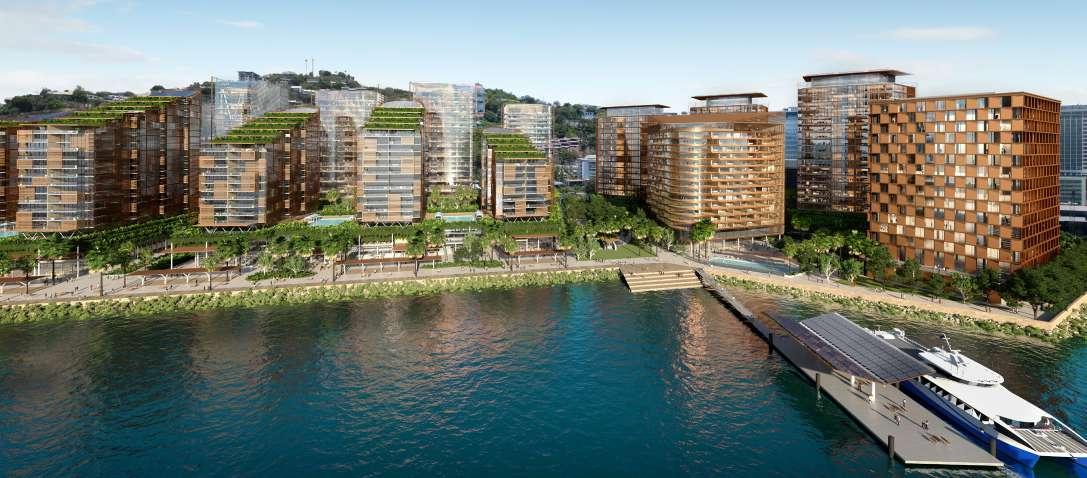
PREMIUM WATERFRONT, APPROVED DEVELOPMENT

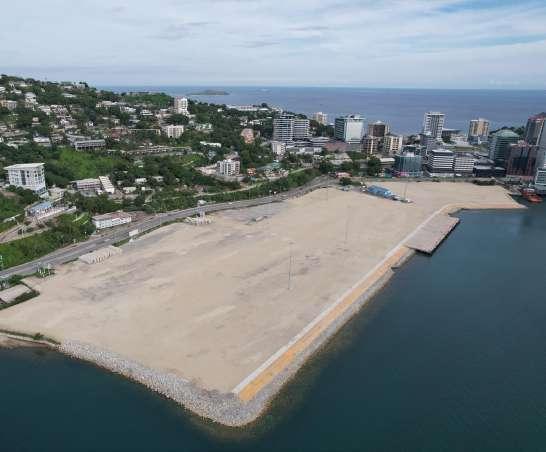
Portside Gardens
Champion
Parade, Port Moresby
FOR SALE VIA EXPRESSION OF INTEREST
Ashton Brunswick on behalf of Kumul Consolidated Holdings (KCH) are proud to offer to the market a premium waterfront, approved development site consisting of 4 zones and 13 lots, for sale in one line or individually.
• Strategically located on Champion Parade, Port Moresby (formally the old Port Site), a prime and accessible area
• Exceptional front-row views over Fairfax Harbour
• A unique and picturesque setting for both residents and businesses
• Approval given from NCD Physical Planning Board (NCDPPB) for outlined planning permission for the masterplan concept
• Masterplan designed by leading Australian Architectural firm Architectus, in conjunction with EJE Architects & Premise Engineers
To register your interest
Email: portsidegardensales@ashtonbrunswick.com
Or enquiries
Sara Pratt +61 413 054 858 advisory@ashtonbrunswick.com
Alotau music festival draws big crowd
Thousands of music fans flocked to Alice Wegeda Park, in Alotau, to watch local musicians, including legends Patti Potts Doi and George Telek, perform at the third Milne Bay OutLoud Music Festival.
The festival, in May, was a celebration of local musical talent and Milne Bay culture.
The festival was created in 2021 by its chairman, Owen Abel, to help create a safer Alotau.
Event manager, Alford Gafem, says Abel’s focus for the festival was to help alleviate youth crime. “He had a vision to address youth crime through music. He wanted to engage young people by encouraging them to express themselves positively through music and culture.”
That was clearly reflected in this year’s theme: ‘Inspiring our youth through culture, music and tourism for a better community’.


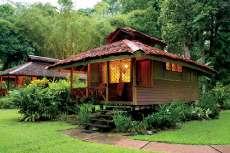


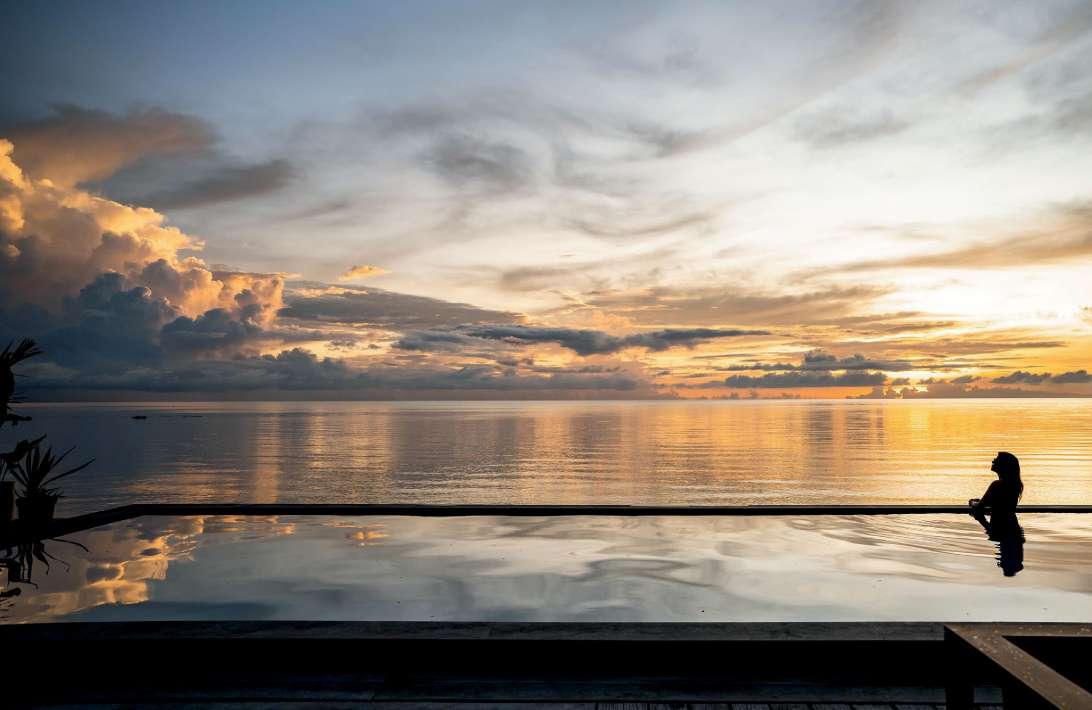





The Young Sibas String Band performing at the festival (above); the Kaikwali dance group (above right); the festival crowd (right); Zaccaria Sedika (middle right); Willie, the drummer for Third Major Band (far right top); Archie Tarzy (far right bottom).


Festival-goers were entertained by over 30 artists.

Marriott Executive Apartments Port Moresby, a waterside property close to the heart of the city, is set within the vibrant mixed-use development of Harbourside South. Boasting 88 luxury apartments with premier hotel services, Marriott Executive Apartments are suitable for both short and long-stay travellers.


Guests will enjoy oceanic views as well as leisure facilities offered within the greater Harbourside Precinct. Various bedrooms and penthouses are available, each promising the space, ambience, and privacy of residential living. Guests also have access to the Executive Boardrooms and the indoor and outdoor venue space on the 11th floor, providing stunning views.
Gym membership including lap pool access is now available.
Use your Membership with us
Guests are welcome to use their Bonvoy Membership during their stay. Reserve your room online at marriottexecutiveapartments.com
Marriott Executive Apartments ® Harbourside South | Stanley Esplanade, PO Box 1 | Port Moresby, Papua New Guinea (+675) 7090 8888 | marriottexecutiveapartments.com
Traditional food and craft stalls were set up in the park, which was packed with a young crowd singing along to popular hits.
The festival was backed by the Department of Tourism, the Milne Bay provincial government and local parliamentarian Rick Morris.
Festival-goers were entertained by over 30 artists. Most of the acts were from the province, including popular string bands Route 28, Young Sibas and Junior Tamos.
The crowd was thrilled by visiting powerhouse vocalists Danielle ( Lullaby) and Archie Tarzy ( Asiovai ), who are local household names. Also on stage were renowned bassist Richard Mogu and popular artist Ragga Siai.
“There was a lot of positive feedback from the public,” Gafem says. “Overall, it was a great success — everyone was happy and already looking forward to the next one.”
The next music festival is set to happen at a bigger venue in 2027. n
– MARY TAO




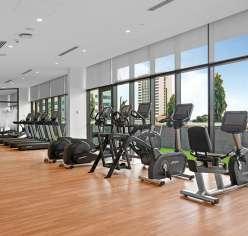
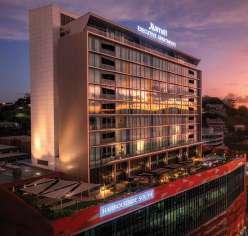
Improvements to oldest theatre in PNG
The Moresby Arts Theatre is undergoing a well-deserved exciting upgrade, having served the art community in Port Moresby for over a century. Two major upgrades will happen at the venue: a refurbished pottery studio and a new multipurpose hall.
These improvements fall under the theatre’s capital works program, which is being financially supported by the Incentive Fund from the Australian government.
One of the main motivations for the upgrades was to make the venue more inclusive to people living with disabilities. The venue will install ramps for wheelchair users and tactile ground surface indicators for people who are blind.
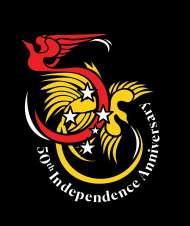
“The Moresby Arts Theatre is one of the oldest and most active cultural institutions in Port Moresby, dedicated to nurturing the creative arts and building community through expression and storytelling. Our programs are diverse and community-focused, offering opportunities for people of all ages to engage in the arts,” says Zimmah Gloway, Vice President of the theatre.
The pottery studio started offering classes in June, led by pottery expert Natasha Bing. The last time pottery classes were offered at the theatre was 20 years ago.
The lessons include an introduction to pottery and ceramics, with emphasis on cultural expression when working with clay. The studio has installed two kilns.

The multipurpose hall is set to open at the end of the year. It will function as a rehearsal space, lecture theatre and conference hall. The existing theatre facility is also currently having improvements made to audio and visual technology. n
– MARY TAO
PNG Grown

The Moresby Arts Theatre is undergoing a range of improvements, including easier access for people living with disabilities.
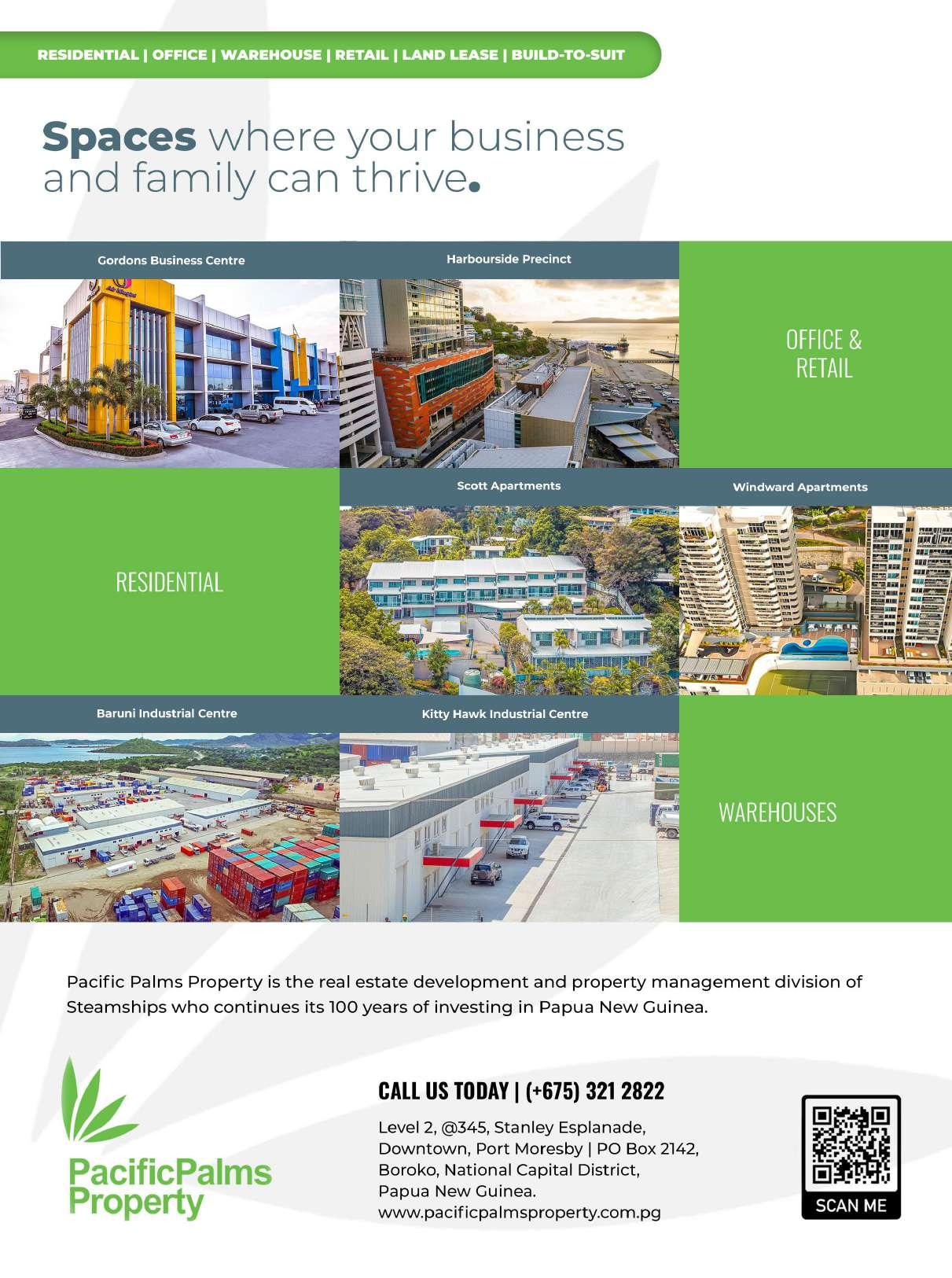
Major announcement at Nature Park fundraiser
More than 400 people attended the Port Moresby Nature Park’s inaugural charity gala dinner earlier this year, raising about PGK250,000 for the park.
Among those at the dinner at the Kutubu Convention Centre at the Hilton in Port Moresby was the Prime Minister James Marape, as well as other politicians, diplomats, sponsors and supporters of the park.
In a major announcement, it was revealed the park is opening a Centre for Species Survival. The centre is in collaboration with the International Union for Conservation of Nature (IUCN), which is a global environmental organisation, and funded by the Cologne Zoo in Germany.
The new centre will be dedicated to safeguarding PNG’s unique flora and fauna.
The new centre will be dedicated to safeguarding Papua New Guinea’s unique flora and fauna, including amphibians, tree kangaroos, echidnas, orchids and birds of paradise.


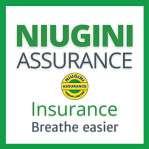


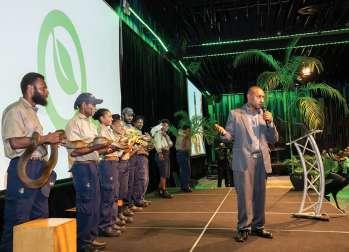

The Nature Park’s Chief Executive Officer, Johnpaul Houston, said the gala was a crucial fundraising initiative for the Nature Park to help pay for the park’s conservation, education, research and community programs.
“It’s important for people to understand that our public-facing and very beautiful park is just the beginning of the essential work that we do,” he said.
The CEO said the park’s education programs are delivered to 30,000 PNG school children each year and that more than 150 animals are released back into the wild annually through the park’s rescue and rehabilitation efforts. In addition, the park has a breeding program for endangered native species.
The gala included a three-course dinner, cultural performances and live music. n



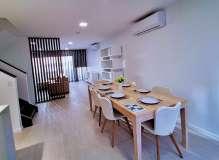


The Prime Minister James Marape at the Nature Park gala (far left); Nature Park Chairman Lorna McPherson addresses gala guests (top left); Nature Park CEO Johnpaul Houston (above); the Nature Park’s Conservation Manager Francis Otto Gundu introduces staff and animals (left).
HEART SCREENING FOR PNG KIDS
Air Niugini has teamed up with the Operation Open Heart Foundation to help facilitate a heart-screening program for Papua New Guinean children.
The airline has supported the foundation’s work by providing air transport for paediatric doctors to remote communities.
The foundation rolled out a provincial paediatric cardiac screening program in 10 provinces last year where heart scans for children are not ordinarily available.
Medical teams were equipped a with portable state-of-the-art GE ultrasound machines (donated by the BSP Financial Group) and screened 729 children.
Of the 729, 33 children were diagnosed for open-heart surgery to be performed at Port Moresby General Hospital to correct congenital heart defects. In addition, 25 were identified for closed-heart surgery.
It’s estimated that 1000 children may be born in PNG each year with congenital heart disease. The severity of heart defects varies from minor flaws needing no treatment to complex issues requiring multiple surgeries.
The exact causes of congenital heart defects are not known, but risk factors include certain infections during pregnancy, diabetes in pregnancy, as well as smoking and taking drugs and alcohol during pregnancy.
Symptoms include recurrent chest infections or cough, fast breathing, poor



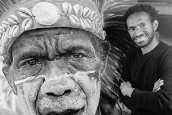

weight gain, and fingers, toes and lips turning bluish.
Children may also be born with a normal heart but can develop heart disease growing up if they are exposed to certain infections such as those caused by certain throat bacteria and tuberculosis.
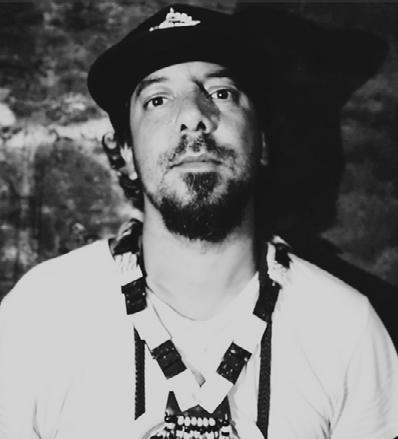





The screening program was carried out in Alotau, Popondetta, Lae, Goroka, Mount Hagen, Kudjip, Chimbu, Wabag, Mendi, Tari, Madang, Wewak, Rabaul and Daru. It is continuing this year, with Air Niugini’s ongoing support, in places including Buka, Kavieng, Manus, Vanimo, Kimbe and Tabubil. n
Arriving in Port Moresby on an Air Niugini flight from Rabaul for heart surgery are (from front left) John Vinamut, 10; Miriam Nathan, 10, and Tania Lote, 2, with their mothers.
As Papua New Guinea celebrates 50 years of independence, Australia proudly marks this historic milestone through Yumi Stap Wantaim – a celebration of our enduring partnership shared values and deep connections
Yumi Stap Wantaim is not just a celebration; it is a tribute to the resilience, vitality and unwavering spirit of the Papua New Guinean people and the deep friendship and partnership between our two nations and our people
SD-WAN Solution
Dedicated Account Manager

Secure and predictable performance Optimal usage of existing infrastructure and networks

Visibility and application repor ting
In today’s rapidly changing world, companies must adapt to digitization to stay competitive. Transforming from traditional WAN to SD-WAN, along with and improved productivity Contact us for more information!










BIG PICTURE
TAKEN BY BRYAN AUSSUNG
Young boys from Popeu village on Rambutso Island in Manus Province take some time out as they return from a fishing trip. The photographer says: “It is one of my favourite pictures as it simply depicts the beautiful scenery, the nature, the livelihood and the people of this part of Papua New Guinea. It shows that the children in this part of the world learn to sustain their families at a very young age.” The sticks in the shallows are used to support a seaweed farm.

If you have a photo of Papua New Guinea that you’d like published in Paradise , email your submission to paradise@businessadvantageinternational.com. Photos should be at least 1.5mb and 300dpi.

Future Makers: Young Leaders
Shaping PNG’s Largest Province
About the Sustainable Development Program.
Sustainable Development Program (SDP) is a multifaceted development program established in 2001 to improve the welfare of the people of PNG, particularly those of Western Province.
PNG Sustainable Development Program Limited is a company limited by guarantee and incorporated in Singapore. It is
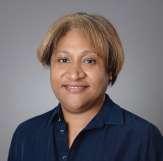
governed by its Program Rules and Board of Directors. We use the income generated by the Long-Term Fund (LTF) to invest in the current and future generations of Western Province so that benefits can be enjoyed for many years to come.
Our mandate is to build healthy, educated and more resilient communities in Western Province
in line with provincial government plans. We do this by focusing on Education, Health and Livelihoods as pathways to helping people improve their lives.
We deliver community-based activities that empower people and communities to achieve their economic and social development potential.
Lesieli Taviri Chief Executive Officer, SDP
As we anticipate celebrations of our 50th anniversary - it’s also a time to look ahead—to the next 50 years and the young people who will shape it. We are proud to support this next generation by creating opportunities and pathways for tertiary education and employment.
As CEO, a big part of our focus over the past 18 months has been to anchor our presence in Western Province and improve our program delivery service model. We’ve done a lot to remove inefficiencies, unify our teams across our programs in education, health, and resilience.
Reflecting on our five-year journey since re-establishing our presence in Western Province, we are inspired by how far we’ve come. Our hubs

in Daru, Balimo, Lake Murray and Morehead continue to anchor our work, bringing us closer to the people, communities and local government.
In 2024, we launched the Gutpela Community Strategy 2025–2030, our five-year plan focusing on building resilient communities.
The opening of the K52 million Morehead Health facility in March this year is testament to our commitment. We also celebrated the first ever tertiary graduation in Western Province through the recently accredited Balimo College. This is a K20 million investment providing Bachelors in Nursing including Diploma and Bachelors in Primary Teaching programs. Our
joint venture in the establishment of South Fly Agri oversees our agriculture and aquaculture farms across six locations in Western Province.
As we celebrate the Future Makers— young leaders in Western Province shaping the next 50 years we are proud to be creating pathways to opportunities for the youth to improve skills, employment and income.
Thank you to our hardworking staff, our Board, our partners, and the people of Western Province. Together, we’re building a future that’s grounded in hope, resilience, and strength.

Jerome Bariga – Leading youth in Lake Murray
My name is Jerome Bariga. I’m 25 and I’m from Kubut village near Boboa Station in Lake Murray, Western Province. I belong to the Kuni tribe, the largest of the five tribes. I lead the Youth Empowerment Scheme (YES) program. I’m also completing school through the SDP-funded FODE program.
Lake Murray is remote, with about 9,200 people. We travel by canoe to reach basic services. There’s a health centre and primary school at Boboa, but no high school, bank or police. There’s high dropout rates for students and limited opportunities for young people. There’s also a growing problem with alcohol, gambling and unemployment.
In 2024, I was introduced to the YES program by SDP. Through YES, I’ve learned to lead projects, manage budgets and support my community. The opportunity changed my life. I’ve gained experience and more importantly respect. I now help support my young family and I hope to continue making a difference for the youth of Lake Murray.
My dream for the future is to study community development and project management and to secure a fulltime job. My message to youths is simple: Do your best and be honest in every task. Respect your elders and your community. Blessings will come.
My dream for the future is to study community development and project management and to secure a full-time job.


A journey of resilience – From Buzi to Balimo School of Nursing
My name is Yvonne Daguna, and I’m from Buzi-a small coastal village in South Fly District. I’m in my first year of my bachelor’s degree at the SDPfunded Balimo School of Nursing. I’m grateful to be studying but getting here wasn’t easy.
After completing Grade 12 at Daru Secondary in 2017, I wasn’t accepted into any tertiary institution. It broke me. My father reminded me, “There’s always another way.” That gave me strength.
I moved to Port Moresby soon after to care for my sick aunt. While there, I enrolled at the Port Moresby Institute of Studies to upgrade my marks. It was tough. I had no money and missed classes, but I never gave up.
In 2023 I graduated with a certificate in community health work from Rumginae School of Nursing. Then in 2025 I was accepted into Balimo School of Nursing.
I’m grateful to SDP for supporting me with my school fees, learning materials, travel and basic needs.
My dream is to return to Buzi to reopen the sub-health centre which has been closed for many years. Many mothers give birth without help. Babies miss vaccinations. I want to change that.
To me leadership means serving those who are forgotten and being the hope for my community.
To young women across Western Province and PNG: “Never stop believing that you matter. Your dreams are valid. Even if you come from the bush like me—you can still rise.”


Dabema Tigili gets a second chance
to serve through
education
My name is Dabema Tigili. I’m from Waligi village just outside of Balimo in Delta Fly District. I’m currently completing my bachelor’s degree at Balimo Teachers College, and every step of this journey has tested my patience and faith.
I was born in 1984 at Balimo Hospital. Growing up, I understood the importance of education but many schools in my area were not fully functional because teachers left, and students had no learning materials or classrooms. I dreamed of helping to rebuild those schools.
After completing Grade 12 in 2004, I wasn’t accepted into any tertiary institution. As the years passed, I felt like giving up, but I never gave up on my dream completely.
In 2019, I got a second chance to continue my education through the SDP-funded FODE program. Thanks to SDP’s support, I didn’t have to worry about school fees. That gave me confidence to keep going.
Success doesn’t come all at once. But if we stay focused and use what we learn to support others, we can change the future of our communities.
Soon I will be a qualified primary school teacher. I want to teach in rural schools to help rebuild them. My late mother once told me, “Your success will bring joy to my face.” I carry that with me always.
Success doesn’t come all at once. But if we stay focused and use what we learn to support others, we can change the future of our communities.
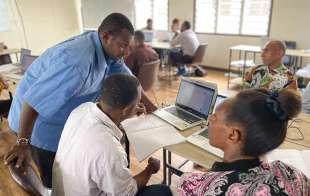
50 YEARS OF INDEPENDENCE
A special message from James Marape, the Prime Minister of Papua New Guinea
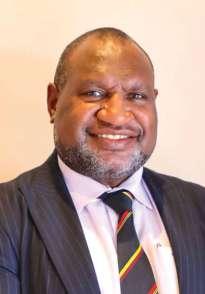
The 16th of September 2025
will be a momentous day in the history of our country. It will mark 50 years of Papua New Guinea as an independent nation – an achievement we can all be genuinely proud of.
Fifty years ago, my honourable predecessor and the father of our nation, Grand Chief Sir Michael Somare, was serving as Chief Minister in the government of the Territory of Papua New Guinea. The colonial era of our history was drawing to a close, and he – alongside a small and dedicated team of politicians and civil servants – was laying the foundations for a new nation.
Already, institutions such as the Bank of Papua New Guinea and Air Niugini had been established to support the building of our independent nation.
Today, we are modernising Air Niugini – our national airline and a symbol of nationhood since 1973. My government has launched the largest fleet renewal in the airline’s history, a PGK5 billion program that includes the acquisition of 13 new aircraft – 11 Airbus A220s and two Boeing 787 Dreamliners. This investment, supported through financing from the Government of Papua New Guinea, the Asian Development Bank, the US Export-Import Bank, and Export Finance Australia, marks a new chapter in aviation for our country.
The modernisation of Air Niugini is aimed at delivering safe, reliable, and world-class air services, connecting our people more efficiently across the nation, and enhancing our links to the region and the world.
At the time of independence, I was just four years old, growing up in the remote Nomad River area of Western Province. I had no idea then of the hard work and dedication of those visionary early leaders. Nor did I know that I would one day follow in the Grand Chief’s footsteps and have the privilege of leading this great country.
This golden jubilee is a time not only to honour the achievements of our founding fathers, but also to recognise the countless contributions
of the men, women and children who have helped shape the people we are today.
Our journey has been extraordinary. We remain a young nation, with our greatest days still ahead of us.
Yet we are also an ancient people – with deep-rooted cultures, over 800 languages, time-honoured customs and traditions, and a profound connection to our land and sea.
We are a country of volcanoes and mountains, deep forests and pristine rivers, rich biodiversity, and coastal waters teeming with marine life.
To put it in a succinct summary: we are the most linguistically, culturally, and biologically diverse nation on Earth. At independence in 1975, fewer than one per cent of our people were formally educated, over 90 per cent of the country was disconnected from roads, electricity or services, and our economy was valued at under PGK1 billion to support a population of over 3.5 million. Despite these enormous challenges, we have endured and advanced as one people, one nation, one country – 50 years on.
In this anniversary year, I invite all Papua New Guineans – and our international partners and friends – to join us in celebrating this remarkable milestone.
There will be celebrations in communities across the country, but this is also an opportunity for all of us to rediscover PNG. I encourage you to travel through our highlands and islands, stay in our many hotels, resorts and lodges, attend our vibrant cultural shows and festivals, build new connections, and rekindle old ones.
Paradise magazine was first published by Air Niugini in 1976 – in the very first year of our nationhood. Since then, it has faithfully showcased the very best of PNG.
In this special issue, the magazine shares our history and culture and offers a dedicated focus on heritage tourism and the many travel opportunities available in this milestone year.
Please join me in celebrating our past and inspiring our future.
The Hon. James Marape MP




We are raising our own flag, a flag that represents our identity and aspirations.

HOW IT
BEGAN
Richard Andrews recounts events around the proclamation of independence in PNG in 1975.
Acentury of colonialism ended on September 16, 1975, when Papua New Guinea gained independence from Australia, to become a constitutional monarchy and member of the British Commonwealth.
At sunset on September 15, 1975, the Australian flag was lowered at the Sir Hubert Murray Stadium in Port Moresby, and the following day the PNG flag was raised for the first time.
“We are lowering it, not tearing it down,” said Governor-General Sir John Guise about the Australian emblem – emphasising PNG’s peaceful transition to independence. “We are raising our own flag, a flag that represents our identity and aspirations.”
At one minute past midnight on September 16, Sir John gave the proclamation of independence, followed by the PNG national anthem and a 101-gun salute from the Royal Australian Navy. Fireworks lit up the sky and celebrations continued through the night and into the following days.
Thousands attended the main ceremony on September 16, many in traditional dress, with brightly coloured body paint, feathers, grass skirts, shell jewellery, and headdresses representing the diversity of PNG’s 600 islands and more than 800 languages.
Officiating at the main ceremony on the capital’s Independence Hill were His Royal Highness Prince Charles, Prince of Wales (representing Queen Elizabeth II, the British monarch); Chief Minister of Papua New Guinea, Michael Somare, the country’s

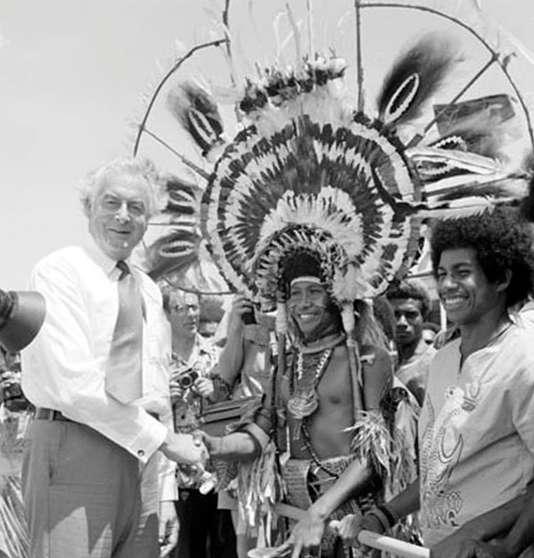
The PNG flag is raised at Independence Hill in Port Moresby on September 16, 1975 (opposite); Prince Charles, now King Charles III, with PNG’s first Prime Minister Michael Somare and other VIPs at independence activities in 1975 (above); former Australian Prime Minister Gough Whitlam in Port Moresby for the declaration of independence in 1975.
50 YEARS OF INDEPENDENCE


‘founding father’, first Prime Minister and Grand Chief; Sir John Guise, Governor-General of Papua New Guinea, Australian Prime Minister, Gough Whitlam; and Sir John Kerr, Governor-General of Australia.
In a stirring and emotional speech on the morning of the 16th, Somare emphasised the historical significance of the day and the importance of national unity.
“I speak to you today as your first Prime Minister. We are now masters of our own destiny,” he announced. “As a united people, we will achieve our goals with the stability of our background to support us, and the richness of the earth to provide for us.”
Unlike many emerging countries in the postcolonial period of the 1950s and 1960s, PNG, as a Trust Territory administered by Australia, escaped the need for an ugly fight to achieve its own destiny.
Like the Governor-General, Somare acknowledged the country’s good fortune for a peaceful transition in a turbulent era.
“We have been lucky because we have reached full nationhood without the fighting and bloodshed that has been experienced by many other former colonies,” observed Somare.
In that spirit, Prince Charles, speaking on behalf of the Queen, welcomed PNG into the Commonwealth and passed on her “regards and affection.”
In his speech, Australia’s Prime Minister, Gough Whitlam, emphasised the benefit of independence for both countries.
“Today Australia, herself once a group of colonies, has ended the role as a colonial power imposed upon her by an irony of history. Australia could never be truly free until Papua New Guinea was truly free. In a very real sense, this is a day of liberation for Australia as much as for Papua New Guinea.”
However, the historical event was not without its critics during the lead-up to the day. PNG’s Post Courier reported heated debate in different areas and arguments by some local leaders that independence “was not the result of national consensus.”
Objection took various forms. According to the paper, “the rainmaker of (separatist movement) Papua Besena tried to ruin Independence Day but failed to maintain unseasonable squalls just before the ceremonies started.”
This attempt might explain a puzzling, offtopic comment about the weather, made by Prince Charles. A grainy news video shows him saying, in halting Tok Pisin: “Asde ren bagarap mi, nau mi orait.” (“Yesterday the rain ruined my day, but now I’m alright.”)
New Guinea’s exposure to English and other colonial powers probably dates to the 16th century. Portuguese explorer Jorge
de Menezes accidentally came upon the island and is credited with naming it ‘Papua’, supposedly after a Malay word for frizzy hair. According to a preferred theory, the term ‘papua’ may have meant ‘lands below the sunset’ in the Biak language.
The Spaniard Yñigo Ortiz de Retez applied the term ‘New Guinea’ to the island in 1545 because of a perceived resemblance between the island’s inhabitants and those found on the slave-trading African Guinea coast.
A complex interplay of European powers followed over the years. The northern part became German New Guinea in the 19th century, while the southern part, including coastal regions, was a British protectorate. Later it became the Territory of Papua under Australian administration. Following World War 1, Australia took control of German New Guinea as a League of Nations mandate. After the Japanese surrender in World War 2, both Papua and New Guinea were combined under Australian administration.
Whitlam had long been unhappy with this arrangement. Even as leader of Australia’s Opposition, he’d described Australia’s colonial rule over PNG as “wrong and unnatural” given Australia’s own history as a penal colony.
In 1969, when visiting Wewak, he was confronted by a young secretary from a local trade union who asked boldly when Australia would give PNG its independence. Whitlam responded: “How about tomorrow?”
Six years after that fateful meeting, Michael Somare became PNG’s first Prime Minister.
PNG Governor-General Sir John Guise receives the Australian flag after its formal lowering on September 16, 1975 from the officer in charge of the flag party George Ibo (above left); the presentation of the new PNG flag at Independence Hill on September 16, 1975 (above right).
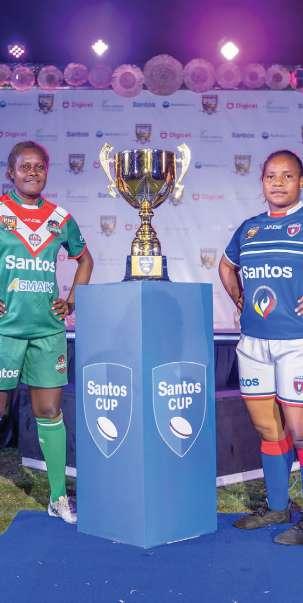



BIG THINGS 50
PNG’s national identity has evolved in many ways since independence. Here, Theresa Patterson picks 50 things that have influenced the country’s psyche, from key politicians to musicians, sporting people, newspapers, big resources projects, events, and even controversies.
GREAT PEOPLE, REMARKABLE EVENTS
AND THE STORIED INSTITUTIONS THAT HAVE SHAPED THE NATION

1
GRAND CHIEF SIR MICHAEL SOMARE
Widely acknowledged as the ‘father of the nation’, Sir Michael led Papua New Guinea to sovereignty as the country’s Chief Minister and was then appointed the first prime minister after independence. He served the nation in the top job three times – from 1975 to 1980, 1982 to 1985 and 2002 to 2011 – and was instrumental in the independence process. Former political colleague Dame Carol Kidu DBE AO said he was the right man at the right time for independence. “He had a unique ability to get a positive response everywhere he went.” Michael Somare was knighted, as well as having the title of Grand Chief bestowed upon him through PNG’s honours system. He passed away in 2021, with 20,000 mourners packing into Sir Hubert Murray Stadium for his state funeral, with thousands more spilling into the streets outside in a sign that he was much loved and respected by Papua New Guineans until the very end.
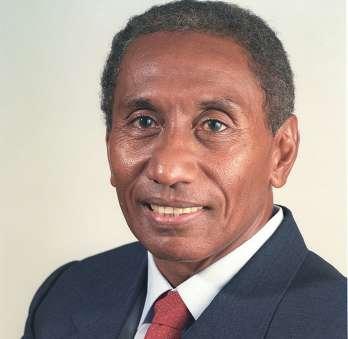
2SIR
JULIUS CHAN
Sir Julius is considered another of PNG’s founding fathers. He was the country’s second prime minister and served two terms in the top job, from 1980 to 1982 and 1994 to 1997. Sir Julius remains the country’s longestserving politician. He was elected to PNG’s pre-independence House of Assembly in 1968, and he was still a member of the National Parliament and the Governor of New Ireland Province when he passed away in January, 2025. At the time of his passing, Prime Minister James Marape said: “As we reflect on our journey (of independence), we must honour the legacy of great leaders like Sir Julius, whose vision, courage and leadership helped shape the PNG we know today.”
50 YEARS OF INDEPENDENCE
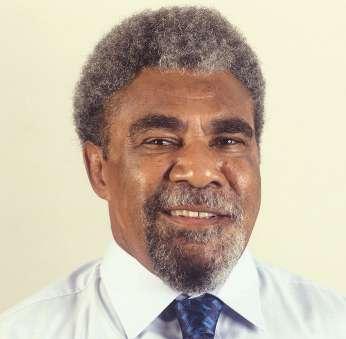
3SIR MEKERE MORAUTA
PNG’s seventh prime minister, from 1999 to 2002, has an enduring legacy as an economic and public sector reformer. He is known for marrying wise economics and business acumen with political administration, installing strict fiscal discipline and changes to the superannuation and financial sectors. He emphasised transparent governance, sustainable development, and prudent management of natural resources during a period of conflict at the time of the Bougainville crisis. His vision helped restore investor and lender confidence in PNG. One of his other key contributions was the Central Banking Act, which made the Bank of PNG independent.
4PNG’S PRIME MINISTERS
PNG has had eight prime ministers, some of them serving multiple terms and all of them leaving an indelible mark in the postindependence history of the nation. The PMs have been Sir Michael Somare, Sir Julius Chan, Sir Rabbie Namaliu, Paias Wingti, Sir William Skate, Sir Mekere Morauta, Peter O’Neill and the incumbent James Marape.


5PNG FLAG
Who would have thought a 15-year-old school student taking part in a nationwide design competition would have her entry selected as the national flag? The winning design by Susan Karike was formally adopted in 1971. The flag is divided diagonally with a yellow bird of paradise on a red background and the Southern Cross star constellation on a black background. Karike was encouraged to enter the competition by her art teacher Sister Joseph Mary at Sacred Heart Mission School on Yule Island in Central Province.
6KINA
ADOPTED AS LOCAL CURRENCY
Months before independence, PNG’s very own currency, the kina, was launched with banknotes in PGK2, PGK5 and PGK10 denominations. PGK20 and PGK50 notes were introduced in 1977 and 1990. When the kina was launched on April 19, 1975, it circulated alongside the Australian dollar, but the dollar ceased to be legal tender on December 31, 1975.
7PEOPLE’S HOUSE OPENS
PNG’s distinctive Parliament House (pictured left)– also called the ‘People’s House’ – is stylised as a modern maprik haus tambaran (traditional spirit house) and was officially opened in 1984 by Prince Charles. With its angular roofing and stunning, locally produced iconography on the front-facing wall, the architecture inspires pride in PNG culture and history, standing as a symbol of national identity. In looking for an appropriate design, two competitions were held – one exclusive to entrants from the Department of Public Works (DPW) and another open to all citizens. The winner was a concept submitted by DPW Director Cecil Hogan. Parliament House, which cost PGK23.4 million to build, is situated in a capitol nexus comprising Independence Hill, the National Court Complex, the National Library, and the National Museum and Art Gallery.
8NATIONAL
MUSEUM AND ART GALLERY
The museum, built in 1975 in the same year as independence and opened in 1977, holds thousands of objects from PNG’s 22 provinces, representing the country’s great cultural diversity.
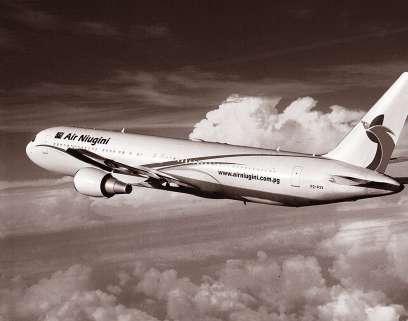
9GROWTH OF AIR NIUGINI
For a country with very limited roads and infrastructure, aviation has been a panacea. The launch of Air Niugini, PNG’s national airline, in 1973, proved crucial in opening previously hard-to-get-to parts of the country. Over the years, the flag carrier, then a lifeline only for domestic ports, has expanded its operations internationally and currently flies to nine international destinations and 24 domestic ports using various aircraft, including the Boeing 737 and 767, Fokker 70 and 100, Q400 and Dash 8. The Airbus A220 is the newest addition to the fleet of 24 aircraft.
10PNG AT THE UNITED NATIONS
As with most newly sovereign countries, PNG gained UN membership soon after independence. Membership in the UN family has afforded, among other things, access to support, security, legal protections and political recognition. PNG has actively participated in the UN’s annual climate change conference and in supporting observer missions abroad, particularly within its region. In 2024, at the UN General Assembly – the main decision-making body where all 193 member states are represented equally –Prime Minister James Marape spoke about several things, including religious intolerance, poverty due to climate change and geopolitical wars.
50 YEARS OF INDEPENDENCE

11THE PRINTED WORD
The media is crucial for nation-building as a bearer of essential information and a medium of democratic participation, so it was no surprise that the media landscape took off after independence. In 1993, The National newspaper was launched, competing with the dominant Post-Courier, which had been in circulation since 1969. Owned by Malaysian conglomerate Rimbunan Hijau Group, The National reportedly has a readership today of 372,000 and the Post-Courier 274,000. Other newspapers in circulation include The Wantok Niuspepa and The Sunday Chronicle – both printed weekly.
12FIRST COMMERCIAL RADIO ESTABLISHED
Radio is an important form of public communication in PNG where illiteracy rates remain high. Nau FM, the first of many commercial radio stations, was established in 1994, followed by Yumi FM in 1997 and Legend FM in 2011. All three belong to PNG FM Ltd, the largest media organisation in PNG in terms of reach. The state-owned National Broadcasting Corporation, established in 1973, also broadcasts around the country.
13FREE-TO-AIR TV
EMTV is a commercial television station that has become a household name in PNG since being launched in 1987. There have been multiple ownership changes since it started (it has been part of Telikom PNG since 2016). According to surveys, it is PNG’s most-watched network. The other stations include state-owned NBC TV and Digicel PNG’s TVWan.
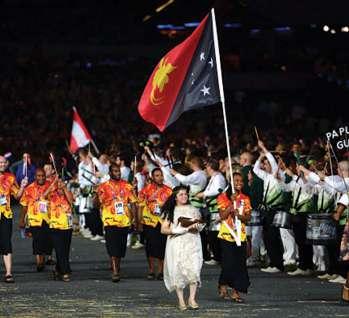
14PNG AT THE OLYMPICS
PNG has competed on the world sporting stage since the 1976 Olympic Games in Montreal, Canada. A team of six was sent to Canada that year and since then 61 PNG athletes have competed in eight sports at every summer Games, except the boycotted Moscow Olympics in 1980. No medals have been won yet, but PNG has performed strongly in boxing, weightlifting and swimming. Swimmer Ryan Pini and weightlifters Morea Baru and Dika Toua have been notable and exciting in their performances.
15DIKA
TOUA, STAR ATHLETE
One of PNG’s most decorated weightlifters and successful athletes, Dika Toua (pictured right) has consistently qualified for the Olympics since first competing in 2000 at age 16. She set a world record then as the first PNG female weightlifter and has since set another as the first female athlete to qualify for five Olympics, an impressive feat for a small country. In 2014, at the Glasglow Commonwealth Games, Toua won her first gold in the 53-kilogram weight class, where she lifted 193 kilograms, a Games record. She remains active in the sport, competing in the qualifiers for the 2024 Paris Olympics, and serving as the President of the PNG Weightlifting Federation, where she mentors aspiring talent. In 2022, she was inducted into the International Weightlifting Federation’s Hall of Fame.
16PNG AND THE SOUTH PACIFIC GAMES
PNG has proudly hosted the South Pacific Games three times – in 1969, 1991 and 2015 – demonstrating to the region that it can successfully deliver major events. More than PGK1 billion was invested in infrastructure and urban upgrades for the 2015 event, which significantly enhanced Port Moresby’s development and image as a sporting destination. The country finished first on the medal tally for the first time since 1991, inspiring the upcoming generation of athletes and reaffirming how important sport is to nation-building. The event also brought together 24 nations and provided an economic and tourism boost, leaving a lasting legacy. Part of this legacy includes the decision to launch a PNG National Rugby League (NRL) team by 2028.


There are plans for PNG to field a team in the Australian NRL in 2028. The team will play its home matches at the Sir Hubert Murray Stadium in Port Moresby, which will be refurbished to come up to NRL standards. Prime Minister James Marape has said the stadium is more than just a venue. “It’s a symbol of PNG’s passion for rugby
Proudly 100 per cent PNG-owned, the Ok Tedi mine, which began production in 1984, is one of the largest copper mines in the world. In 2024, it achieved an output of more than 100,000 copper tonnes, almost 270,000 gold ounces and over 900,000 silver ounces, generating a revenue of PGK5.7 billion (US$1.5 billion). As part of its expansion strategy, Ok Tedi announced in May that it will acquire the Misima Gold and Silver Project in Milne Bay. The mineral sector accounts for up to 25 per cent of PNG’s gross domestic product and up to 70 per cent of total exports.
INTRODUCTION OF THE INTERNET
With all the dazzling technology Papua New Guineans use today, it’s easy to forget the humble beginning of the internet in PNG. It started in 1997 with dial-up connections and special access at academic institutions. Main providers then were Daltron, Datec and through higher-education centres such as the University of PNG. Access to this information superhighway was prohibitive and confined mainly to urban centres, and even then just to organisations, not individual users. Today, PNG has its own national transmission network across the country run by PNG DataCo.
20DIGICEL PNG ARRIVES
In 2007, communications provider Digicel PNG started operating in the country, leading to an expansion in mobile phone usage and connectivity to many parts of rural PNG that had previously been inaccessible. The telco’s emergence came about after the Michael Somare-led Cabinet decided to open the PNG market to mobile phone services, introducing competition to the state-run Telikom PNG and its entity Bmobile. Network upgrades to 3G and 4G LTE occurred in 2011 and 2014, further improving PNG connectivity and enhancing digital services. In 2022, Digicel Pacific was bought by Australian telco Telstra, which has built new mobile towers connecting 80 per cent of PNG.
21VODAPHONE ARRIVES
Vodaphone PNG, a subsidiary of Fiji’s Amalgamated Telecom Holdings, launched in PNG in 2022, providing much-needed competition in the telecommunications space.
22CORAL SEA CABLE
The Coral Sea Cable, completed at the end of 2019, is PNG’s main international gateway to the internet. Funded at a cost of up to PGK305 million, the high-speed fibre optic submarine cable has significantly boosted PNG’s internet capacity by connecting it to Australia and the Solomon Islands. This transformative infrastructure has led to faster internet speeds and the potential for more affordable data services, helping to usher in the suite of mobile banking products and digital services that are now ubiquitous in the market.
50 YEARS OF INDEPENDENCE
23PNG LNG PROJECT
The US$19 million PNG LNG operation, led by ExxonMobil, is PNG’s first and currently only gas project. The project footprint stretches across Hela, Southern Highlands, Western, Gulf and Central provinces. Among the many benefits, 91 per cent of the 2700-strong workforce is Papua New Guinean; billions of kina in services and community development have been generated; and supporting businesses, including landowner companies, have thrived. Project construction began in 2010 and was completed ahead of schedule, with the first export sent to Japan in 2014 on the LNG vessel Spirit of Hela The project has provided PGK30.2 billion in economic benefits to PNG, according to Exxon Mobil.
24FINANCIAL SERVICES
PNG’s financial sector – comprising commercial banks, superannuation funds, second-tier lending institutions and the stock exchange – has been instrumental in stimulating economic growth through mobilising savings, resourcing investments, supporting businesses with products and enabling entrepreneurship. BSP Financial Group, founded in 1957, is the biggest commercial bank in the country. It operates an expansive network of branches and agencies, serving more than three million customers across PNG and seven other Pacific nations – making it the largest bank regionally. Like Kina Bank, ANZ and Westpac, it is investing heavily in digitisation, deploying new core banking systems and expanding digital banking products and online services. The Bank of PNG this year is also testing the digital kina, PNG’s first e-currency, stewarding PNG towards an inclusive, digital future with potentially more growth. In the last few years, new banks have been opening in PNG, including Credit Bank, Tisa Bank and the National Banking Corporation.
25THE
BOUGAINVILLE CRISIS
The Bougainville crisis from 1988 to 1998 was an armed conflict between separatist groups and the PNG government. It was fuelled by the desire for independence from PNG, land disputes and issues with the open-cut copper mine at Paguna. Locals believed the mine was causing environmental damage and resented the loss of their land. The conflict caused the closure of the mine. A peace agreement was reached in 2001, resulting in greater autonomy for Bougainville (it is now the Autonomous Region of Bougainville). The process of becoming independent is ongoing and must ultimately be ratified by PNG’s Parliament. The mine remains closed.
26THE SANDLINE AFFAIR
In 1997, Sir Julius Chan, then serving his second term as prime minister, was forced to resign after making a deal with a private military company, Sandline International, to end the Bougainville crisis. The Sandline solution was an attempt to solve a complex problem, and it was opposed by the PNG Defence Force commander, Jerry Singirok, who only discovered its existence after the mercenaries had arrived in PNG. Singirok, as a result, demanded Sir Julian’s resignation and was sacked, leading to Moresby-wide protests. It was the first time PNG – which had enjoyed only democratically elected governments since 1975 – came close to a military takeover.
27FIRST
OVERSEAS ACTION FOR THE PNG DEFENCE FORCE
PNG had a smooth path to independence; however, sovereignty wasn’t so easy for Vanuatu in 1980. Then known as the New Hebrides, the nation had been granted independence by Britain and France, but it had to contend with a rebellion on the island of Espiritu Santo. PNG was asked by the incoming prime minister, Walter Lini, to send troops to help and PNG prime minister Sir Julius Chan agreed to the request. It was the first time PNG troops were deployed overseas in a brief skirmish referred to as the Coconut War.
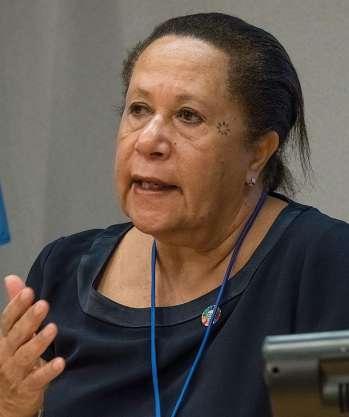
28FIRST WOMAN AS REGIONAL FORUM CHIEF
Dame Meg Taylor DBE (pictured above) – a lawyer and Harvard graduate –was appointed the Secretary-General of the Pacific Islands Forum in 2014. She was the first woman to hold the position, being reappointed in 2017 and serving until 2021. During her term, she focused on strengthening regional cooperation and climate change advocacy. She also held other significant titles, serving as the Ambassador to the US, Mexico and Canada from 1989 to 1994 and working as a senior officer at the World Bank.
29FIRST PNG MAN IN SENIOR COMMONWEALTH ROLE
Sir Anthony Siaguru KBE was a decorated and accomplished Papua New Guinean statesman, who in 1990 was recognised with an appointment as the Deputy Secretary-General of the Commonwealth Secretariat. The Secretariat is the main platform through which decisions of the 56 Commonwealth countries are managed and executed. Sir Anthony, a lawyer, Harvard graduate and Fulbright scholar, was the first PNG man to hold the job in the agency, playing a contributing role in ending apartheid in South Africa. He was also PNG’s first secretary for foreign affairs and trade, has held multiple ministerial portfolios, sat on the boards of major private companies, and was the founding chairman of anti-corruption NGO Transparency International PNG.
Kumul Minerals Holdings Limited (Kumul Minerals) is a company established and incorporated under the Companies Act 1997. Under the Kumul Minerals Holdings Limited Authorization Act 2015 (Kumul Act):
• We are authorised to operate as a commercial enterprise that principally participate in the mineral sector in Papua New Guinea and abroad.
• We are not an instrumentality of the State and our assets are not public assets.
• We are the nominee of the State to exercise the State option in new mining projects.
The core business of Kumul Minerals covers the entire value chain of the mineral sector. We are a player in the upstream, midstream, and downstream businesses of the mining industry.

Kumul Minerals Holdings Limited is the majority shareholder of Ok Tedi Mining Limited (OTML)a 100% nationally owned copper mining company that is located in the Western Province of Papua New Guinea. Kumul Minerals owns a 67% share in OTML.

The Government has welcomed Barrick Nuigini Limted (BNL) for partnership under an incorporated joint venture arrangement to mine Porgera once more. First gold, following the resumption of operations at the mine, was poured in January, with Kumul Minerals Holdings Limited owning a 36% share in New Porgera Limited.

KUMUL MINERALS HOLDINGS LIMITED
Kumul Minerals Haus, Port Moresby, Papua New Guinea
PO Box 2032, PORT MORESBY 121, NCD , Papua New Guinea

30THE
POPE, THE CHURCH AND THE SAINT
To celebrate a century of the Catholic Church’s presence in PNG, Pope John Paul II (pictured left) visited the country for the first time in 1984, bearing a message of unity, faith and peace. In 1882, Missionaries of the Sacred Heart arrived in PNG, determined to evangelise what was then a mostly animistic and ancestor-worshipping people. Today, Christianity – in its many forms – remains a strong influence, being written into the constitution and serving as the dominant religion in PNG. In 1995, the pontiff arrived again, this time to honour the beatification of Peter To Rot, a devout local Catholic who, during World War 2, faced persecution from the Japanese and ultimately death. Earlier this year, Pope Francis approved To Rot’s canonisation, paving the way for him to become the first PNG saint.

50 YEARS OF INDEPENDENCE
31RABAUL ERUPTION IN 1994
The twin volcanoes of Tavurvur and Vulcan (pictured right) erupted on September 19, 1994, all but destroying the town as it was smothered by volcanic ash. The town had been evacuated but five people were killed (far less than the 507 who died in the 1937 eruption). After the 1994 eruption, Kokopo was named the new (and current) provincial capital.
32AITAPE TSUNAMI
The Aitape tsunami on July 17, 1998, in West Sepik Province killed about 1600 people, making it one of the deadliest catastrophes in PNG history. It was triggered by an earthquake, which was soon followed by waves of amazing height and speed that lasted about 30 minutes. Four villages were caught in its wake, with 10,000 displaced inland from the Aitape coast. Because of the lack of preparedness and awareness of tsunamis, many villagers were caught off guard, resulting in loss of life.

LIFE INSURANCE MATTERS
33LANDSLIDE IN ENGA
The most recent catastrophe to hit PNG was in May 2024 when a landslide in Yambali village in Enga Province swept away more than 100 homes, a health facility and part of the main roadway, unsettling thousands of people and killing nearly 700. Many more required evacuation due to further risk of instability, with the PNG government mobilising alongside international partners and aid organisations to support impacted communities. The event drew international attention, including from the then US President Joe Biden, who said: “Our prayers are with all the families impacted by this tragedy.”

50 YEARS OF INDEPENDENCE
34PNG FILM
Driven early on by the National Film Institute, PNG’s film industry has produced culturally rich films such as Tinpis Run and impactful documentaries such as First Contact. However, the 1990s saw a film decline due to limited funding. Momentum has renewed recently, with the National Cultural Commission supporting films like the sequel to Ples Man while pushing production of at least 20 local features by 2027. International collaborations are on the rise, including the Papa Buka co-production with India. Film is a medium that can capture the oft-neglected intangible culture – the set of cultural practices, oral traditions and social beliefs characterising a society, in contrast to tangible culture, expressed through carvings and masks.
35ROBINSON CRUSOE
Because of its pristine tropical surrounds, PNG was selected as the location for the 1997 Hollywood movie Robinson Crusoe, starring Pierce Brosnan. The fictional Crusoe sets sail from Scotland and is shipwrecked in PNG where he befriends an indigenous man, played by PNG actor William Takaku, learning about him, his culture and his origins. While the movie didn’t make a dent in film history, it inspired local pride, as it was one of the few times PNG was featured in a major Hollywood production. Up until then, PNG’s cinematic appearances occurred mainly in documentaries such as First Contact (1983) and Black Harvest (1992), though there were notable feature films like Marabe (1978) and Tukana (1982).


50 YEARS OF INDEPENDENCE
36HOSTING APEC 2018
APEC 2018 was a crucial moment for PNG, marking the first time it had hosted a major global economic summit. With world leaders in attendance – including China’s then President Xi Jinping and US Vice President Mike Pence – the event raised PNG’s international profile while also testing the strength of its security operations, which involved about 2000 foreign military officers. The planning paid off, with the event being a success: diplomatic and trade ties with leading economies were strengthened and PNG positioned itself as a strategic player in the Asia-Pacific region – a reputation that continues to stand, if the current defence treaty negotiations with Australia are anything to go by. Port Moresby also got a facelift, with upgrades to roads, airports, and the construction of the famous APEC Haus (pictured left).
37INCREDIBLE CREATURES
Fanged frogs, huge rats, grunting fish, camouflaged geckos and tube-nosed fruit bats. Sounds like creatures from a fantastical movie, right? But they are very much true to life – indeed, to PNG life. At Mount Bosavi in the Southern Highlands Province in 2009, scientists shooting a BBC docuseries called Lost Land of the Volcano made discoveries of these animals, and at least 35 other species of fauna and flora. Part of Mount Bosavi was already protected as a UNESCO World Heritage Site but the discoveries further reinforced the uniqueness and isolation of PNG ecosystems.
38BIRTH
OF THE LOCAL MUSIC INDUSTRY
Long known as the mainstay of PNG and South Pacific music, PNG’s first recording studio, CHM Supersound, was launched in 1979 by Raymond Chin, son of business mogul and second-generation migrant from China Chin Hoi Meen, the founder of what is now the CHM Group. Raymond, who played with the band Paramana Strangers, helped create an iconic studio with a massive catalogue of 15,000+ albums and recording strong artists such as Sanguma and the Barike Band. The Barike Band is well-known for the iconic song Wan Kantri (One Country ), released in 1991 and repeatedly played during independence day celebrations. In 2024, the band reunited, with new members on board, to work on remasters of their classics.

50 YEARS OF INDEPENDENCE
39FIRST PNG CARDINAL
Sir John Ribat MSC KBE (pictured right) is PNG’s first cardinal. He was appointed in 2016 by the late Pope Francis, after serving as Bishop of Bereina and Archbishop of Port Moresby for several years. Originally from East New Britain, he was a member of the Missionaries of the Sacred Heart of Jesus and was ordained in 1985. He is known for speaking up on climate change and social justice issues, representing the voices of vulnerable community members. He was knighted in 2016.
40JUSTIN WELLINGTON’S VIRAL RISE
PNG musician Justin Wellington hit the big time in 2021 when Sony Music released his cover of the 1953 song Iko Iko. The single was a collaboration with Solomon Islands group Small Jam and currently has 176 million views on YouTube. His other hits include Island Moon (2021), which has four million views on YouTube; and Much Love (2005), which has 150,000 views.
41Captains of industry
Many Papua New Guineans have excelled in business over the nation’s 50 years – far too many to mention here. However, some notable pioneering entrepreneurs include retailer Sir Brian Bell, the Constantinou family, Boroko Foodworld’s Sir James Tjoeng, CPL Group’s Sir Mahesh Patel, engineer Frank Kramer, tourism pioneers Bob Bates and Sir Peter Barter, Mapai Transport’s Jacob Luke, the Chow family, Papindo Group’s Sir Tjoekander Tjandra, Seeto Kui’s James Seeto and CHM’s Chin Hoi Meen. Notable high-achieving PNG professionals include Sir Henry Kila (insurance), Isikeli Taureka (resources), Mel Togolo (resources), Ian Tarutia (superannuation), Leon Buskens (superannuation/resources), MRDC’s Augustine Mano and Kumul Petroleum’s Wapu Sonk. Successful PNG businesswomen include IBBM’s Susil Nelson-Kongoi, Lesieli Taviri (resources and banking), Nuni Kulu (banking), Karo Maha (law/mining) and Janet Sios (healthcare). There are many more.

42THE
CROCODILE PRIZE: PLATFORMING PNG LITERATURE
With a country as orally driven as PNG, much can be lost in translation from generation to generation. That’s why initiatives like the Crocodile Prize are important, capturing PNG mythoi in a creative, more permanent form. The Crocodile Prize was PNG’s national literary competition, established in 2010 to encourage and celebrate local writing. Named after The Crocodile, the first novel (written in 1970) by PNG author Vincent Eri, the competition promoted creative expression and literacy. As interest increased, as well as support from businesses and government agencies, the yearly anthology published by the competition grew to more than 200 pages, peaking in 2014 at 500+ pages, written by 135 writers. While the competition ended in 2016 due to a lack of funds, and administrative issues, the fruits of the endeavour arguably live on: in 2022 Baka Bina became the first Papua New Guinean to have his Tok Pisin-written story shortlisted in the Commonwealth Short Story competition, which takes submissions for the best unpublished fiction from the Commonwealth’s 54 member countries.
43DAME
CAROL KIDU
Dame Carol Kidu – the most accomplished female politician in PNG – is synonymous with social justice and women’s rights, given she was a tireless champion for both during her 10-year tenure as the only woman in parliament from 2002 to 2012. While serving as Minister for Community Development, she took a stance on child protection, disability- and elderly-centred care, and HIV/AIDS awareness. Among other things, she introduced a National Gender Policy and the Family and Sexual Violence Action Plan. See our interview with Dame Carol on page 14.
44HER EXCELLENCY WINNIE KIAP
Quietly humorous and charming in her worldliness, Her Excellency Winnie Kiap CBE is one of the best-known faces of modern ambassadorship in PNG. Serving as the High Commissioner to the UK from 2011 to 2022, with accreditation to Egypt, Israel, Cyprus, South Africa and Zimbabwe, she was named Diplomat of the Year in 2018 by London magazine Diplomat in recognition of her outstanding nation-building contributions including representing PNG’s interests and serving as chair of the Commonwealth Secretariat Board of Governors. She is the first Pacific Islander to receive the award. A trailblazer, she has also accumulated other firsts: being the first female – and longest-serving –secretary of PNG’s National Executive Council; and the first Papua New Guinean to be elected as the Chair of the Commonwealth Foundation.
45ABILITY TO LAUGH AT OURSELVES
Literature is one avenue of cultural criticism; another is comedy. One of the pioneers of this genre is PNG comedian Kanage (real name Alphonse Dirau) who used ‘bumbling bushman’ humour for his comedy routines that were popular in the 2000s. His contemporaries have added to this in their own way, creating rich skits full of cultural references, local turnsof-phrase and hyperbolic acting, tastefully exaggerating PNG mannerisms to entertain and, perhaps, to educate. Some well-known comedic acts are Tuli Mahn and Emmanuel Tipi (aka KabbageGang) who have 279,000 and 260,000 followers on Facebook, respectively. Elton Kili, from Port Moresby, and Eddie Wapona, from Goroka, are other key figures in PNG comedy.

50 YEARS OF INDEPENDENCE

46TOLAI WORLD MUSICIAN GEORGE TELEK
A gift to PNG’s music scene, beloved musician George Telek (pictured above) is known for his unique island harmonies combining his soulful singing, traditional Tolai music and Pacific pop instrumentality. He has been celebrated at the Australian Recording Industry Association (ARIA) Music Awards with nominations – and a win – for Best World Music Album, and Best Indigenous Release in 1997 for his debut solo album Telek. British newspaper The Times voted his second album Serious Tam (for which he did an international tour) the Best Pop Album of 2000. The Sunday Times in the UK nominated his 2010 album Akave as Pop Album of the Year.
47COFFEE, COCOA AND MORE
PNG is known overseas for its rich agriculture, which today is a major part of its economy and international trade, accounting for up to PGK2.4 billion in export revenue annually. Blending traditional farming practices with a modern global reach, PNG signed a landmark deal in 2024 to export unroasted coffee directly to China and later shipped its first Highlands-grown coffee from Jiwaka Province to South Korea – impressive firsts that have opened more markets for farmers. Meanwhile, PNG has also become the world’s fifth-largest vanilla producer, with East Sepik farmers securing export contracts at a European Union-supported food and beverage expo in Singapore in 2024. Discussions between West Sepik cocoa farmers and potential buyers from China, Vanuatu and Singapore also ensued, further affirming PNG as an emerging agricultural producer.
48THE ROONEY AFFAIR
In 1979, Minister of Justice Nahau Rooney – one of only three women elected to PNG’s first post-independence Parliament in 1977 – was sentenced to eight months in jail for contempt when the Supreme Court ruled that she had interfered in the working of the judiciary in a landmark deportation case. Only the intervention of then Prime Minister Michael Somare prevented her from serving the sentence handed down by the court. Governor-General Bob Dadae, speaking on her passing in 2020, said she had “set the benchmark for women at a time when women’s role in society was relegated to the home and not in decision making for the nation as a politician and minister of state.”
49SME BOOM
In recent years, PNG has seen a surge in small and medium enterprises (SME), driven by government support, local entrepreneurship, financial literacy training and a push for economic diversification. The 2016 SME Policy and Master Plan 2016–2030 aims to register 500,000 SMEs and two million jobs by 2030, with seed funding support from banks like Bank of South Pacific and National Development Bank. Exciting sectors for SME owners include agribusiness, retail and services, given rising digitisation and growing consumer demand for local products. The SME industry is increasingly viewed as critical to inclusive and sustainable development in the country, helping to create job opportunities, particularly for rural populations.
50THE PNG MIDDLE CLASS
PNG’s middle class has emerged since independence, shaped by opportunities in education, urbanisation, and formal employment in government, resources and the growing private sector. While many in the class started in professions such as the public service and teaching in the early years of PNG’s nationhood, they later moved into business, banking, law, medicine, aviation and small-scale entrepreneurship, creating a diverse middle-class base. The emergence of this group is indicative of the new pathways Papua New Guineans enjoy in areas such as employment, home ownership and personal wealth.
PICTURE: SIMON SWALE

How and where to
Theresa Patterson reports on the events that are being rolled out in Port Moresby, the rest of the country, and overseas for PNG’s 50th anniversary of independence, as well as cultural festivals that will continue until the end of the year.
Port Moresby has been buzzing with cultural events in the lead-up to Independence Day on September 16, with much more to come across the entire country as the big day approaches.
Events in the capital have already included community parades, as well as colourful international shows put on by Samoan fire dancers, the popular Solomon Islands reggae band Onetox, and the haka performed by a troupe of Maori performers.
Other migrant groups have also been out in force, treating crowds to street food and displays of craft and bilas (traditional wear).
The pre-independence program has set high expectations for the golden jubilee celebrations, which will culminate on September 16 with a flag-raising ceremony, singing of the national anthem, fireworks and a state dinner for visiting dignitaries and leaders.
PNG’s 50th anniversary has even been noted overseas, with the Metropolitan Museum of Art in New York hosting a PNG installation that has captivated American audiences.
Speaking to The New York Times about the exhibition, Prime Minister James Marape said: “Our art is a vibrant representation of our history, diversity, and identity, and it deserves recognition on a global stage.”
The New York exhibition has been driven by the Mariwai Project, an artistic and cultural exchange program.
Across PNG, about 90 cultural festivals are planned this year, according to the National Cultural Commission. The PNG Defence Force (PNGDF) also has a line-up of events.
In PNG’s second-largest city, Lae, celebrations featuring fireworks, live music, local schools, and a parade of floats are planned, with a revived Sir Ignatius Kilage Stadium one of the focal points. A flyover by Australian jets is also planned.
Meanwhile, local member John Rosso MP, through the supportive business houses of Lae, has bought more than 10,000 50th anniversary T-shirts for 27 government schools to distribute among students.
Here’s a countrywide look at some of the celebrations coming up.
YUMI STAP WANTAIM (‘WE ARE TOGETHER’) UNTIL SEPTEMBER
This program honours 50 years of PNG–Australia relations and features concerts, art displays, academic seminars and sports events at various venues around Port Moresby. yumistapwantaim.com
REPENTANCE PRAYERS
DURING AUGUST
During the month of Repentance Day, which falls on August 26, prayer ceremonies will be held regularly in Port Moresby.
SEPIK RIVER CROCODILE & ARTS FESTIVAL
AUGUST 5–7
A three-day event, this festival is one of East Sepik’s most popular, taking place in Ambunti. The festival includes storied performances, crocodile-inspired masks, dazzling bilas, ritual enactments and unique art and craft.

PICTURES: JEFFREY SIMON, NATIONAL CULTURAL COMMISSION, MINISTRY OF TOURISM ARTS & CULTURE
50 YEARS OF INDEPENDENCE
celebrate

Across PNG, about 90 cultural festivals are planned this year.

MOUNT HAGEN SHOW
AUGUST 14–16
One of the oldest festivals in PNG – it predates independence – the show is staged at Mount Hagen’s Kagamuga Showground. It features a breathtaking range of performances from local cultural groups as well as others from as far away as Bougainville.
VISION CITY SHOWCASE
AUGUST 18–SEPTEMBER 16
PNG’s largest mall is staging art exhibitions, cooking demonstrations, fashion shows, dance contests, dress parades and screening PNG films such as Tinpis Run visioncitypng.com
VISITING MILITARY
FIRST WEEK OF SEPTEMBER
The PNGDF will host military from 10 nations: the US, Australia, New Zealand, France, India, Japan, the UK, Fiji, Tonga and Vanuatu. Soldiers, sailors, pilots and bands will come together. facebook.com/pngdefenceforce
SHIPS OPEN FOR PUBLIC VIEWING
SEPTEMBER 2–3
To celebrate PNG’s maritime heritage, the ships of partner navies will berth at the Old Container Wharf along Champion Parade for public viewing. facebook.com/pngdefenceforce
FLEET REVIEW
SEPTEMBER 4

There will be artillery fire when 10 ships sail past the south-western end of APEC Haus for review by the Governor-General from 10am to midday. A live narration of the review will take place. facebook.com/pngdefenceforce
MILITARY TATTOO
SEPTEMBER 5–6
The PNGDF and guest militaries will deliver a program of army bands, drills, cultural shows, parachutists and fireworks from 5.30 to 8:30pm each night at Sir Hubert Murray Stadium. Ticketed entry. facebook.com/pngdefenceforce
ELA BEACH AIRSHOW
SEPTEMBER 6
The PNGDF Air Transport Wing, partner airforces and Air Niugini will put on an airshow from 10am to midday. facebook.com/pngdefenceforce
PNG on show at the Mount Hagen Show (left); at the Metropolitan Museum of Art in New York (above); and waving the flag (below).
PICTURE: THE MARIWAI PROJECT
50 YEARS OF INDEPENDENCE
AIRCRAFT DISPLAY
SEPTEMBER 7
From 9am to 3pm, there will be a variety of aircraft on display at the PNGDF Air Transport Wing headquarters at Jacksons Airport. facebook.com/pngdefenceforce
PORT MORESBY INDIGENOUS LANDOWNER (MOTU KOITABU ASSEMBLY) 50TH
ANNIVERSARY PRAYER DAY
SEPTEMBER 7
Walk alongside the capital’s indigenous landowners as they pray for the jubilee anniversary, promenading from Ela Beach to Sir Hubert Murray Stadium. The program ends with a free church service at the stadium.
AMAZING PORT MORESBY UNITY PARADE
SEPTEMBER 12
This float parade by business houses and cultural groups will journey from Murray Barracks to Ela Beach. There will be markets at Ela Beach that will continue during the weekend.
amazingportmoresby.com
AMAZING PORT MORESBY FESTIVAL
SEPTEMBER 12–16
In collaboration with the Tourism Promotion Authority, there will be independence events at Ela Beach, Murray Barracks and Unagi Oval. The Festival of a Thousand Tribes will be held, with the University of Papua New Guinea and Pacific Adventist University also hosting their cultural shows.
amazingportmoresby.com
PASIN TUMBUNA
SEPTEMBER 13–14
There will be presentations in sago-making, bilum -making, claypot-making and local food preparation at the Port Moresby Nature Park. portmoresbynaturepark.com.pg
FLAG-RAISING, SINGING, FIREWORKS AND A GOVERNMENT DINNER
SEPTEMBER 16
Independence Boulevard will brighten with a ‘PNG 50’ formation made by thousands of students, a flag-raising ceremony and the reverent singing of the national anthem with the Prime Minister and other VIP guests in attendance.
The Ministry of Foreign Affairs said early this year that King Charles III is expected
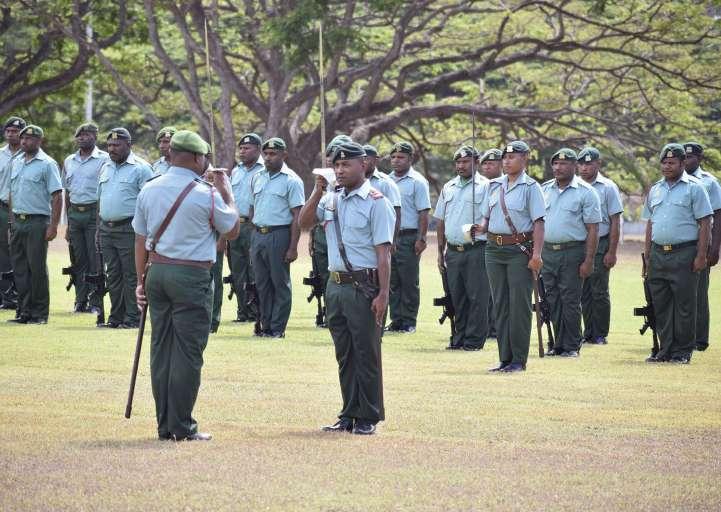
to be one of the delegates, but this had not been confirmed when Paradise went to press. It’s worth noting the King already recognised PNG’s 50th year in a small way in April with the launch of a new aircraft for Mission Aviation Fellowship, a rural aviation organisation that operates in the most remote parts of PNG, delivering aid and development.
The Prime Minister’s dinner – still to be confirmed when Paradise went to press for either September 15 or 16 – will also be held, with the day culminating with fireworks.
GOROKA SHOW
SEPTEMBER 19–21
One of the most established and well-known shows in the region, this year’s event will be the 69th iteration. Expect vibrant colours, ancient choreographies, detailed ensembles and transportive melodies. The show brings together different ethnic groups, including the famous clay-masked Asaro Mudmen. There are even modern twists like an exhibition of vintage cars.
NATIONAL KENU & KUNDU FESTIVAL
NOVEMBER 3–5
An iconic festival in any calendar year, let alone the jubilee independence year, this show
features the much-anticipated kenu (canoe) race between traditionally warring tribes. Communities from about 600 islands in Milne Bay will gather in Alotau to demonstrate their seafaring prowess, as well as other maritime skills including fishing and the construction of boats. All this is set to the paced beating of kundu drums and sing-sings while local artisans, regionally famous for their woodwork and carvings, sell their wares.
CAROLS BY THE SEA
DECEMBER 14
Festivities will wind up with more music at Ela Beach. Artist announcements had not been made when Paradise went to press, but in previous years there have been choir groups, string bands, and local artists such as Danielle and Mal Maninga Kuri.
Event details and dates were accurate at the time of going to press, but for updates, possible changes to programming or new events see Amazing Port Moresby facebook.com/ profile.php?id=61572736064368, the PNG Defence Forcefacebook.com/ pngdefenceforce or the National Cultural Commission facebook.com/ profile.php?id=100075951297275.
The PNG Defence Force will be front and centre in many independence activities in Port Moresby.























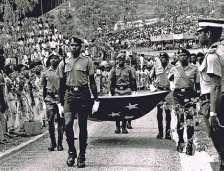





























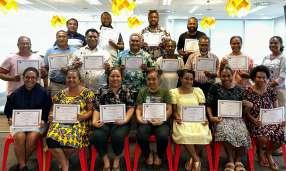





HOW THE NATION SHAPES UP
50 YEARS AFTER INDEPENDENCE

PNG is one of the most culturally diverse countries in the world, made up more than 800 languages and 22 provinces. In this guide, Paradise presents a snapshot of the key attractions in each province.
50 YEARS OF INDEPENDENCE
AUTONOMOUS REGION OF BOUGAINVILLE
CAPITAL BUKA
9318 SQUARE KILOMETRES
HOW FAR FROM PORT MORESBY? 960 KILOMETRES
With mist-shrouded mountains, belching volcanoes, palm-fringed beaches and tropical islands, most of Bougainville is made up of two main islands: the larger main island after which the region is named; as well as Buka, separated by the ‘passage’, one of the fastestrunning currents in the world.
The region encompasses smaller atoll chains with rich fishing waters. Bougainville has its own time zone: it is one hour ahead of elsewhere in PNG.
THINGS TO SEE & DO
• World War 2 buffs will have a field day taking in the relics of war. A must-visit is the downed plane of Japanese commander Marshal Admiral Isoroku Yamamoto near Buin.
• Arawa housed the families of the mostly Australian miners at the Panguna copper mine. It was purpose-built in the 1960s to resemble any small town in Australia. Check out this timepiece of a town and see bits of old Australiana.
• Lace up your boots and hike the Numa Numa Trail across the spine of Bougainville Island, taking in thick jungle and Mount Balbi.
• Cool off with some snorkelling and swimming in some of the sun-kissed islands just off Buka. Hotels can arrange transport.
SOMETHING SURPRISING
Bougainville was home to the first state-of-origin rugby league matches in PNG. Soldiers from Queensland and NSW played two games in Torokina in 1945.
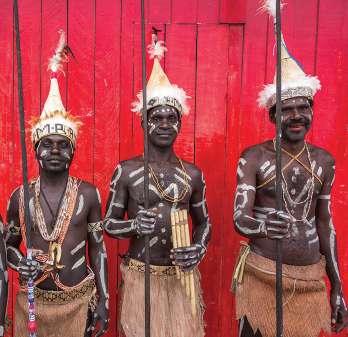

CENTRAL PROVINCE
CAPITAL Port Moresby
29,998 SQUARE KILOMETRES
Most people arriving in Papua New Guinea will find themselves in the nation’s capital city, Port Moresby, in Central Province. The capital has its attractions – among them the weekend markets, the Port Moresby Nature Park and the National Museum and Art Gallery – but the city is also a springboard to other parts of this province, which includes mountains, river deltas and islands.
The starting point for the famous Kokoda Trail is at Owers’ Corner, about 60 kilometres from Port Moresby. It’s possible to do a day trip to Owers’ Corner, via the lush Sogeri Plateau, and to visit the Bomana war cemetery at the same time. The cemetery is the resting place of 3824 Anzacs.
THINGS TO SEE & DO
• Tackle the 96-kilometre Kokoda Trail over the rugged Owen Stanley Range into Oro Province. The trek takes 5 to 10 days, (depending on where you start and finish) and requires a high degree of fitness. See www.kokodatrackauthority.org for a list of licensed tour operators.
• Go on a day trip, or stay overnight, at Lion, Manubada, Lolorua, Gemo, Fisherman’s or Idiha islands. All are close to Port Moresby, but you’ll need local knowledge, so a good starting point may be your hotel concierge.
• There’s good diving at the reef behind Fisherman’s Island, near Port Moresby.
• Loloata Island Resort is 40 minutes from the airport, or if staying in town there are several excellent hotel choices.
SOMETHING SURPRISING
Central people still build lagatoi (traditional sailing craft) as they have done for centuries for the great Hiri trade voyages. Join locals in celebration of this tradition around September each year at Port Moresby’s Hiri Moale Festival.
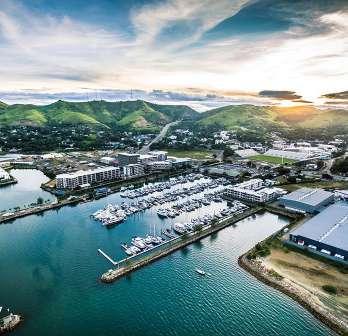

The distinctive traditional headwear worn in Bougainville (left and above right); the provincial flag (map inset).
The harbour at Port Moresby (above right).
50 YEARS OF INDEPENDENCE
CHIMBU PROVINCE
CAPITAL KUNDIAWA
6112 SQUARE KILOMETRES
HOW FAR FROM PORT MORESBY? 432 KILOMETRES
The terrain of this province consists of mountains, isolated ravines and rock formations covered in rainforest vegetation and dotted with wildflowers. It all converges around the highest peak in the land, Mount Wilhelm. At 4509 metres above sea level, this big boy comes complete with hauntingly beautiful lakes, mysterious caves, snowfalls, and majestic views for kilometres when not shrouded in chilling highland mists. The bustling commercial and administrative centre of Kundiawa perches on a mountainside beside the Chimbu River.
THINGS TO SEE & DO
• Take on the challenge of the trek up Mount Wilhelm. It passes through traditional villages, lakes, dense forest and rocky slopes before reaching the summit. Physical fitness, cold weather gear and a guide are recommended.
• Betty’s Lodge at the foot of Mount Wilhelm is a great place to base yourself for the trek, or to go birdwatching.
• There are limestone caves near Kundiawa. Guides are recommended and can be arranged in Kundiawa.
SOMETHING SURPRISING
Chimbu, also pronounced ‘Simbu’, is an expression of delighted surprise in the Kuman language. Australian explorers into the highland interior called the place Chimbu after hearing locals say ‘simbu’ repeatedly when they first met.


EASTERN HIGHLANDS PROVINCE
CAPITAL GOROKA
11,157 SQUARE KILOMETRES
HOW FAR FROM PORT MORESBY? 360 KILOMETRES
In the Asaro Valley of the Eastern Highlands are the famed Mudmen. Clad in ivory-white paint, elongated bamboo fingers and vicious-looking masks, the Mudmen captivate onlookers with eerie performances impersonating ghosts emerging from jungle mists. As legend goes, this was once a war tactic used to inflict terror and demolish confidence in unsuspecting enemies before attack. Nowadays, the province prides itself on being peaceful and welcomes many visitors. Having huge provincial boundaries, the landform varies from stretches of lush valleys and emerald rolling hills to precipitous mountain ranges and robust rivers.
THINGS TO SEE & DO
• Experience one of the biggest cultural festivals in PNG at the annual Goroka Show each September where diverse groups (the Asaro Mudmen among them) perform song and dance.
• Pick up traditional souvenirs at the Bilum and Craft Market along Elizabeth Street in Goroka.
SOMETHING SURPRISING
With an average temperature of 19˚C and 69 per cent humidity, Goroka has a perpetual spring climate with plenty of sunny days and cool nights.


Traditional dress seen in Chimbu Province (above right).
Visitors taking photos at the Goroka Show (above right).

50 YEARS OF INDEPENDENCE

EAST NEW BRITAIN PROVINCE
CAPITAL KOKOPO
15,816 SQUARE KILOMETRES
HOW FAR FROM PORT MORESBY? 750 KILOMETRES
East New Britain is a tourism hot spot, known for active volcanoes, the Baining fire dancers, war history, idyllic islands and the annual Mask Festival in July. In 1994, a volcanic eruption devastated Rabaul, burying it in volcanic ash. It has since rebuilt, however after the disaster the province’s capital was shifted to Kokopo, about 30 kilometres down the road.
THINGS TO SEE & DO
• Visit the hot springs at the foot of smoking Mount Tavurvur, or climb to the top. It’s a short but gut-busting scramble on loose shale. Most hotels will arrange tours.
• Try paiaman peanuts, roasted or fermented in cocoa driers and sold at the markets.
• Set the alarm for an early morning boat trip to see hundreds of spinner dolphins. Kokopo Beach Bungalow Resort and Rapopo Plantation Resort run tours.
• Take in some war history with visits to the Kokopo War Museum, the bunker of Japanese commander Marshal Admiral Isoroku Yamamoto and the Bita Paka war cemetery. Most hotels will arrange tours.
• Take a day trip by boat to the Duke of York Islands (most hotels will arrange).
SOMETHING SURPRISING
Rabaul fell to the Japanese military in 1942 and became the main base of Japanese military and naval activity in the South Pacific during World War 2.


War games: children playing at Kokopo War Museum (top); Mount Tavurvur (right).

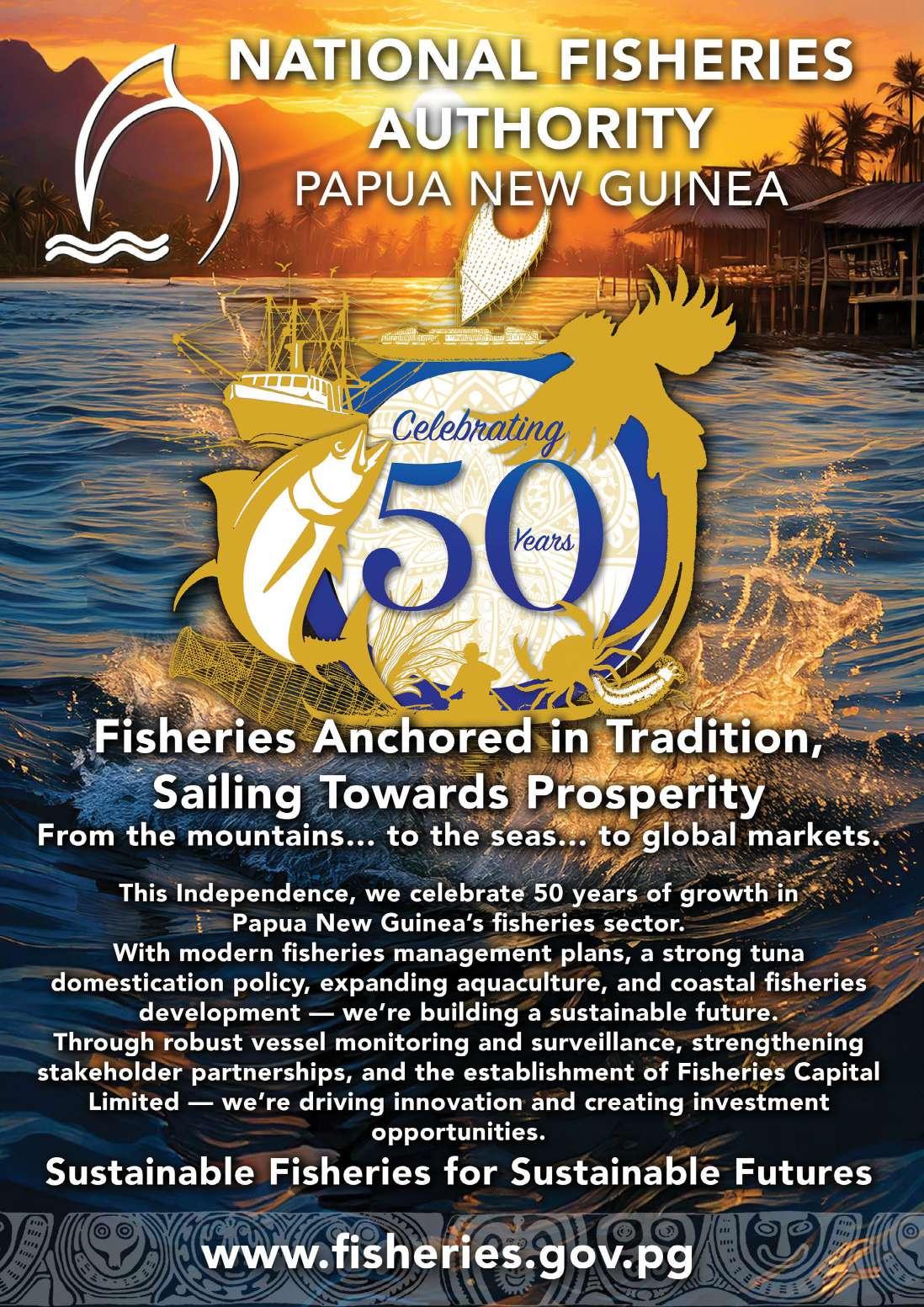

50 YEARS OF INDEPENDENCE
EAST SEPIK PROVINCE
CAPITAL WEWAK
43,426 SQUARE KILOMETRES
HOW FAR FROM PORT MORESBY? 760 KILOMETRES East Sepik Province is a wonder of mountains, islands, beautiful beaches and great river systems. Coupled with this stunning scenery is the province’s rich history and traditional cultures rooted in deep folklore. Among the province’s customs is crocodile scarification, a painful initiation ceremony in which young men have their skin cut so the scars heal and look like crocodile scales. The province is dominated by the mighty Sepik River, which flows 1126 kilometres from the source to the sea, providing an important cultural link for its people.
THINGS TO SEE & DO
• Attend the annual Crocodile Festival at Ambunti, a three-day cultural celebration usually held during the first week of August. You can see crocodile scarification and initiation tattoos on young men, traditional dance performances and live crocodile encounters.
• Visit the World War 2 memorial at Cape Wom, 14 kilometres outside Wewak, the site of the Japanese surrender in 1945.
• Take a motorised canoe trip on the Lower Sepik River from Angoram to Moim, Kambaramba, Kambot or the Murik Lakes for birdwatching.
• Ambunti, on the Middle Sepik River, is regarded as the region’s cultural centre. From Ambunti, you can travel by motorised canoe, staying in village guesthouses.
SOMETHING SURPRISING
Crocodile scarification was a dying art form, however it has had a revival, with Sepik men seeking to establish their place in local communities instead of the wider world.


ENGA PROVINCE
CAPITAL WABAG
11,704 SQUARE KILOMETRES
HOW FAR FROM PORT MORESBY? 609 KILOMETRES Explorer and patrol officer James Taylor saw Enga in 1938 and described it as a “garden land”. He wrote: “We were in the heart of the valley, one of the most beautiful in New Guinea, if not in the world.” Taylor’s description still holds true 80 years on. Enga, which was carved off from the neighbouring Western Highlands Province around the time of independence in 1975, is in the northern-most part of the highlands. There are mountains higher than 2000 metres, wild rivers, lush valleys, waterfalls, striking birdlife that attracts twitchers from around the world and glorious orchids.
THINGS TO SEE & DO
• The rich culture of the province comes alive during the annual Enga Cultural Show in August.
• Peek at the Engan way of life at the Take Anda cultural centre in Wabag. Photographs, paintings and artefacts – including bird of paradise headdresses and fighting shields – can be seen.
• Go to Kaiap, a village near Wabag, where the rare orchid dendrobium engae was discovered.
• Breathe in the cool air at Sirunki, the highest village in the province at 1220 metres, with views of Lake Sirunki in the valley below.
SOMETHING SURPRISING
Enga is the only place the rare orchid species dendrobium engae is found. The plant is depicted on the provincial flag.
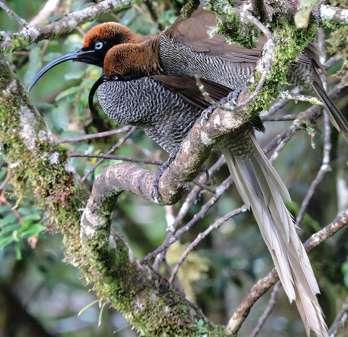

Enga Province has striking bird life (above right).
Crocodile scarification on an East Sepik man (above right).

Together, we’ve grown stronger...
Celebrating Independence. Celebrating Progress.
As Papua New Guinea marks 50 years of Independence, BSP proudly reflects on our own journey - serving the people of PNG since 1957. We’ve grown with the nation, standing beside our communities through every challenge and triumph.
BSP is proud to be part of PNG’s story - supporting progress, empowering communities, and nation building for over 68 years.

For over 50 years, BSP has stood shoulder to shoulder with the people of Papua New Guinea, committed to delivering inclusive nancial services and investing in national development.
We’re proud to serve Papua New Guinea through our
40+ Branches
320+
10,950+
40+
350+ Agents
3,000+
Sub-branches Staff employed by BSP PNG

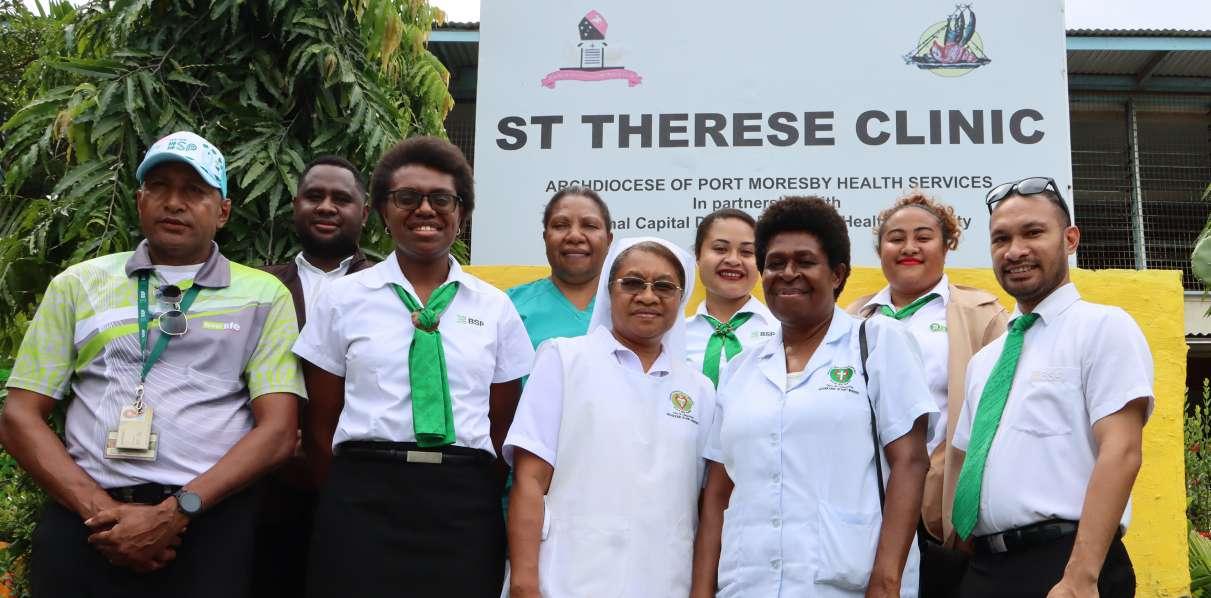

At BSP, success is about more than numbers - it's about lives transformed. Our programs are designed to make a lasting di erence across all regions of the country.




Looking ahead with hope for the Nation. For the Future.
“ As we raise the PNG ag this Independence Day, we also raise our hopes for a brighter, more prosperous future. Together with our customers and communities, we remain committed to building a nation rich with opportunity and pride.
BSP is more than a nancial institution — we are your partner in progress.
Happy 50th Independence Anniversary, Papua New Guinea! ”
Mark Robinson BSP Group CEO
50 YEARS OF INDEPENDENCE
GULF PROVINCE
CAPITAL KEREMA
34,472 SQUARE KILOMETRES
HOW FAR FROM PORT MORESBY? 229 KILOMETRES
Gulf Province is located on the southern coast. It has a concave coastline of large deltas that lead into the Lakekamu Basin, rich with birds and other wildlife. The province offers mountains, river deltas and wide expanses of seasonally flooded grass plains stretching out from the Turama, Kikori, Purari and Vailala rivers.
There’s a rich history here, which includes cannibalism and European occupation. Weaponry and other artefacts are used in ceremonies. Gulf artefacts can also be seen at the National Museum and Art Gallery in Port Moresby.
The Gulf people were major traders with Central Province during the Motuan voyages, with clay pots traded for bags of sago. The Hiri Moale Festival in Port Moresby celebrates the trade each year in September. Seen from the air, the tributaries, swamps and rivers of the province are mesmerising and once you are drawn to the land, you will find it rich with flora and fauna. Worldclass fishing along the coast of Gulf Province attracts international visitors.
THINGS TO SEE & DO
• If you want to catch the famed Papuan black bass, this is the place to go.
SOMETHING SURPRISING
Gope boards are made in the Gulf Province. The wooden boards are carved with stories of success, including tribal warfare conquests.
Fishing is one of the big attractions of Gulf Province (above right); a coastal village in the province (right).






HELA PROVINCE
CAPITAL TARI
10,498 SQUARE KILOMETRES
HOW FAR FROM PORT MORESBY? 617 KILOMETRES
This province, formed in 2012 when it split from the Southern Highlands, is home to Huli wigmen, who have become one of the most internationally recognised symbols of PNG. The Huli are distinctive for their face paint and elaborate wigs made from human hair.
When you arrive in Tari, be sure to check out the town’s market before taking off to other parts of the province. Garden produce, poultry, livestock and bilums are for sale in a sea of people, alongside spirited games of darts among locals who are happy if you join in. Be sure to pack some warm clothing for your visit to Hela Province; it can be cool in the mountains.
THINGS TO SEE & DO
• Trek into the Tari Gap or raft the Tangari River.
• Bushwalk with a guide into the mountains to see birds, including the famed birds of paradise.
• Visit Huli villages and the Huli wig school where you can hear about Huli etiquette.
• Watch a sing sing performance by Huli and other tribal groups.
• Naturalist David Attenborough has stayed at Ambua Lodge, so you know the lodge’s birdwatching tours must be good.
SOMETHING SURPRISING
The natural yellow clay used by Huli warriors to paint their faces is called ambua and is found at Mount Ambua in the Tari Gap. However, these days many Huli use commercial face paint.


Ambua Lodge, where David Attenborough stayed.


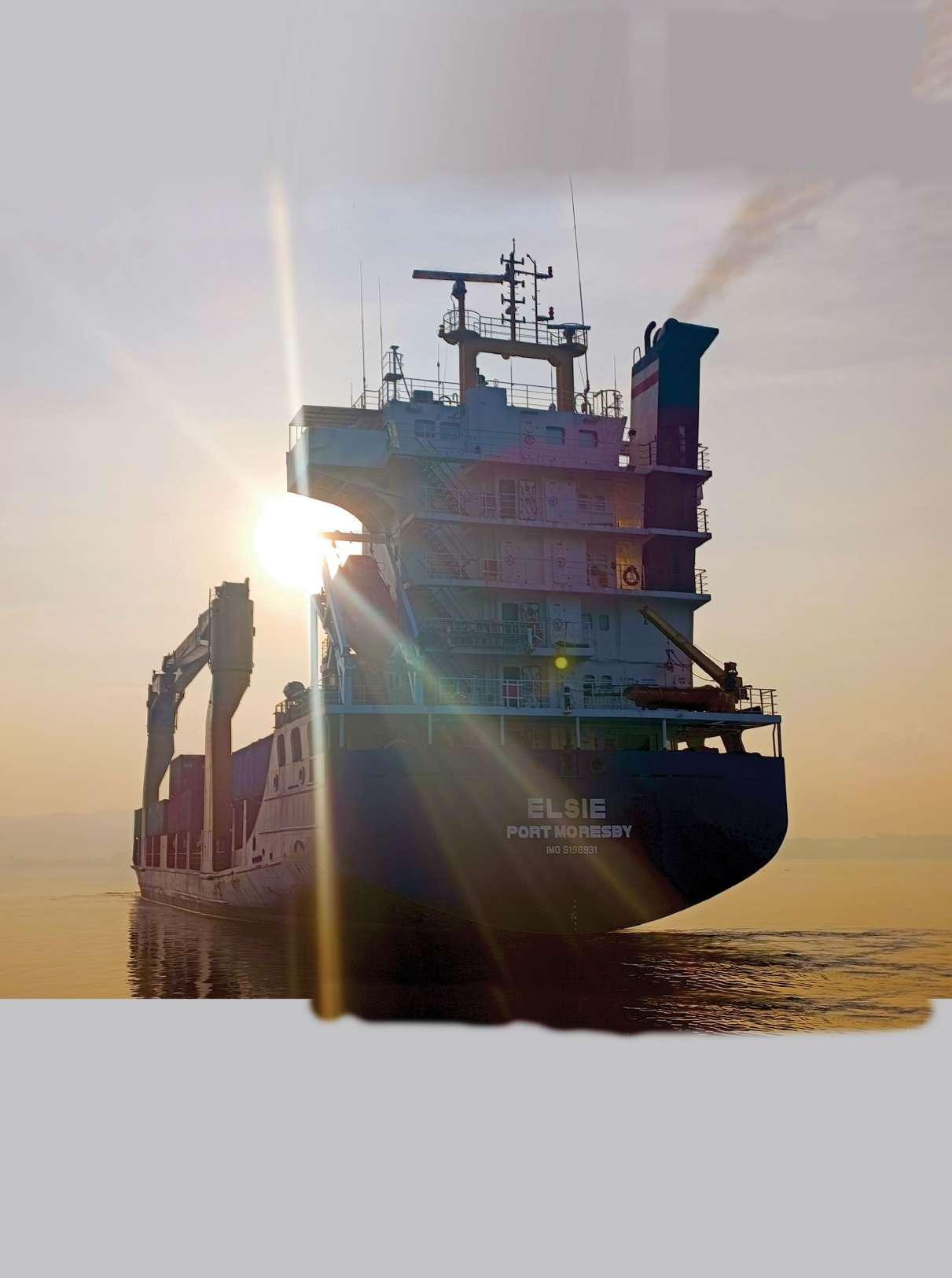




50 YEARS OF INDEPENDENCE
JIWAKA PROVINCE
CAPITAL BANZ
4798 SQUARE KILOMETRES
HOW FAR FROM PORT MORESBY? 483 KILOMETRES
This is coffee country, and home to one of PNG’s fastest athletes.
Guarded by mountain ranges, the Wahgi Valley cuts a swathe through Jiwaka Province. The fertile valley is fed by the indomitable Wahgi River, which glints pale brown in the sunlight.
Jiwaka shares its borders with the Western Highlands, Chimbu and Madang provinces.
It has three districts – Jimi, North Wahgi and Anglimp–South Wahgi – and two growing towns, Minj and Banz.
The three districts split from the Western Highlands and formed Jiwaka by an act of Parliament in 2009. The new province was run by an interim administration until 2012 when the first governor was appointed.
To reach Jiwaka, fly to Mount Hagen, the capital of the Western Highlands, and then travel overland. It’s about an hour to Banz, depending on road conditions, and another 30 minutes to Minj.
MADANG PROVINCE
CAPITAL MADANG
28,886 SQUARE KILOMETRES
HOW FAR FROM PORT MORESBY? 494 KILOMETRES
Get on the water when you arrive in this province on the northern coast, for sailing, diving, fishing or snorkelling.
There are many small islands offshore from Madang, which is set on Astrolabe Bay.
THINGS TO SEE & DO
• See Banz come alive during the Jiwaka Show, a colourful event that reveals the unique and enchanting cultural identity of local tribes.
• Visit coffee plantations and see what goes into making a perfect cup of coffee. (Plantation owners should be notified of visits beforehand.)
• Purchase some packaged coffee in local shops to taste the exquisite flavours. Coffee from Jiwaka and the Highlands region is highly regarded.
SOMETHING
SURPRISING
Toea Wisil, the sprint queen of PNG, was born in Banz and has represented PNG in Olympic, Commonwealth and Pacific Games, as well as world athletics championships.

THINGS TO SEE & DO
• Dive the many reefs scattered around Madang Harbour to see big-ticket items like schools of giant trevally, tuna and manta rays, or hire a kayak to explore neighbouring islands where you can swim and snorkel in beautiful blue waters.
• Drive up the coast to see what coastal life is like in this sleepy province. If you keep heading north, you’ll come to Tupira Surf Club, which is home to excellent wave breaks from November to April.
• If you haven’t had enough of Madang’s postcardperfect beaches, then lunch and a swim at Jais Aben Resort is a must. It’s a 20-minute drive from town and sits along one of Madang’s northern harbours, with excellent snorkelling and white-sand beaches.
SOMETHING SUrPRISING
Madang Province is home to over 25 per cent of the country’s languages. Visit in June to get a taste of the many cultures at the annual Madang Festival.
Water activities abound in Madang (above right). Jiwaka Province is known for its coffee (above right).


















Tank outside. Luxury inside.









The GWM Tank 300 Lux Hybrid and Tank 500 Ultra Hybrid are redefining what the 4x4 can be.
GWM




Both are unmatched in rugged terrain, but have all the creature comforts, advanced technology, and safety features proper adventurers demand from their 4x4. And with the Tank 500’s
luxurious 7-seater interior and 9-speed transmission, there’s enough room and power for a team of explorers. Hop into your local Boroko Motors dealership to test drive a GWM Tank today.






50 YEARS OF INDEPENDENCE
MANUS PROVINCE
CAPITAL LORENGAU
2000 SQUARE KILOMETRES
HOW FAR FROM PORT MORESBY? 821 KILOMETRES
It may be the smallest and the least populated province in PNG, but Manus has some of the loudest drumbeats in the country. Manus is famous for its riveting cultural dance. The thundering rhythm of the garamut (a long slit drum) draws people to the dance, where men, women and children jump, shake and shout. You can join them in August–September each year at the Manus Cultural Show. Also referred to as the Admiralty Islands, Manus comprises 18+ islands covering about 2000 square kilometres of land and 220,000 square kilometres of sea. Manus Island is the largest of the islands.
THINGS TO SEE & DO
• Surf in uncrowded waters at Rambutso Island and Manus Island.
• Hike up Mount Dremsel (arrange through local hotels). It is the province’s highest point and includes limestone caves with large chambers, and war relics.
• Spot an endangered greenback turtle at M’Buke Island, a three-hour boat ride from Lorengau.
• Take the plunge at Ahus and Onetta islands, reputed to have some of the best snorkelling and diving sites in the province.
SOMETHING SURPRISING
Manus was previously in the news because of its processing centre for refugees (now closed), but beyond this the province is known for its stunning beauty, and where you can surf, kayak, fish, trek, see war relics and birdwatch.

Manus Province comprises 18+ islands (above right).
MILNE BAY PROVINCE
CAPITAL ALOTAU
270,000 SQUARE KILOMETRES (14,000 DRY LAND)
HOW FAR FROM PORT MORESBY? 374 KILOMETRES
Comprising more than 435 islands scattered across hundreds of kilometres, Milne Bay Province (also known as the Massim region) is a place of spectacular natural beauty. The islands, broken up into four main groups (the Trobriand, D’Entrecasteaux and Woodlark islands, and the Louisiade Archipelago), are the place to head for some of the world’s best snorkelling and diving, secluded white-sand beaches, bubbling hot springs, traditional villages, and lush hiking trails.
THINGS TO SEE & DO
• Time a visit with the three-day Kenu and Kundu Festival in Alotau in early November each year, where war canoes filled with warriors in traditional dress race to the beat of island drums.
• Kayak or stand-up paddleboard along the junglelined Dawadawa River.
• See war relics and take a tour to learn about the Battle of Milne Bay between Japanese and Australian forces.
• Experience some of the world’s best scuba diving and snorkelling. Dive packages can be organised through Tawali Leisure and Dive Resort (see our story on page 102).
• Hike around the hot springs and bubbling mud pools of Fergusson Island, the largest of the D’Entrecasteaux islands.
SOMETHING
SURPRISING
The Tawali Skull Caves are filled with human skulls. They date back to the time when missionaries first arrived in PNG and prohibited headhunting and cannibalism, causing villagers to hide their skull collections.



One of the Milne Bay locals (above right).
ANCHORING PROGRESS ON PAPUA NEW GUINEAN TALENT
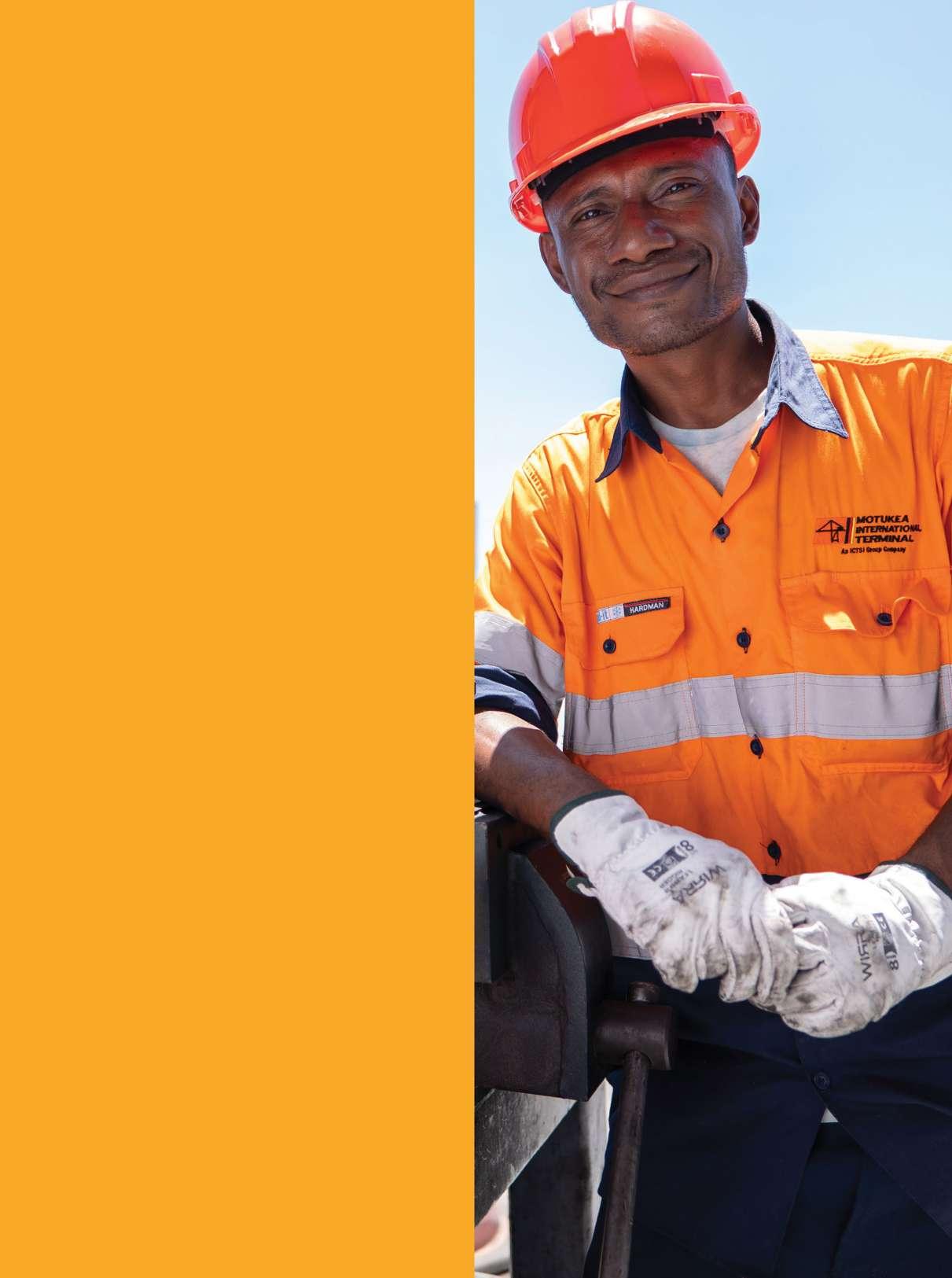
Papua New Guinean port equipment operators and engineers play a vital role at the terminals of Lae and Port Moresby, putting to good use their expertise in ship-to-shore cranes and mobile harbor crane operations and maintenance.
Through ICTSI South Pacific’s Center of Excellence program and guidance from international experts, local talent continues to grow, powering PNG’s trade gateways and contributing to economic development. The collaboration has come full circle, with PNG operators and engineers now training their counterparts overseas—an inspiring example of knowledge-sharing and mutual growth.
ICTSI South Pacific – developing skills, driving progress.


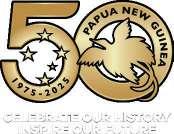
South Pacific International Container Terminal Lae, Morobe Province
Motukea International Terminal Motukea Island, Port Moresby
50 YEARS OF INDEPENDENCE

MOROBE PROVINCE
CAPITAL LAE
33,705 SQUARE KILOMETRES
HOW FAR FROM PORT MORESBY? 307 KILOMETRES
Morobe Province is PNG’s most populous province and the gateway to the interior of the country. It boasts a wide variety in vegetation, flora and fauna, landscape, topography, cultures, history and archaeological background. The province includes the biodiverse Huon Peninsula, the Markham Valley and Delta, and coastal areas extending into the Bismarck Sea.
Morobe experienced a gold rush in the 1920s. World War 2 was fought intensely on its land and waters. Lae is the country’s second-biggest urban centre and industrial hub.
THINGS TO SEE & DO
• Every October, Morobe comes alive with the annual Morobe Provincial Agricultural Show, held in Lae since 1959. The show has everything from agricultural produce to commercial products to cultural activities.
• The Rainforest Habitat is another Lae must-see. Situated on 3000 square kilometres of rainforest with a lake, raised walkways and beautiful flowers, the habitat houses the largest variety of birds of paradise kept anywhere in the world.
• The outer towns of Wau and Bulolo offer birdand butterfly-watching.
• Salamaua is a tiny isthmus about an hour from Lae by boat. Go for the incredible snorkelling and swimming.
SOMETHING SURPRISING
Lae is the last place where round-the-world aviator Amelia Earhart was seen alive. She took off on July 2, 1937, and was never seen again.

The Salamaua isthmus is about an hour from Lae by boat (above).

Building Businesses that Build PNG
Located in the heart of Port Moresby’s industrial and investors seamless accessibility through land and sea domestic and global markets.
Measuring 38 hectares of secured prime land that is registered on a clear 99 year state lease, PORTSIDE is envisaged to become a premier economic hub for the
Backed by PNG-based Steamships Limited, an ASX and PNGX listed entity, it will include quality facilities and features designed to cater for the needs of a wide spectrum of organisations.
PORTSIDE Business Park features:
Proximity to Motukea International Wharf
Supporting Retail Spaces
Built-to-Suit Warehouses
Industrial Flex Spaces
Aggregate Storage



NATIONAL CAPITAL DISTRICT
CAPITAL Port Moresby
240 SQUARE KILOMETRES
The National Capital District (NCD) is both a city (Port Moresby) and a district. NCD is the gateway to PNG – the nation’s capital, centre of politics, trade and commerce. Port Moresby is a growing and bustling metropolitan area. Hotel and restaurant developments have taken off in the past few years, so visitors have many options for good accommodation and dining.
THINGS TO SEE & DO
• The National Museum and Art Gallery in Waigani has more than 30,000 anthropological artefacts. Next to the museum is National Parliament, best known for its steep roof depicting a Sepik spirit house.
• The Port Moresby Nature Park showcases the nation’s flora and fauna, including the bird of paradise.
• Get an overview of Port Moresby by taking a day tour with a tour operator.
• The annual Hiri Moale Festival commemorates the great Hiri trade voyages and the crowning of the Hiri queen.
SOMETHING SUrPRISING
US Army general Douglas MacArthur lived in Port Moresby during World War 2 while coordinating the Allied troops in the Pacific campaign.


The National Museum and Art Gallery (above).


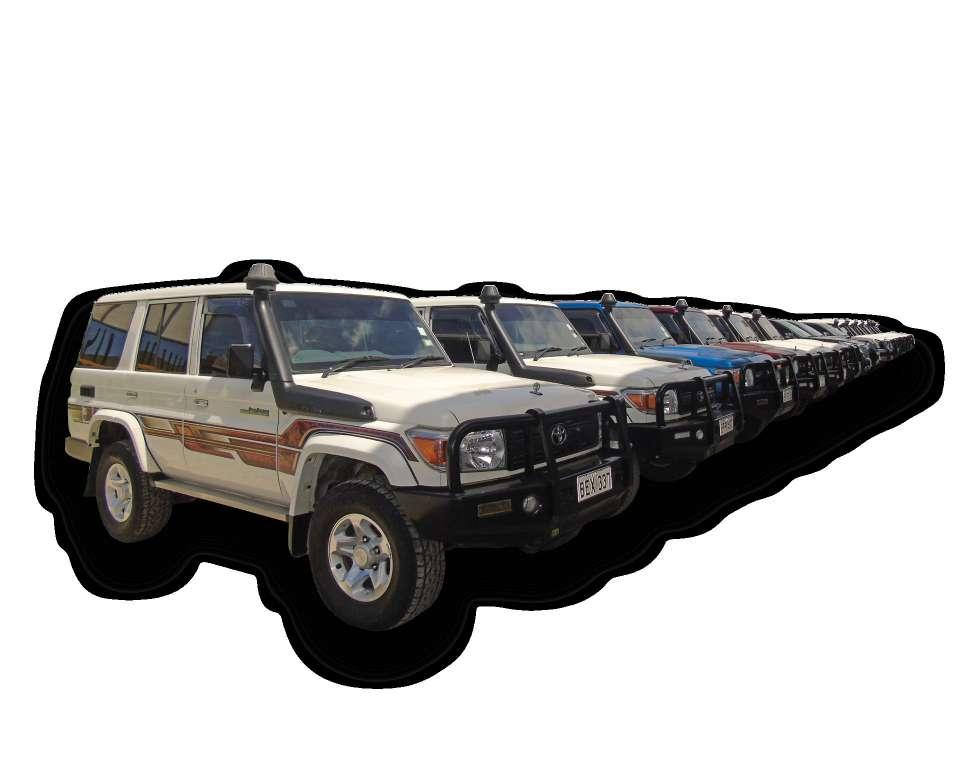

50 YEARS OF INDEPENDENCE

NEW IRELAND PROVINCE
CAPITAL KAVIENG
7404 SQUARE KILOMETRES
HOW FAR FROM PORT MORESBY? 859 KILOMETRES
One of the northernmost islands of PNG, New Ireland is long, narrow and mountainous, with vast stretches of beautiful white, sandy beaches. No wonder it is called bilas peles in Tok Pisin, meaning ‘dressed up or decorated village’. The province is made up of many islands (the largest is New Ireland) and is part of the Bismarck Archipelago.
THINGS TO SEE & DO
• There’s surfing, fishing, diving, snorkelling, island-hopping and canoeing. All can be arranged with accommodation providers.
• Feed the giant eels at Laraibina.
• Take a short boat ride from Kavieng to Nusa Island where day visitors are welcome at Nusa Island Retreat. There’s also a small village on the island where you can buy handicrafts.
SOMETHING
SUrPRISING
The tradition of shark-calling occurs in New Ireland, particularly at the villages of Kontu and Tabar. The shark callers attract sharks (some say by magic) to their small canoes and then catch them by hand.

Surfing is one of the key attractions in New Ireland Province (above).

50 YEARS OF INDEPENDENCE
ORO PROVINCE
CAPITAL POPONDETTA
34,650 SQUARE KILOMETRES
HOW FAR FROM PORT MORESBY? 139 KILOMETRES
Oro Province, in the east of PNG, is the birthplace of the world’s largest butterfly, the Queen Alexandra birdwing. Not only does the province incubate this giant butterfly, with a wingspan of up to 30 centimetres, but it also has a rich and fascinating art and culture heritage and is known for its tapa cloth, made from the mulberry tree bark.
The Kokoda Trail runs through Oro Province (as well as Central Province), and there is world-class diving.
The Oro people are warm and resilient, having withstood the bloody Kokoda campaign during World War 2, cyclones, and the 1951 eruption of Mount Lamington in which 3000 people died. It’s possible to trek to the top of the 1680-metre volcano for spectacular views.
THINGS TO SEE & DO
• Visit Tufi Resort for diving, snorkelling, kayaking, fishing and cultural experiences.
• See 1942 war relics along the coast in Buna and Gona. It is recommended that visitors take a guide.
• See the Musa River hot springs and dive or snorkel at Cape Nelson.
• Trek to the top of Mount Lamington from Sasembata Mission for the views, or trek to Mount Trafalgar where the trail leads to deep caves. Seek local advice and travel with guides.
• See the birdwing butterfly at Ondahari village, about 40 minutes from Popondetta.
SOMETHING SURPRISING
Oro women cook on open fires in handmade clay pots.



Traditional dress in Oro Province (above right); the Queen Alexandra birdwing butterfly (right).

50 YEARS OF INDEPENDENCE
SANDAUN PROVINCE
CAPITAL VANIMO
35,920 SQUARE KILOMETRES
Sandaun Province (formerly West Sepik) is the outer province of PNG, bordering Indonesia at West Papua. The provincial capital, Vanimo, is only 30 kilometres from the Indonesian border. The province hosts the headwaters of the Sepik River where it is covered in thick, forested mountains. On the coast, west of Vanimo, are good beaches for swimming and surfing.
THINGS TO SEE & DO
• Head eight kilometres west of Vanimo to the village of Lido for some surfing.
• Aitape, an old German missionary station, can be reached by boat from Vanimo (ask locals for boats). There’s some surfing here and you can trek and visit waterfalls.
• Tenkile Conservation Base at Lumi has a number of endangered tree kangaroos (see our story on page 124).
• The Aitape Islands, especially Ali Island, have a longstanding reputation for hospitality. Visitors can swim in the warm, crystal-clear waters or enjoy a traditional dance and cultural presentations.
• Awawi waterfall is about 20 minutes south of Vanimo. It’s a beautiful, culturally - rich waterfall, ideal for swimming, picnics in scenic surrounds, hiking, and a taste of authentic PNG nature and village culture. Nearby are other attractions, such as Dali Beach and Sandflies Beach.
SOMETHING SURPRISING
Green River has untapped potential for whitewater rafting and kayaking from the village of Kambriap to Yibru.
SOUTHERN HIGHLANDS PROVINCE
CAPITAL MENDI
15,089 SQUARE KILOMETRES
HOW FAR FROM PORT MORESBY? 1088 KILOMETRES
The Southern Highlands is a province where you can get off the tourism grid into unseen and often unheard-of places. Geographic highlights include 4368-metre Mount Giluwe, the second-highest mountain in PNG; and Lake Kutubu, the second-largest lake. Lake Kutubu is in the Kikori Basin, a UNESCO World Heritage site that is home to unique biodiversity and landscapes.
Here you can mingle and meet Foi (Foimena) people and see their distinct culture in which men and women live separately.
THINGS TO SEE & DO
• The Southern Highlands Province has several waterfalls, including the 100-metre Wasi Falls.
• The Kutubu Kundu and Digaso Festival acknowledges the importance of the kundu drum and digaso oil – both significant in Southern Highlands culture.
SOMETHING SURPRISING
At Lake Kutubu, corpses are left on cliff ledges by the side of the river – part of the process of preserving dead and living spiritually as one with the natural environment.


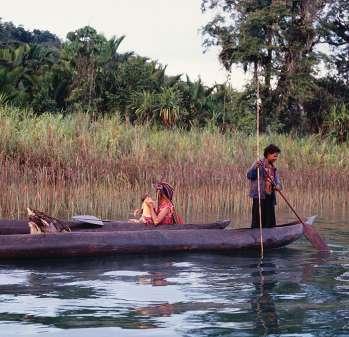

Getting off the tourism grid in Southern Highlands Province (above right).
Surfing in Vanimo, the capital of Sandaun Province (above right).

50 YEARS OF INDEPENDENCE

WESTERN HIGHLANDS PROVINCE
CAPITAL MOUNT HAGEN
4299 SQUARE KILOMETRES
HOW FAR FROM PORT MORESBY? 514 KILOMETRES
Mount Hagen is the third-largest city in PNG, but it feels rural, especially as your plane comes in to land over grass huts and terraced gardens where kaukau and other fruit and vegetables grow in the fertile Wahgi Valley. At Mount Hagen’s market, sink your teeth into some of the harvest, including cassowary fruit or haas bin (bean root). The area is also rich in culture, which is showcased at the spectacular Mount Hagen Show each August. The show draws many tribes from the region, who come to perform sing sings in one of the largest cultural displays in PNG.
THINGS TO SEE & DO
• Rondon Ridge Lodge has abundant birdlife and orchids on its expansive grounds and offers tours to see the Melpa people and the famed Asaro Mudmen.
• The Kum Caves, about seven kilometres from the city centre, are home to birds and possums.
• Enjoy some of PNG’s best coffee in park-like surroundings at Kofi Cave, which serves highly regarded Banz Kofi. It’s on Airport Road, close to the airport and adjacent to some small craft markets.
• Play a round of golf at Mount Hagen Golf Club.
SOMETHING SURPRISING
Rolling Stone Mick Jagger once stayed at Rondon Ridge Lodge.

Rondon Ridge is popular with birdwatchers and Rolling Stones (above).
50 YEARS OF INDEPENDENCE


WESTERN PROVINCE
CAPITAL DARU
98,189 SQUARE KILOMETRES
HOW FAR FROM PORT MORESBY? 434 KILOMETRES
Make sure you are camera-ready when you enter Western Province, on the border of West Papua. The wildlife is worth a million pictures. More than half of PNG’s birdlife lives in the province – including sea eagles and massive flocks of pelicans and pygmy geese – but many visitors travel here for the opportunity to catch PNG’s mighty black bass and barramundi.
The largest river in PNG, the Fly, runs through the province, which is a patchwork of winding rivers, lakes and wetlands with crocodiles.
THINGS TO SEE & DO
• Fish the Fly River, Lake Murray and other areas while basing yourself at Bensbach Wilderness Lodge or Lake Murray Lodge.
• Take a fishing, birding and cultural safaris tour into remote and wild areas of the province, including the Strickland River and the Star Mountains, which include the Hindenburg Wall, a series of limestone escarpments up to 1000 metres high and 50 kilometres long.
• Journey to Wawoi Falls in the Wawoi District of the Middle Fly. It is one of PNG’s largest and most spectacular waterfalls.
SOMETHING SURPRISING
Lake Murray is the largest lake in PNG and hosts five species of the bird of paradise, including the famous raggiana bird of paradise.


Western Province is known for its rivers (above) and birds (above right).
50 YEARS OF INDEPENDENCE
WEST NEW BRITAIN PROVINCE
CAPITAL KIMBE
20,387 SQUARE KILOMETRES
HOW FAR FROM PORT MORESBY? 525 KILOMETRES
This province occupies the western half of New Britain Island. It is populated by people from all over PNG, many of them coming here to plant oil palm and work the many plantations and mills. Thus, the province is dubbed the ‘oil palm country’.
Unlike neighbouring East New Britain Province, the west is less known by tourists, even though it boasts great diving, snorkelling and trekking. It is also home to the UNESCO World Heritage-listed Muruk Cave system in the Nakanai Range.
Hoskins Airport is about 45 minutes’ drive from the main town of Kimbe.
THINGS TO SEE & DO
• Kimbe Bay is famous for its coral, rewarding snorkelling and diving experiences, and volcanic caves.
• The Cathedral is a must-do night dive. (It is a horseshoe-shaped reef with a large cave at one end and a white sandy bottom.)
• There’s excellent fishing at Kimbe Bay.
• There’s also great trekking in the Cape Gloucester area where the active Mount Langila volcano rumbles in the distance, or explore Lake Dakataua, which was formed after a giant volcanic eruption in 1884.
SOMETHING SURPRISING
West New Britain is the most volcanically active region in PNG, with 18 of the 21 volcanoes on the New Britain Island belonging to the 1000-kilometrelong Bismarck volcanic arc. It is ideally located within the active tectonic region and has a favourable environment for geothermal activity, a hot prospect for the development of geothermal energy resources for PNG.


Great diving is one of the hallmarks of West New Britain Province (right).

Internal Revenue Commission PNG
Building the Foundation of a Robust, Modern and Efficient Tax Administration
Paying your taxes isn’t just an obligation; it’s a key part of your role as a leader. Only when true leaders step up to their tax compliant responsibilities will we see Papua New Guinean communities and our children thrive.

Take Action Now
Ensure your taxes are up to date to avoid costly penalties. You can make instant online payments through myIRC. Get started by logging in to your myIRC account or registering a new one. Register at https://irc.gov.pg/register

Build Trust
Good corporate citizenship matters because it’s immensely beneficial to organisations prioritising it. Such organisations can enjoy Tax reductions, enhanced reputation and goodwill, competitive advantage, a boost in customer base, customer loyalty and sales, and attraction of better talent and stronger employee engagement.
DIRECTORS’ PENALTY : BE AWARE

Empower Growth
Your contributions are geared towards producing a much better quality of life for surrounding communities by fuelling essential services and fostering community development in PNG.
As a Director, you hold personal responsibility. Failure to pay taxes could result in liability. Protect your business and reputation by staying on the right side of compliance.

How photographers captured PNG’s coming of age




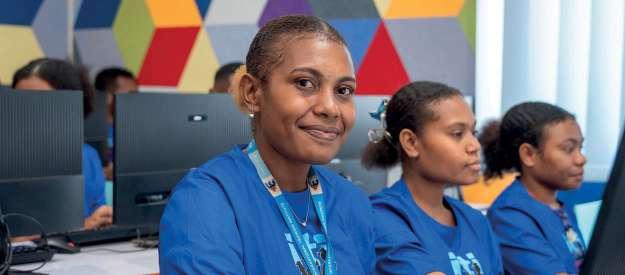
Prince Charles, now King Charles III, attended and officiated at independence events in 1975 (above); PNG’s first prime minister, Michael Somare, signs an Oath of Allegiance (right).



Members of PNG’s first parliament are sworn in (above); Sir John Guise, PNG’s first Governor General, pledges his loyalty (above right); Prince Charles opens the first parliament (left); the Hubert Murray Stadium was packed for independence events on September 16, 1975 (right).



Kavieng, situated at the northern tip of the island, is a picturesque destination offering tropical diving and snorkelling, surfing, fishing and kayaking through pristine tropical waters littered with amazing islands to explore.
The Kavieng Hotel is centrally located in town, a short walk from the markets and the Kavieng Golf Club.
Whether you’re here on business or a family beach holiday, Kavieng Hotel caters for every traveller.
50 YEARS OF INDEPENDENCE
Lemach Lavari speaks to two prominent Papua New Guineans about their careers and how they think the country has changed since independence.
DAME JEAN KEKEDO DBE CIVIL SERVANT AND DIPLOMAT
Ahighlight of Dame Jean Kekedo’s working life, which began in 1966, is the role she played as a welfare officer for a troubled young man. She wishes for the man to remain anonymous, except to say he later became a top Papua New Guinean politician.
“He was a very clever boy, but he was rebellious,” she says.
Dame Jean says that when the politician realised his political ambition, he called and said: “Come to parliament. Without your help and guidance I wouldn’t have had the upbringing I had.”
Dame Jean always wanted to work in a profession where she would impact people directly. After she finished high school in 1964, her ambition was to become a kiap (a patrol officer for the colonial government) but she was told that women weren’t allowed to be kiaps. She then found work as a welfare officer.
Dame Jean is one of three in her family who have been appointed the Dame Commander of the Order of the British Empire (DBE). Her mother, Dame Mary, was appointed DBE in 1987 for her services in education and community, followed by her sister, Dame Rose, in 1995 for her service in sports and commerce. In 2020, for her work in community, diplomacy and leadership roles at the University of Technology and St Johns Ambulance, Dame Jean received her DBE.
She worked as a welfare worker in her early career, involving travel to various parts of PNG. She later took up executive roles in the government, including serving as PNG’s Ombudsman, Secretary to the Department of Civil Aviation, Deputy Secretary to the National Executive Council and High Commissioner to the UK.
She attributes her family’s prominence in public service to their Christian upbringing.
50-year

PNG has progressed well in terms of its physical infrastructure in the past 50 years.
“Church was very important in our lives. Every morning, we would have to say our prayers and our rosary in the evenings. Mum came from a very strong Catholic background.”
Dame Jean grew up with nine siblings in Kokoda, in Oro Province. Her father, Walter, worked for the colonial administration and her mother, Mary, built a school.
Dame Jean believes PNG has progressed well in terms of its physical infrastructure
in the past 50 years but has not adequately addressed its social challenges. She hopes to see development that is conducive to PNG’s social needs such as building accessible public spaces and upgrading facilities in rural areas.
Dame Jean says it is great to see PNG’s progress in education, with more people moving into professional ranks.
She worries that this progress, though, may create an elite class.
“I wish more people become not just schooled but also educated. When you’re educated, you appreciate the standards of living of society and respect each other’s culture. It (education) cuts out misunderstandings that lead to people reverting to their traditional ways and foregoing the national ideals that make us a united country.”
PICTURES: NORMAN KETAN (NKW PHOTOGRAPHY)
50 YEARS OF INDEPENDENCE
reflections
SIR ROBERT IGARA KBE CMG CHANCELLOR OF THE UNIVERSITY OF PNG AND FORMER CHIEF SECRETARY TO THE PNG GOVERNMENT
“More and more I am seeing women in PNG being appointed to executive roles in the public and private sector and taking up roles in professions that were traditionally held by men. So, in my view, for my daughters and grandkids, PNG is their place of opportunity,” says Sir Robert Igara.
Sir Robert is the Chairman and Chancellor of the University of Papua New Guinea (UPNG), a role he has held since 2019. He spent 26 years in public service where he held senior roles in the PNG government and the National Executive Council. In the private sector, he continues to serve on the boards of several companies and operates his family business in hospitality and marine products.
When asked about what he envisions for PNG in the next 50 years, Sir Robert spoke about how he would like his children to live.
“As a father, I want my children, especially my daughters, to feel safe to move around freely in their own country.
“This is the same for my students at UPNG. As Chancellor, I see my students as my sons and daughters, and I want the best for them. Best in the sense that when they leave university, they are capable to stand independent and in confidence and hold their own value anywhere in the world.”
Sir Robert says that in recent years, there has been an increase in female graduates from UPNG, notably in the schools of medicine and humanities. He believes that this shows that more citizens are being enabled to participate in PNG’s development.
UPNG graduated just 14 students in its first graduation in 1970, including Sir Rabbie Namaliu, who later became PNG’s fourth prime minister.
For my daughters and grandkids, PNG is their place of opportunity.
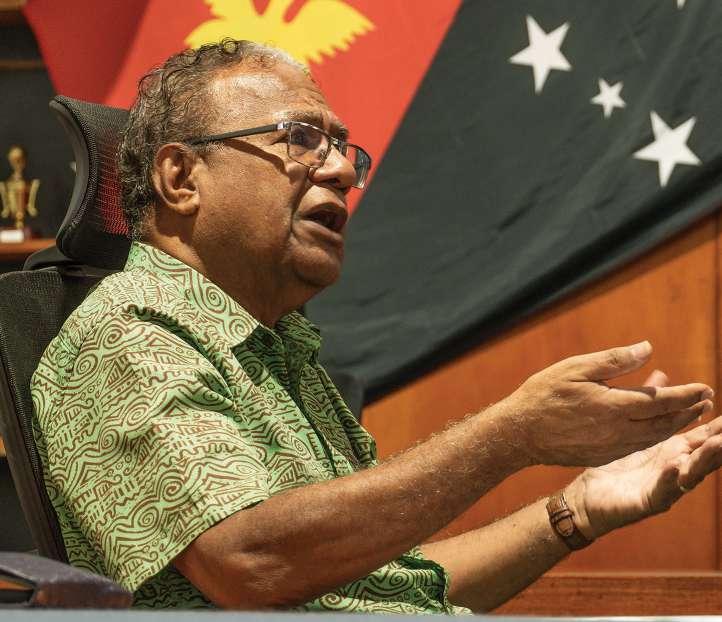
Sir Robert also attended UPNG and graduated in 1976. He met his wife in 1975, the same year PNG gained its independence. His wife, Fiu Williame from Rotuma Island in Fiji, was an exchange student studying a Bachelor of Arts at UPNG while Sir Robert was studying economics.
Sir Robert grew up on Samarai Island in Milne Bay Province and as a young man lived through PNG’s colonial period. He witnessed first hand the inequalities of the colonial experience.
But it was only when he started attending university that he was immersed in discussions about independence and the rise of a united PNG identity.
Sir Robert acknowledges three fundamental achievements since independence: a viable sovereign and independent state composed of a “thousand tribes and clans”, with no
prior existence and experience as a state; a national identity and pride (before 1975, citizens were described as ‘natives’ of PNG); and constitutionally enshrined freedoms and rights that many in other parts of the world do not have.
Sir Robert says PNG’s real opportunity for progress rests in embracing and empowering its youth, who are 38 per cent of the population, and empowering most of PNG’s population, who live in rural areas, to meaningfully participate and take responsibility for PNG’s own progress and development.

Proudly PNG
Photographer David Kirkland has released a 50th anniversary edition of his coffee-table book of PNG.


Joining Papua New Guinea to celebrate its 50th anniversary, photographer David Kirkland has released a commemorative edition of his popular souvenir book Papua New Guinea – The Last Great Frontier
Containing 200 photographs captured over more than 20 years, the coffee-table book has been designed to showcase the cultural diversity of PNG, with photographs from the highlands, its islands, cities and its sprawling river systems.
“I’ve always considered it a privilege to photograph Papua New Guinea,” says Kirkland. “Much of this country has changed over the past two decades, and I feel incredibly fortunate to have witnessed this period of transition as a young nation moves
to the space age in less than a lifetime” says the Australian-based photographer.
Over the past two decades, Kirkland has been commissioned by the country’s national tourism authority to capture promotional photographs aimed at drawing visitors to PNG, which has given him privileged access to some of the country’s exceptional experiences. He’s photographed many of the country’s spectacular sing-sings, and features photographs in his book of the Baining Fire Dancers, the Huli Wigmen, the crocodile clansmen of the Sepik River, and the mysterious Malagan performers of New Ireland.
The commemorative edition of his book has been designed for display, with a number of production embellishments added to
50 YEARS OF INDEPENDENCE
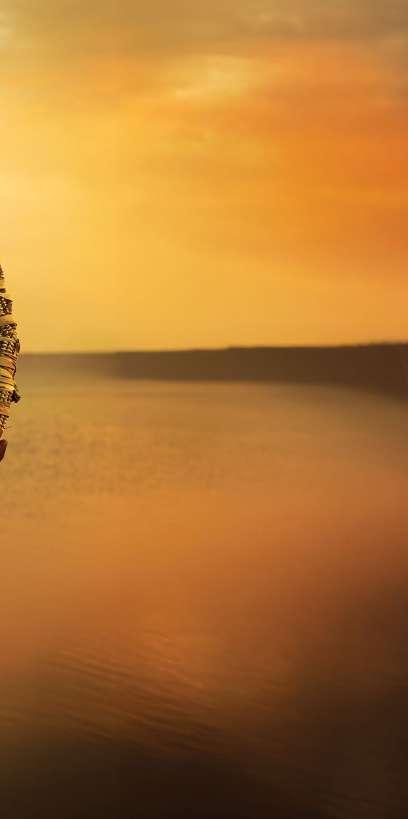
I feel incredibly fortunate to have witnessed this period of transition as a young nation moves to the space age in less than a lifetime.

reflect its status as the country’s flagship souvenir publication.
A special edition of the book has also been produced for the country’s Justice Department to commemorate the opening of the PGK$665 million court precinct in Waigani. More than 150 three-metre photographic prints from the book have been hung throughout the complex as part of a permanent collection.
The publication is being distributed exclusively in PNG by Chin H Meen and is available through its retail outlet, A Little Something from PNG, at Jacksons International Airport. The book costs PGK150.


Photos from the David Kirkland book (from far left) the striking headdress of a performer from the Highlands; a Tolai money ring in East New Britain; paddling across the water at Lake Murray in Western Province; a Malagan mask from New Ireland held high as if in tribute to its host spirit; an aerial view of Ela Beach in Port Moresby.
PNG’s economic journey
Independence in 1975 saw the introduction of Papua New Guinea’s own currency, the kina.
In the late 1970s, good global coffee prices gave quite a stimulus to agriculture and led to a substantial increase in smallholder coffee production.
In PNG’s first few years, the Panguna copper mine in Bougainville was critical to being able to fund a country, as was the ‘hard kina’ policy, which pegged the new currency to a basket of its main trading currencies. These both provided investment confidence and stability for the new country.
The Ok Tedi mine started in 1981 after extended negotiations between the PNG government and mining companies.
The closure of Panguna in 1989 had a big impact, leading to a major drop in GDP (9 per cent) and exports (35 per cent).
In 1992, oil production started in PNG. It provided a big boost to PNG’s GDP in the initial period.
The 1990s saw several new resources projects either starting or being negotiated but the cost of the Bougainville closure was so much bigger than the initial revenue benefits of these new resource projects.
While revenue was squeezed, 1993 and 1994 saw major expansionary budgets leading to a balance of payment and fiscal crisis in 1994, and in turn a change of government.
With the depletion of PNG’s foreign exchange by mid-1994, the new Prime Minister, Sir Julius Chan, applied a major (12 per cent) devaluation in September followed
Paul Barker, Executive Director of industry think-tank the PNG Institute of National Affairs, provides a snapshot of PNG’s economy since independence.
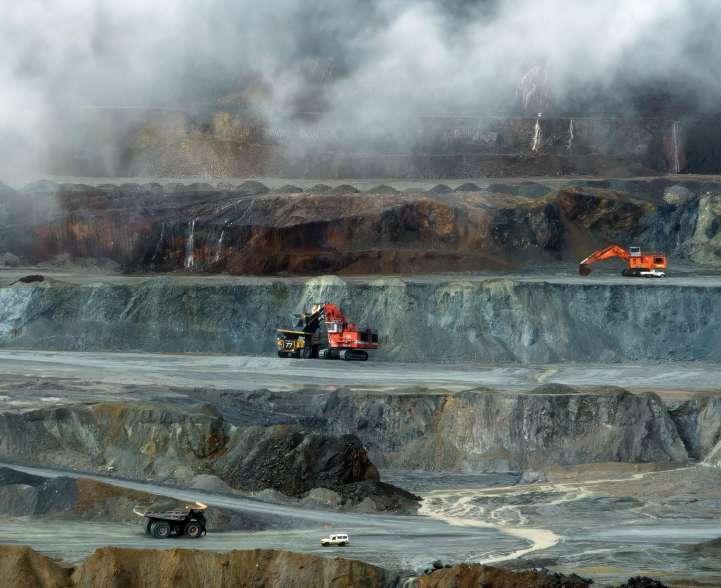
by the floating of the currency in October 1994. It was a necessary response, in effect ending the hard kina policy, but (despite high initial inflation) helped stabilise the economy and safeguarded the agriculture sector (through higher kina prices on exports), improving the balance of payments and by 1996 resulting in firm economic growth. It also put PNG on the track for many years of having a more market-driven exchange rate, which continued until 2016.
But 1997 was a troubled year, starting with a cyclone that impacted crops, followed by a drought that badly impacted food crops across the country, leading to the temporary closure of the Porgera and Ok Tedi mines. At the end of a decade of bust, boom and bust, the World Bank and other multilateral and bilateral partners were invited back to PNG to help with finance and to support the government’s reform measures.
The OK Tedi copper and gold mine opened in 1981.

50 YEARS OF INDEPENDENCE
Prime Minister Sir Mekere Morauta had to build on what Sir Julius Chan started and put some economic rationalism back into the system, in partnership with the international partners.
Morauta only got so far in his three years in office, but privatisation of the PNG Banking Corporation (now BSP), reforming superannuation, and reforming the central bank as an independent body and financial regulator, were key achievements.
There were then several years of prudent fiscal management in the Treasury, including the introduction of the Fiscal Responsibility Act in 2006, which, with the sound monetary management and strong commodity prices, saw debt levels drop.
Mid-2007 saw the opening of the telecommunications market with Digicel. That was critical. Within one month, Digicel more than doubled the number of phone subscribers. There was a big boost in global commodity prices during the 2000s, which peaked with
We’re seeing significant progress in Hagen, especially with the improved road access to the Highlands, leaving an opening for new opportunities in the region.
the global financial crisis in 2008. PNG was less impacted than most countries, partly because it was not so connected with the global financial markets.







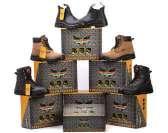


At around the same time, the creation of the ExxonMobil-led PNG LNG project happened remarkably quickly. The plan shifted in the mid-2000s from creating a gas pipeline to Queensland to exporting LNG to the rest of the world.
During its peak construction period, PNG LNG had around 22,000 people working on it, including about 8000 Papua New Guineans.
During the COVID-19 pandemic, PNG didn’t do as badly as some of its neighbouring countries, partly because PNG didn’t have the massive dependence on a single distressed industry like tourism and partly because PNG couldn’t lock down as other countries did due to its informal economy and lack of social protection systems. Households needed to grow food or cash crops, or conduct other (mostly micro) enterprises just to survive, and couldn’t depend on large employers or the state.

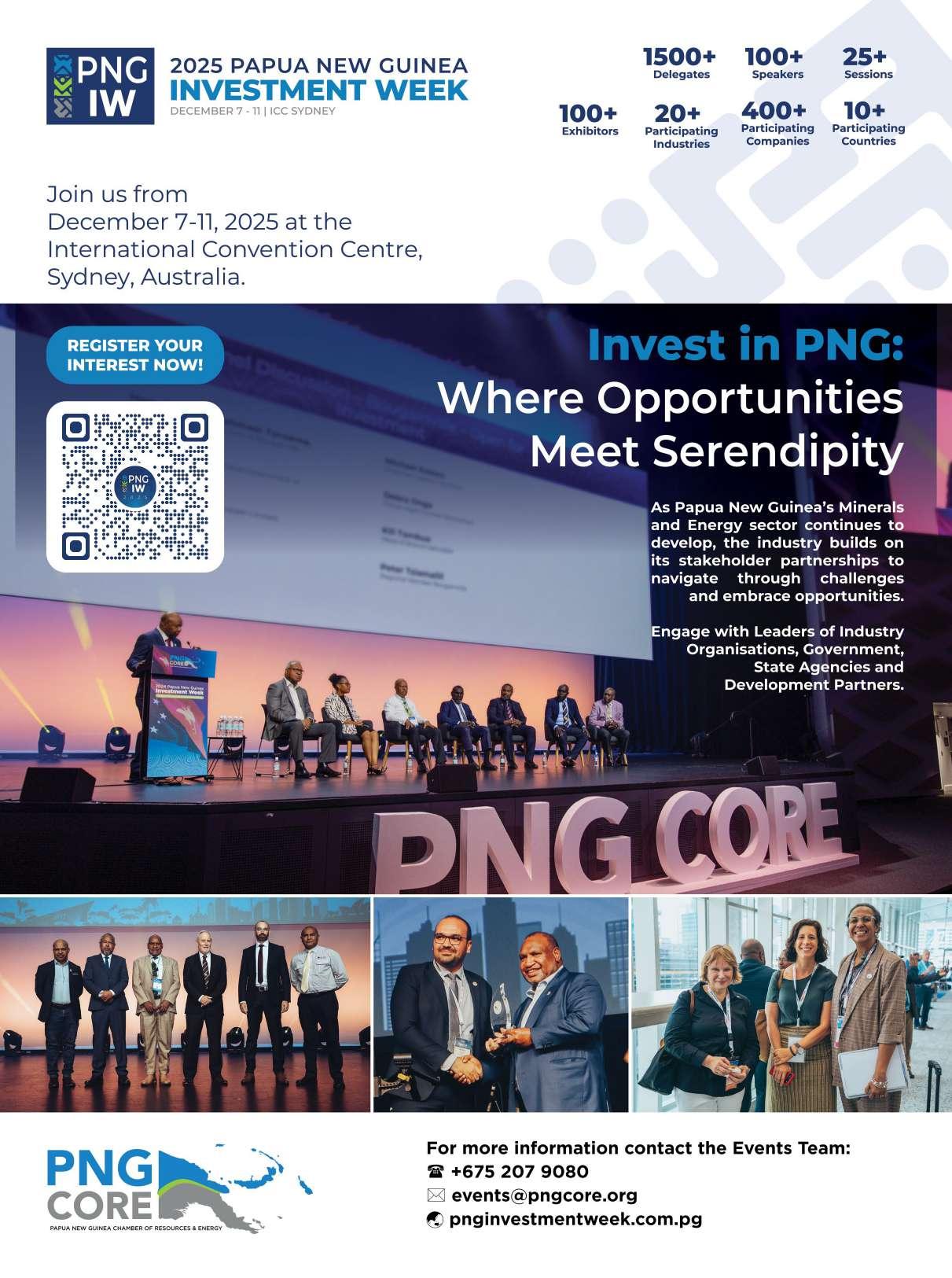
What They Said
This country and its people now enter independence and sovereignty, and as from now, we will be counted among the family of nations. I think we are more fortunate than many other countries. We have been lucky because we have reached full nationhood without the fighting and bloodshed that has been experienced by many other former colonies.

Today
Australia, herself once a group of colonies, has ended the role as a colonial power imposed upon her by an irony of history. Australia could never be truly free until Papua New Guinea was truly free. In a very real sense, this is a day of liberation for Australia as much as for Papua New Guinea.

Michael Somare, PNG’s first Prime Minister
We are lowering this flag, not tearing it down.
Sir John Guise, former PNG GovernorGeneral, at the lowering of the Australian flag, September 15, 1975
Papua New Guinea is now independent. The Constitution of the Independent State of Papua New Guinea under which all power rests with the people is now in effect. We have at this point of time broken with our colonial past and we now stand as an independent nation in our own right. Let us unite with the Almighty God’s guidance and help in working together for the future as a strong and free country.
Sir John Guise, former PNG GovernorGeneral, proclamation of independence
Gough Whitlam, former Australian Prime Minister
Australia remains deeply and irrevocably committed to Papua New Guinea.
Sir John Kerr, former Australian Governor-General
This period of transition is exciting but not without its serious problems. I am confident the qualities of your people, their dedication, and most of all your sense of humour will carry you through all obstacles.
Queen Elizabeth II
(The Queen did not attend PNG’s 1975 independence celebrations in person. However, during a previous visit in February 1974, she expressed confidence in the nation’s post-colonial future.)
I shall be able to take back many happy memories of a fascinating visit and of your very fine welcome to Her Majesty the Queen. His Royal Highness Prince Charles, Prince of Wales, representing Queen Elizabeth II, September 16, 1975
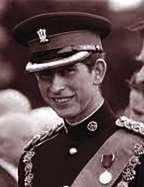
We are free! We are free! We are free! independence has come, now we all must work to unite Papua New Guinea. Geoff Baskett, songwriter and broadcaster (Baskett’s popular song, We Are Free, was sung at the independence celebrations.)
It’s our day Post-Courier headline, September 16, 1975
Papua New Guinea became independent not with flourish and fanfare nor with exuberant nationalism but quietly, shyly and soberly. In the capital, the three days of ceremony were divided neatly between God, Australia as retiring colonial power and Papua New Guinea as the emerging State.
Sydney Morning Herald, September 17, 1975
Excellence is our tradition.
We are proud to be 100% Papua New Guinean owned and entrenched in the country’s rich history and future.
The Group’s success and valued reputation has been achieved through Determined efforts, Professionalism, and the consistent and Safe delivery of Quality services in observance of AUS/NZ industry Standards to achieve the desired outcomes of our Clients.
Minpac is recognized as a GEDSI industry leader with a systematic approach to integrate the core goals of Gender Equality, Disability and Social Inclusion including safeguard action plans on our Projects.
Minpac’s Comprehensive On the Job Training regime (OJT) imparts Purpose, Scope and Diligent Procedures for employee training, needs assessment, evaluation and continual improvement.
Our ability to work collaboratively with project partners to find solutions that enhance delivery results defines our enviable reputation in the Construction Industry in PNG.
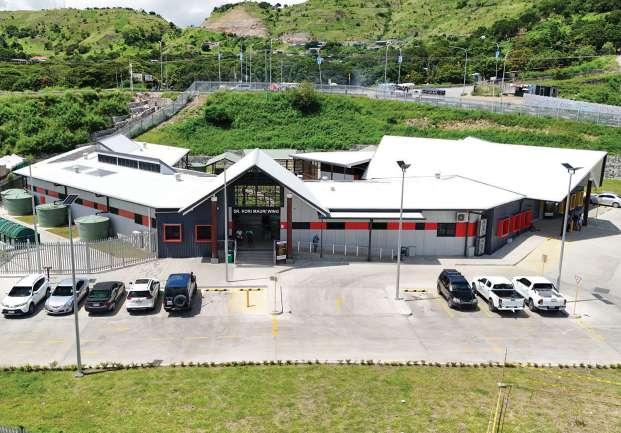






Kimbe Market
MAPAI GROUP
YOUR TRANSPORT AND LOGISTICS SOLUTION PROVIDER IN PAPUA NEW GUINEA AND BEYOND


Today the fleet has grown to be one of the most modern fleets of prime movers in PNG, Transporting of FMCG and hazardous materials (for the mining sector), to food commodities delivered to major centers.
Our Mapai fleet is made up of an ever reliable modern fleet of prime movers, and is backed up by a solid rescue and recovery team strategically placed in Goroka, Mt Hagen and Lae. These fleets are backed with trailers specifically designed to withstand the rigors of the unique conditions of the Highlands Highway including fuel tankers and widening floats for over dimensional loads. Our internationally recognized systems and processes support our products and service offerings and backed by years of industry experience in our people.

Mapai Transport has grown from humble beginnings in 1987 with one truck and Jacob Luke’s desire to be the preferred transport operator on the Highlands Highway.

Transport

No matter whether you need to move hundreds of containers along the Highlands Highway or like to send a single load throughout the Momase Region
Mapai Transport Ltd. provides adhoc and contracted solutions that suit your needs. With the latest technology fitted to our trucks and containers you’ll receive value information and insights for your supply chain – 24/7.
FCL, LCL, FTL, LTL, Bulk, Oversize – speak to our Customer Service today to get a quote.
Customs And Freight Forwarding Logistics
We know that every customer and industry is unique. Our logistics experts have the expertise to tailor solutions matching your needs. Whether it is within Papua New Guinea or beyond.
For over a decade, the most successful companies in Papua New Guinea trust our services in handling their goods.
And we are dedicated to continue developing the best solutions and services for your needs.
In an ever-changing world of regulations and policies, intricacies of Import- and Export procedures can be challenging.
Mapai Logistics Ltd has a team of dedicated employees that concentrate on providing seamless, transparent and timely services to facilitate the import and export of goods into and out of Papua New Guinea.
Connected directly to PNG’s electronic Customs System “Asycuda”, we handle your import/ export duties in a secure and efficient way.

TRAVELLER
OUR COUNTRY, OUR REGION, OUR WORLD
BESTof the BAY
Underwater photographer Karen Ho checks into remote Tawali Resort at Milne Bay to explore a range of scuba diving sites.



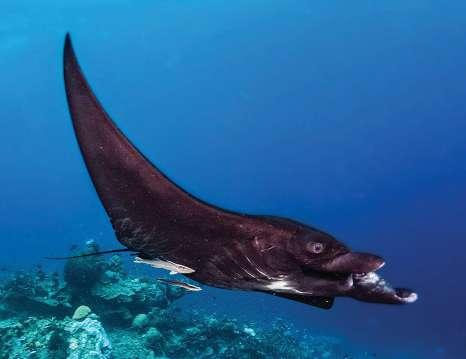
There are many ways to explore Milne Bay. I’ve chosen to stay at Tawali Leisure and Dive Resort, which is on the remote north coast. After a short flight from Port Moresby to Alotau with Air Niugini, it’s a further two hours by bus and boat to the resort, which perches on a volcanic bluff overlooking unspoilt waters.
Tawali was built by local craftsmen, so there are carved totems and woodwork through the resort. There’s a large central main lodge and guest bungalows connected by covered walkways.
Being an underwater photography enthusiast, I’m here to explore the range of dive sites the region has to offer, including Lauadi at Dinah’s Beach.
The term ‘muck diving’ (exploring muddy or sandy bottoms of the sea) is usually associated with Anilao in the Philippines and Lembeh in Indonesia, but the practice was in fact forged in Papua New Guinea.
Back in the 1980s, when celebrated underwater photographer and Milne Bay scuba diving pioneer Bob Halstead and his wife Dinah were exploring the fringing reefs around the north coast of Milne Bay, Bob discovered that the muddy black sediment in the water just out from Lauadi (the village Dinah was from), was full of rare sea creatures that could not be found on the coral reefs.
In the water in front of the village, the beach slopes at about 30 degrees. Divers only need to descend to about 10 metres where a lot of the rare sea creatures, such as the tiger butterfly sea slug (Cyerce nigra), can be found with a keen eye.
If you’re diving without a camera, it’s a good idea to take a magnifying glass to see the smallest animals, which may be just five millimetres long.
PICTURES: KAREN HO
The gorgonian sea fan at Deacon’s Reef made famous by National Geographic (opposite); a tiger butterfly nudibranch at Lauadi (top left); a sap-sucking sea slug (middle left); a manta ray (bottom left).
About five minutes from Lauadi, the topography and underwater scenery change dramatically from a muddy bottom to picturesque coral reef that is visible through the crystal-clear water from the surface.
Unlike most sites, where you start your dive at the drop-offs, at Deacon’s Reef, right by the cliff edge, you will encounter one of the most famous sea fans in PNG, photographed by David Doubilet for a double-page spread in a National Geographic magazine in the 1980s. Needless to say, I made my best attempt at re-creating that famous photograph, and I was pleased with the result.
At night, there is good opportunity for ‘black water photography’ on the house reef just 200 metres from Tawali. The reef is full of life and it’s like watching a nocturnal party of sea life.
The reef starts in shallow 10-metre water but then drops sharply. Many of the species that reside in the deep rise and feed in shallower water at night.
At Deacon’s Reef you will encounter one of the most famous sea fans in PNG, photographed for a double page spread in a National Geographic magazine in the 1980s.
Apart from the many dive sites in the area, there are World War 2 plane wrecks to explore, such as the famous ‘Black Jack’ B-17F Flying Fortress bomber. Snorkellers aren’t left out either. There are plenty of sites for them, including Boi Boi Waga Island, with a white sandy beach where you can go for a day of snorkelling and a picnic.
On land, you can visit waterfalls and hot springs, do a coastal village walk, go birdwatching, venture into Skull Cave and enjoy a mumu (traditional stone cooking).
Tawali has a range of rooms from doubles to deluxe bungalows with private balconies with sea views. Meals are included with accommodation and prices are listed at tawali.com.
Air Niugini flies from Port Moresby to Alotau (Gurney) 12 times a week. See airniugini.com.pg.
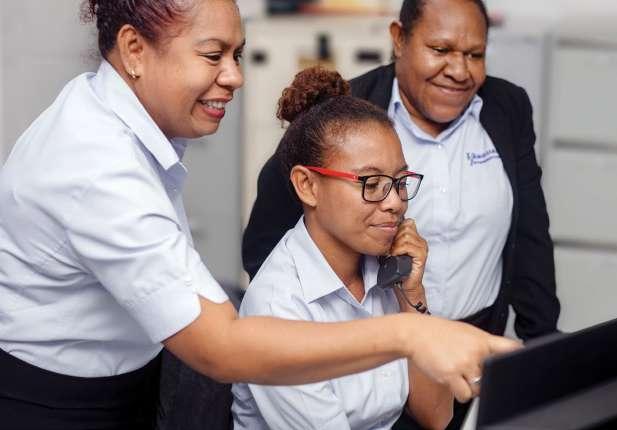








PNG
MILNE BAY
Km 130
Port
Moresby
Tawali Resort
Alotau
A coral seascape at Tania’s Reef near Tawali.

Air Niugini ushers in a new era in flight
PNG’s national airline is introducing Airbus A220 aircraft into its fleet, coinciding with the nation’s 50th anniversary of independence.
Air Niugini is scheduled to welcome the arrival of its first new Airbus A220, dubbed the People’s Balus, this September, a milestone that coincides with Papua New Guinea’s 50th independence anniversary.
This plane’s arrival signifies a transformative

step in the nation’s aviation history, introducing a new era of modern, efficient, and comfortable air travel.
The A220-300 entered the final assembly phase at Airbus’s Mirabel facility in Canada at the end of May and when Paradise went to press it was scheduled to depart Mirabel in the first week of September, ensuring its arrival for the independence celebrations.
Air Niugini will be the 25th airline to operate the state-of-the art A220, with over 900 of these new-generation aircraft having been ordered by 30 other customers around the world, of which over 400 are already in operation.
Air Niugini’s 11 brand-new A220s will come in two variants – three A220-300 planes
seating 138 customers, and eight smaller A220-100 planes with 114 seats.
The A220s will initially replace the airline’s long-serving Fokker 100/70 fleet on domestic routes, and eventually the Boeing 737s as well. While the initial focus is to upgrade domestic services, the A220 is also capable of servicing all Air Niugini international destinations, as well as some potential new routes which the airline is considering.
The Airbus A220 is renowned for its advanced technology and passenger comfort. Key features include, fuel efficiency, range and capacity, passenger comfort and sustainability.
Powered by Pratt & Whitney’s latestgeneration GTF engines, the A220 offers a 25 per cent reduction in fuel consumption


and CO2 emissions per seat compared to previous-generation aircraft.
The aircraft boasts the largest cabin, seats, and windows in its class, ensuring a superior travel experience over a range of up to 3400 nautical miles, making it ideal for both domestic and regional routes. It is also capable of operating with up to 50 per cent sustainable aviation fuel (SAF), with Airbus aiming for 100 per cent SAF capability by 2030.
All the A220 aircraft will be fitted with comfortable business and economy seating, and will offer complimentary WiFi for all passengers so they can stream their favourite programs and keep in touch with family, friends and work while they are flying.
Air Niugini Chief Executive Officer Gary Seddon says: “The arrival of our first Airbus
The arrival of our first Airbus A220 marks a transformative era for aviation in PNG and the region.
At the time Paradise went to press, six pilots were undergoing training in Montreal, with an additional four set to start shortly.
Twelve licensed aircraft maintenance engineers (LAMEs) have completed a rigorous training program, including sessions at Air Niugini’s Aviation Technical Training Centre in Port Moresby and in Singapore with Lufthansa Technical Training. They also received hands-on experience at the Airbus facility in Mirabel and on-the-job training with QantasLink in Canberra, Australia. This training aligns with the Competency-Based Training and Assessments program initiated by the Civil Aviation Safety Authority of Papua New Guinea.
A220 marks a transformative era for aviation in PNG and the region. And as we celebrate our nation’s 50th independence anniversary, the A220 symbolises our commitment to connecting communities, fostering economic growth, and ushering in a new era of sustainable and comfortable air travel for all Papua New Guineans.”
In preparation for the A220’s integration, Air Niugini has invested in extensive training programs for its pilots, engineers, cabin crew, and ground staff.
Captain Beverly Pakii made history as the first Papua New Guinean to achieve command on the A220, completing her training with distinction at the Airbus facility in Montreal last November. She was closely followed by Captain Timothy Narara.
Cabin crew members are receiving specialised training in Zurich, Switzerland, while ground staff are undergoing comprehensive preparation to ensure operational readiness upon the aircraft’s arrival.
The introduction of the A220 will enable Air Niugini to enhance its domestic network and expand regional international services. The aircraft’s performance and efficiency make it well-suited for operations across PNG’s challenging terrain and for connecting to key destinations in the Asia-Pacific region.
Following the arrival of the first A220, Air Niugini anticipates the delivery of a second and third aircraft before the end of the year. This fleet modernisation initiative underscores the airline’s commitment to providing safe, reliable, and comfortable air travel, fostering economic growth, and strengthening national unity.


A stylised Air Niugini A220 flies over Port Moresby.
Daniel Scott visits the latest riverside development in Australia’s third-largest city, which is steadily increasing its food and hotel offerings ahead of the 2032 Olympics.
With the recent announcement of the building of a new AUD$3.8 billion, 63,000-seat stadium for the 2032 Olympic and Paralympic Games, Brisbane has taken another step toward welcoming the world in seven years.
I’ve been visiting Brisbane regularly since the 1980s and in those four decades have watched it change from provincial town to Australia’s increasingly sophisticated thirdlargest city.
Crowding around the sinews of the Brisbane River, much of the city’s evolution has taken place around the waterside, from the South Bank cultural precinct and parklands, opened in the 1990s, to nearby River Quay, completed in 2011, to the impressive recent development, Howard Street Wharves, with its onsite brewery, hotel and restaurants, under the Story Bridge.
The latest riverside development is Queen’s Wharf, at the edge of Brisbane’s CBD, with the Star Grand hotel and casino at its fulcrum, and featuring numerous fine dining restaurants.
While it isn’t quite beside the river due to the Pacific motorway running beneath it, Queen’s Wharf is directly connected with South Bank, across the water, by the new Neville Bonner Bridge. The arched walkway, dedicated to Aboriginal politician Bonner, who died in 1999, is not only the new precinct’s most attractive feature but functional too, with around 10,000 pedestrians a day using the bridge.
It is a cross-river shortcut I use often during my stay at the Star Grand, including one evening when I stroll over to see a play at Queensland Performing Arts Centre (QPAC).
BRISBANE



Much of Brisbane’s food and entertainment evolution has taken place around the river (top); the pool at the revamped Amora Hotel (above left); the ‘sushimi florist’ Alex Yu (above right); the Neville Bonner Bridge (right).
SHAPES UP



The latest riverside development is Queen’s Wharf, at the edge of Brisbane’s CBD.
Back at the Star Grand, I venture up to Sky Deck each morning for coffee with views over Brisbane, at Babblers cafe, and one night have dinner at the new Sokyo restaurant, downstairs in the lobby.
There is an element of unfolding ritual in Sokyo’s signature sharing menu, with exquisite Japanese cuisine given an innovative twist by executive chef Alex Yu (aka the ‘sashimi florist’). Among the highlights are a kingfish ceviche, a crunchy whiting tempura, a miso-glazed toothfish that makes magic out of one of the ocean’s ugliest creatures, and a wagyu striploin, with Japanese chimichurri that underlines Queensland’s reputation for the finest beef.
It’s hoped that, in time, Queen’s Wharf will help regalvanise Brisbane’s CBD, which has been quiet since the COVID-19 pandemic. There are already signs of a pickup, if lunchtime at nearby Naldham House Brasserie is anything to go by.
Opened in mid-2024, in a heritage-listed shipping office, the brasserie is on the ground floor of a three-level venue that also includes a cocktail bar and modern Cantonese restaurant. The brasserie is a light, convivial space with a European-themed menu featuring French favourites like chicken chasseur and beef cheek bourguignon. It also draws on this region’s excellent seafood in dishes like Queensland king prawns in fermented chilli butter and a delicious lobster spaghetti.
Away from the centre, Brisbane’s inner-city villages continue to deliver the best dining surprises and chef Dario Manca’s Attimi, in Paddington, is the most dazzling among recent openings.
I reach Attimi by following crowds of Broncos rugby fans streaming to Suncorp Stadium for a home game, on Friday night, but once inside the intimate 28-seater restaurant, I’m immediately transported to Italy.
Melding style – in the industrial chic surrounds, and the inventive detail in the food – with substance, in classic Italian dishes given a Michelin-standard update, Attimi is Manca’s tribute to his homeland’s diverse culinary riches.
TRAVELLER
The 12-course set menu here plots a journey through the Italian regions, from Sardinian starters of smoked stracciatella, Olasagati anchovies and green tomatoes through a fish crisp artwork with ricotta, tarama and white sardines from central Emilia-Romagna, to a memorable cured coral trout with prosciutto and cardamon sauce, from coastal Abruzzo. The menu finishes with a flourish, with an oversized Ferrero Rocher dessert that puts the famous dappled chocolate in the shade.
Attimi is, like Sokyo, setting the highest standards for Brisbane as it prepares to welcome the world in 2032, and once Queen’s Wharf is complete it will add to the Queensland capital’s enviable attributes.
Air Niugini flies from Port Moresby to Brisbane eight times a week. See airniugini.com.pg.

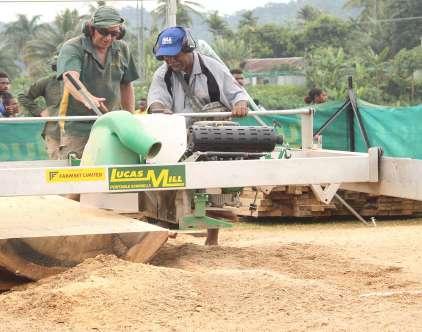
Achieve Great Results





Lucas Sawmill is transforming how �mber is processed across Papua New Guinea and the Solomon Islands and Farmset is proud to be the trusted distributor. Designed for strength, portability, and ease of use, it’s the ideal solu�on for Government agencies, NGOs, communi�es and even homeowners seeking to unlock the full value of local �mber resources.
From forestry projects to rural development ini�a�ves, the Lucas Sawmill delivers cost-effec�ve, on-site milling in even the most remote areas.
Backed by Farmset’s 10 - branch network, we’ve helped thousands - from small businesses to large scale opera�ons - achieve greater produc�vity and independence. We also provide live demonstra�ons at major events like the Morobe Show and offer full training and technical support to ensure safe, confident use.
With the Lucas Sawmill and Farmset’s ongoing assistance, you’re not just buying a machine but - you’re inves�ng in long-term value, community growth, and smarter forestry solu�ons.


Building the next 50 Years: Supporting rural entrepreneures, farmers, and government - backed initiatives to process timber
CELEBRATING OUR ROOTS



STAYING THERE: The Star Grand is a five-star hotel, with casino, observation deck and city views from many of its 340 rooms and suites. Rooms from A$598 a night, see star.com.au/brisbane. The Amora Hotel is a revamped five-star property behind Central Station, with outdoor pool. Rooms from A$228 per night, see amorahotels.com/brisbane.
EATING THERE: Sokyo, star.com.au/ brisbane/eat-drink/signature-dining/ sokyo; Naldham House Brasserie, naldhamhouse.com.au; Attimi, attimi. com.au.

A king-sized river room at the Star Grand hotel (far left); a platter at Sokyo, which is serving exquisite Japanese cuisine at the new Queen’s Wharf precinct (left).
Many of the city’s main attractions are found around the central Point Cruz peninsula.

48 HOURS
IN HONIARA
Daniel Scott reveals the best cafes and restaurants in the Solomon Islands capital, as well as the best things to see and do.
Situated on a slim strip of coastal land on the northern shore of Guadalcanal Island, Honiara is both the capital of the Solomons and the country’s main commercial centre, with a rapidly growing population, now above 110,000.
The city emerged from the rubble of World War 2 after the US established a base there during the Guadalcanal campaign against the Japanese.
Many of the city’s main attractions are found around the central Point Cruz peninsula, named by the Spanish explorer Alvaro de Mendana, who discovered the Solomons in 1568.
It is easy to see most of the city in one day before spending a second day exploring beyond Honiara.
DAY 1 MORNING
Begin your visit with breakfast at the Breakwater Cafe, relaxing into the Solomon Islands vibe over Honiara’s best coffee, cakes and pastries. For something more substantial order from the all-day menu, which includes turmeric or chilli choy sum scrambled eggs and a big breakfast option with bacon, sausage, grilled tomatoes, potatoes and eggs.
After breakfast visit the adjacent Craft Market Centre to browse local artwork, carvings and other souvenirs. The Solomon Islands National Art Gallery (free, open Monday to Friday from 9am to 4.30pm), within the market, also has art and intricately carved objects, such as replica dugout canoes, for sale, with information on the

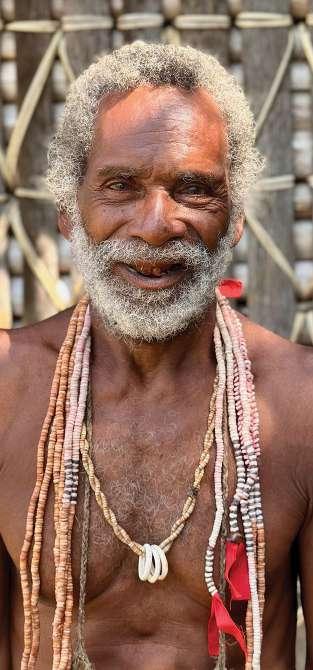
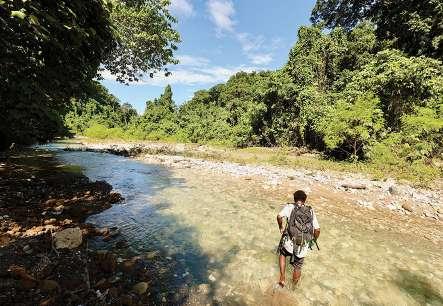
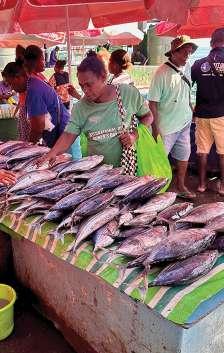
artists who created them alongside exhibits. solomons.gov.sb/ministry-of-culture-and-tourism/ national-art-gallery
On nearby Commonwealth Street, leading to Point Cruz port, is the Solomon Scouts’ Coastwatchers’ Memorial. This monument commemorates the crucial role played by Solomon Islanders in assisting the Allies during World War 2, by reporting on Japanese activities, and by the network of servicemen, activated by the Australian navy, that remained concealed behind enemy lines, passing on information by radio. In August 1943, the Scouts helped ensure the rescue of future US President, John F Kennedy, after his patrol boat was sunk by a Japanese destroyer.
Also by the port is Unity Square, with its tallest pole flying the national flag alongside those of the nation’s nine provinces and carved totems representing their diverse cultures.
Honiara’s busiest social hub is Central Market, on the waterfront, a great place to try some organic produce and meet locals. It combines a fish section that includes reef
PICTURES: DANIEL SCOTT
The swimming pool at the Heritage Park Hotel (top); crossing the Belaha River to Tenaru waterfall (above); Chief Edwin Kusele from Hotomai village (far left); Honiara’s Central Market (left).
fish and shellfish fresh off the boat, and a large, colourful fruit and vegetable market with stalls piled with taro, yam, watermelon, sweet pineapple, bananas and bush limes. It’s open daily except Sunday.
DAY 1 AFTERNOON
The Solomon Islands comprise more than 900 islands spread over 1600 kilometres of ocean and its population is mainly Melanesian, with small numbers of Polynesian and Micronesian descent. The Solomon Islands National Museum, in central Honiara, is a good introduction to the country’s culture, with galleries dedicated to prehistoric migrations and archaeological sites and exhibits that reflect the islanders’ heritage, living off the land and sea, using traditional knowledge and skills.
Among the artefacts on display are elaborate shell money pieces, still used on some islands in marriages and to settle disputes, in which the most colourful shells are the most valuable.
Another gallery sheds further light on the Solomon Scouts and Coastwatchers who rescued hundreds of Allied airmen and naval personnel and civilians, from behind enemy lines, in World War 2. solomons.gov.sb/ministry-of-culture-and-tourism/ solomon-islands-national-museum
The Guadalcanal campaign, in which Allied forces battled to liberate the Solomon Islands from the Japanese between August 1942 and February 1943, is seen as one of the most crucial to the outcome of World War 2. Much fighting centred on Honiara, where the US established a base, and the Guadalcanal Island coast. The American Memorial at Skyline Drive, dedicated to the thousands of Allied servicemen who died in that campaign, overlooks several of the battlefields. It is a moving place to spend the late afternoon, close to dusk, reading descriptions of the battles on four commemorative walls directed toward the sites where they were fought. abmc.gov/cemeteries-memorials/about-guadalcanalmemorial
DAY 1 EVENING
Back in town, head to the Solomon Kitano Mendana Hotel for sundowners looking across Iron Bottom Sound, at Raratana Terrace, beside the harbour.



to both eastern and western battlefields, on either side of the city. The west coast tour takes you to the Vilu outdoor Military Museum and allows time for a snorkel at Bonegi Beach, off which are several wrecks. destinationsolomons.wordpress.com
Follow up with dinner at Honiara’s only Japanese restaurant, at the hotel, the Hakubai, where the sashimi, sukiyaki and tempura are all delicately authentic and can be accompanied with a sake or shochu.
http://kitanomendana.com/en/restaurant
DAY 2 MORNING
For those with an interest in World War 2 history, there are many significant sites to explore around Honiara. Local operator Destination Solomons offer three-hour tours
Alternatively, you can head into the hinterland for an experience of village life and the Solomons’ natural beauty. Just 20 kilometres from Honiara is Hotomai Cultural Village, where you’ll be given an insight into how seven families live off the land, growing an array of organic vegetables and fruit, and keeping traditional skills like making fire using only sticks, weaving baskets from pandanus and coconut palm leaves and cooking on hot stones. From the beginning, when you are challenged by warriors and welcomed by women doing a Kuko dance, to the end, when you are farewelled with melodic tribal
Breakfast at the Heritage Park Hotel (top); a friendly local at Hotomai (above); Tenaru waterfall (right).




Salt Restaurant at Ela Beach Hotel named PNG’s Best Hotel Restaurant 2024.
The prestigious award was presented to Salt Restaurant by the World Culinary Awards. Achieving this level of recognition is a remarkable honour and reflection of the team’s passion for quality food and warm hospitality. Since opening its doors in February 2021, the team at Salt have continuously strived for excellence providing customers and patrons the best hospitality experience Melanesia has to offer.



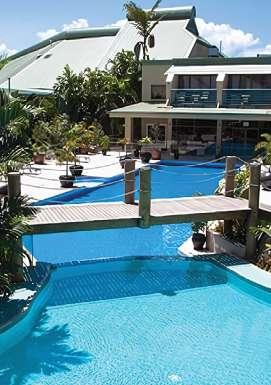



Steamships Hospitality's commitment to excellence in Safety, Security and Hygiene awarded with SafeHotels Certifications
Grand Papua Hotel and Gateway Hotel were awarded their prestigious titles in December 2024. Safehotels is about passion for hotels and the highest standards of safety, security and hygiene for all guests and patrons. Standards are independently set through a world-leading Certification program, including on-site assessments by experts with years of knowledge and understanding of hotels across the globe.
These first-ever certifications in Australasia and the Pacific Islands highlight our leadership in hospitality excellence. Affirming our dedication to providing a secure and welcoming environment for our guests, while setting new industry benchmarks.
chants, this is an enchanting encounter with Solomon Islands’ culture. facebook.com/profile.php?id=100069582896969
Further into the hinterland, on top of a hill overlooking the Guadalcanal coastline, is the family-owned Parangiju Mountain Lodge, about an hour’s drive along a winding dirt road from Honiara. From the lodge, a guide will take you on a 5.5-kilometre trek return trek to Tenaru waterfall, the trail threading down through the rainforest and crossing the Belaha River before reaching the powerful 100-metre-high cascades. You can swim in a natural pool beneath the falls and follow the stiff climb back up with lunch and a cold bush lime juice at the lodge. visitsolomons.com.sb/tour/parangiju-mountain-lodge
DAY 2 AFTERNOON
Cocoa produced in the Solomons, and particularly on Guadalcanal Island, is prized by international chocolate-makers. For an insight
into how that cocoa is grown, harvested and processed, it is worth visiting the Amazing Grace plantation, behind Tenaru Beach, on the way back to Honiara. If you’re lucky you’ll get to meet the inspiring local woman, Grace Fekau, who founded the farm, in her 60s, as well as taste some handmade chocolates. facebook.com/Fekausfarm
DAY 2 EVENING
The Splash Bar and Grill, at the Heritage Park Hotel, on Honiara’s waterfront, is perfect for winding down over sunset cocktails after a day exploring. For dinner, if you haven’t yet tried local lobster or crab, move onto GG’s restaurant, inside the hotel.
For further information, see visitsolomons. com.sb.
Air Niugini flies from Port Moresby to Honiara four times a week. See airniugini.com.pg.
PLACES TO STAY
THE HERITAGE PARK HOTEL
At the harbourside, this is Honiara’s premier accommodation with 60 executive rooms and 27 serviced apartments. Rooms from PGK1350/ S$2750 per night. heritageparkhotel.com.sb
KING SOLOMON HOTEL
The central three-star hotel has 73 airconditioned rooms, from PGK480/S$980. kingsolomonhotel.info
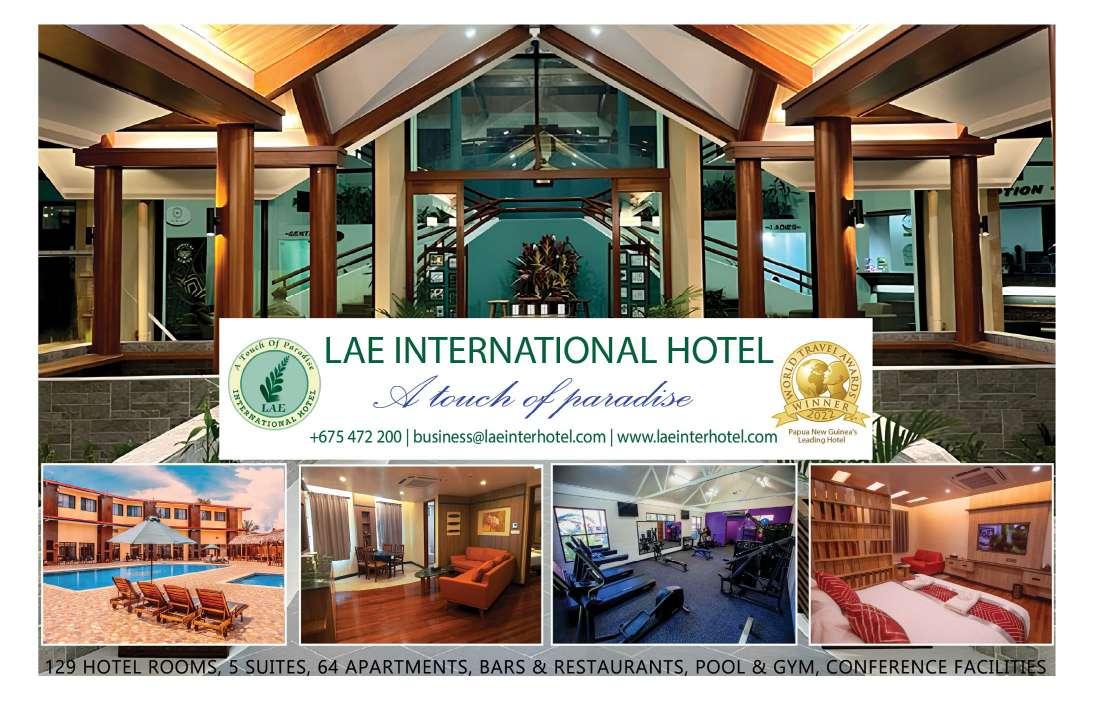




BY BRONWEN GORA
HOTEL REVIEW: ADMIRAL HOTEL MANILA, PHILIPPINES
Tel +63 2 5318 9000, see admiralhotelmanila.com
WHO STAYS? Holiday-makers seeking luxury boutique living in a prime location, business travellers.
HOW BIG? 123 rooms including six executive suites and the Dona Presidential Suite. Lobby lounge, Admiral Spa, rooftop bar and pool, four restaurants.
COST Superior room for two PGK835; executive suite with breakfast for two and Club Lounge access PGK2095.
CHECK IN 2pm
CHECK OUT 12pm
HIGHLIGHTS Catching a tropical sunset over Manila Bay, cocktail in hand, at the rooftop bar. Taking a special Golden Era city tour in the Admiral’s sparkling white, airconditioned 1950s Buick Super 8. Descending into the hotel’s Shanghai-style hidden basement speak-easy Ruby Wong’s Godown.
NEARBY Several of Manila’s best shopping malls, all major sightseeing destinations, the Manila Baywalk.
Wi-Fi in rooms/public areas:
TV:
Air conditioning in room:
Room service:
Swimming pool:
Free airport transfers:
Gym:
Business centre:
Hotel arranges tours:
Breakfast included in room charge:
*On-loan laptops available. Front office reception offers printing, photocopying and scanning services for a fee.

LOCATION
Right on the major thoroughfare of Roxas Boulevard, directly across from Manila Bay and about 30 minutes’ drive from Ninoy Aquino International Airport. The waterside Manila Baywalk is popular for morning strolls and jogs before the heat sets in. Historic Rizal Park, the Philippines’ largest urban park, is in walking distance.
the place
Utterly charming. Built in 1939, the Admiral (now part of the M Gallery collection) retains its heritage facade with revamped interiors evoking Manila’s 1920s and 30s Golden Age. Guests receive warm welcomes from staff as they step inside the gleaming marble foyer and elegant lobby lounge where the eye-catching art installation Pages of History soars the hotel’s full height to a decorated ceiling. Alongside the lobby a counter serves handmade delicacies from famous Manila chocolatier Kevin Ong. Excellent treatments are available at Parisian-inspired Admiral Spa featuring Biologique Recherche products.
ROOMS
My beautifully decorated executive suite features a brass wall sculpture of two women

folk-dancing, a king-size bed, windowside settee, minibar and generous writing desk. Behind a curved decorative partition is a luxurious ensuite with gold fixtures and scalloped sink.
FOOD AND DRINK
Choose from four restaurants: The Admiral Club Manila Bay, rooftop Coconut Grove, El Atrio Lounge in the lobby, and Asian dishes plus innovative mixology in basement bar Ruby Wong’s Godown. Banquets for up to 10 guests can be arranged in the Presidential Suite.
WHAT GUESTS LIKE
“Drinks and food were beyond expectation. Highly recommended place. Definitely coming back.” – TripAdvisor
“The rooftop bar is a great location to see a beautiful sunset over Manila Bay.”
– TripAdvisor
“This is our first time trying Admiral buffet and it was awesome. The food was beyond ‘wow’, various options to eat – love their steak. Not only the food but also their staff were witty and nice.”– TripAdvisor
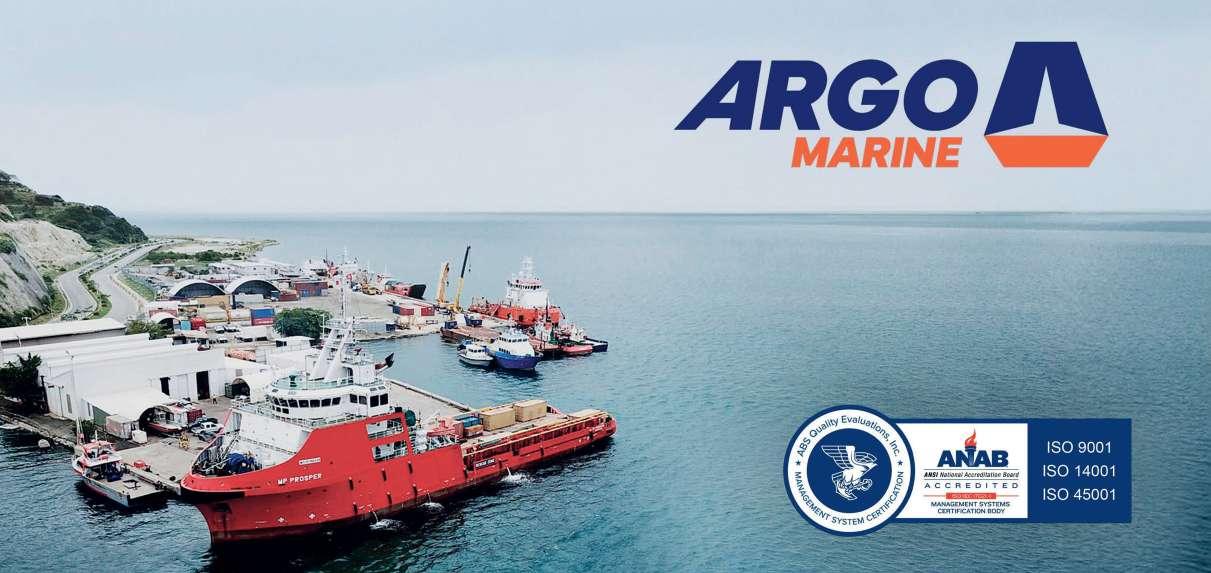
Argo Marine is a specialised provider of marine and project services, navigating the challenging and dynamic operating environment of Papua New Guinea and the South Pacific.

SERVICES:
Vessel Chartering • Marine Operations & Contracting
• Port & Vessel Agency
• Customs Clearance & Permitting
• Subsea Services – Diving, ROV, Survey
• Supply Base & Wharf
• Engineering & Slipway
TRAVELLER
time traveller
Bank opening in Port Moresby, 1967
The Papua and New Guinea Development Bank started operations on July 6, 1967. Pictured at the official opening are, from left, Michael Tibu (position with bank unknown), the Secretary of the Australian Department of Territories George Warwick-Smith, the Australian Minister for Territories, C.E. Barnes, the bank’s Manager Operations John White, and Mahuru Rarua Rarua (position with bank unknown). The bank’s purpose was to provide finance for primary production and small commercial enterprises. It started with A$18 million in capital and appointed 301 agents around the country. After PNG achieved self-government in 1973, the bank deleted ‘and’ from its name the next year and became the Papua New Guinea Development Bank. It morphed into the Agriculture Bank, then the Rural Development Bank before its present-day iteration as the National Development Bank.
If you have a photo that may be suitable for Time Traveller, email paradise@ businessadvantageinternational.com.
BY JOHN BROOKSBANK
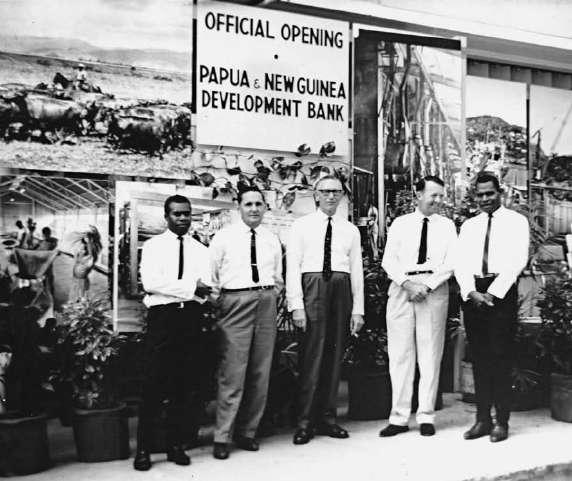
ARE YOU INTERESTED IN BECOMING
ROYAL PAPUA YACHT CLUB? ROYAL PAPUA YACHT CLUB?
The Royal Papua Yacht Club congratulates Papua New Guinea on 50 years of Independence We are proud to be part of this 50 of Independence. We proud to be part of this nation's vibrant history and continued growth, and we honor the nation's vibrant history and continued growth, and we honor the spirit, resilience, and unity that have shaped our country over the spirit, resilience, and unity that have shaped our country over the past five decades. five decades

Restaurant, Café & Bar
Restaurant, Café & Bar
Fishing (Game & Leisure) Fishing (Game & Leisure)
Diving & Snorkeling Diving & Snorkeling
Learn to Sail Courses Learn to Sail Courses
Pee Wee Sailing & Fishing
Pee Wee Sailing Fishing
50 Gaming Machines 50 Gaming Machines
Canoeing Canoeing
Chandlery Chandlery



As the leading members-only aquatic sports club in the region,
As the leading members-only aquatic sports club in the region, we are committed to delivering exceptional experiences across we are committed to delivering exceptional experiences across family, social, dining, marina, and water-based activities. With family, dining, marina, and water-based activities With our waterfront facilities and diverse membership, we strive for waterfront facilities and diverse membership, we strive for continuous improvement in service to our members while continuous improvement in service to our members while promoting respect for our oceans and the rich marine life that promoting respect for our oceans and the rich marine life that surrounds us. surrounds us











The Royal Papua Yacht Club congratulates Papua New Guinea on

IMMIGRATION ENTRY PERMIT WORK PERMIT
WE MAKE IT EASY FOR YOU. APPLY ONLINE FOR eVISA ON YOUR NEXT VISIT TO PAPUA NEW GUINEA.
THE FOLLOWING VISAS ARE AVAILABLE ONLINE:
Tourist (Own itinerary)
Tourist (Tour package)
Visiting relative
Restricted Employment Visa (REV)
Yacht person (Owner/Captain)
Aid worker/volunteer
Visitor/Journalist (60 days)
Visitor/sports person (60 days)
Easy visitor permit (30 days)
Easy visitor permit (60 days)
Business short-term single entry
Foreign Official - short term
NOTE: PNG Government has allowed visa auto-grant only to selected visa classes under the Visitor visa category and the Restricted Employment Visa (REV).
Apply through this website only:
www.ica.gov.pg
TRAVEL UPDATE
COVID-19 VACCINATION CARD



It is a requirement to attach your Covid-19 vaccination certificate and a Supplementary Health Form each time you apply for a visa.
VISA ON ARRIVAL (VOA)
VOA for all eligible nationalities remain suspended until further notice.
PASSPORT VALIDITY
Your passport must be valid for over 6 months.
WORK PERMIT
Foreign nationals who will be engaged in formal employment in the private sector needs a work permit approval before applying for a visa. Your employer is responsible for sponsoring your permits.
PRIORITY PROCESSING
A standard priority processing fee of US$2,000 applies to all visa categories for fast track processing within 24 - 48 hours.
VISA AND WORK PERMIT FORMS
You can download the forms on PNG Immigration website.
MIGRATION FEE
You can pay your migration fee for visa, passport and all other migration charges online by creating a MICA Account on the official website www.ica.gov.pg





LIFESTYLE, CULTURE, SPORT, ENTERTAINMENT
ON A MISSION
SAVING PNG’S ENDANGERED TREE KANGAROO
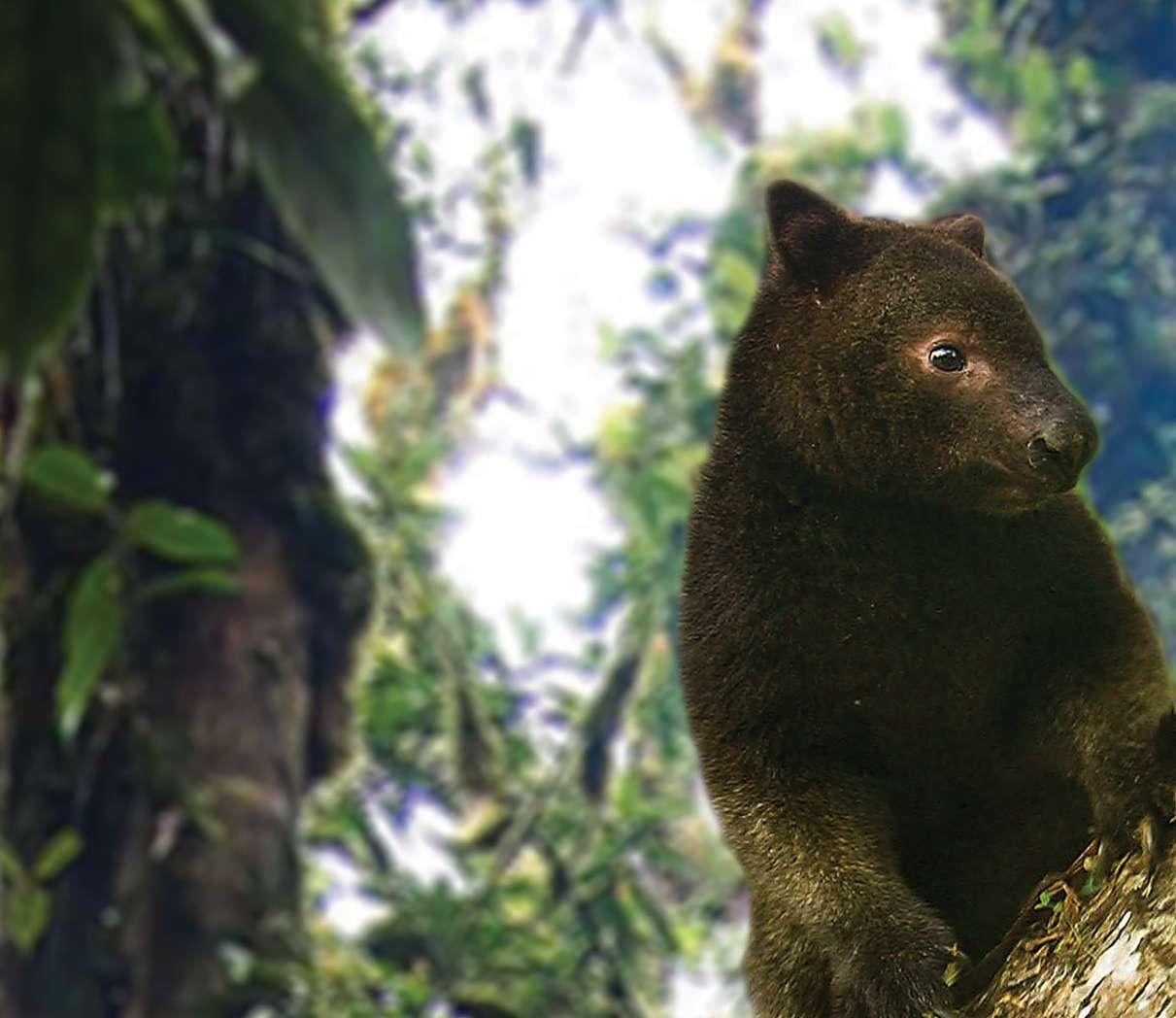
Belinda Jackson reports how two zookeepers have combined with thousands of PNG villagers in the Sandaun Province to save the tenkile tree kangaroo and at the same time improve village life.
High in the cloud forests of Sandaun Province, almost completely hidden from human view, lives a family of tenkiles. Not hunted. Safe.
It’s taken a community and one foreign couple more than 20 years to reach this benchmark for the world’s most critically endangered tree kangaroo. Australians Jim and Jean Thomas couldn’t be more pleased.
“Seeing the tenkile come back … you see people with tears in their eyes, who didn’t believe (it was going to be possible),” says Jim.
Step back to the early 2000s to Melbourne Zoo, where Jim met and married fellow zookeeper Jean, both working in native mammal conservation at the time.
“I was frustrated I didn’t feel I was making enough of a difference (in endangered species conservation),” says Jim. “We really wanted to do more.”
The book that would change their lives was Tree Kangaroos: A Curious Natural History, written by scientists Tim Flannery and Roger Martin. Throughout the 1980s and 1990s, Flannery had explored the remote Torricelli Mountain Range in the Sandaun Province and was the first person to document the critically endangered tenkile and its fairer cousin, the golden-mantled tree kangaroo, or weimang.
Inspired, Jim and Jean packed up their lives in the Yarra Valley, east of Melbourne, and in 2003 moved to Lumi, on the border

with West Papua in northwest PNG. Here, they would establish the non-government organisation the Tenkile Conservation Alliance (TCA).
“Many people thought it was an impossible task, to convince 10,000 people to not hunt an endangered animal that had been part of their staple diet for centuries,” says Jim in the full-length feature film about their work, Into the Jungle
It would take three years before they’d even see the critically endangered tenkile in the wild.
“People thought we were wasting our time, they thought we were crazy trying to save an animal we’d never seen outside a zoo. It was like trying to save a ghost.”



An endangered tenkile tree kangaroo (main photo); Anipo villagers in the Sandaun Province (above); tree kangaroo habitat (left); Jim and Jean Thomas with a village boy holding some rabbits in an animal husbandry program they have introduced (below).
PICTURES: JEAN THOMAS, ARBORMETA, MATT WEST, MARK HANLIN, GAVID DEVRIES
There are 14 species of tree kangaroo in the world: two in Australia and 12 on the island of New Guinea. The Torricelli Mountain Range is home to three: the tenkile, the weimang and the grizzled tree kangaroo.
When Jean and Jim were first led into the mountains, there were perhaps just 100 tenkile still alive. Solid little creatures, they’re cloaked in black and chocolate brown fur. A full-grown male weighs around 11 kilograms, the females a couple of kilos less.
In his 1992 documentary Islands in the Sky, Dr Tim Flannery is filmed holding a baby tenkile. Unaware that it is possibly the first of its species to be recorded on film, it curls up, trustingly, into the scientist’s arms like a furry baby, nibbling curiously at his beard.
“They’re big and boofy,” says Jim. “They use their thick, long tails and claws to climb to the top of the cloud forests.” They not only hop, like land-based kangaroos, they can also walk, stepping like humans. They’re also placid and intelligent, and shy. With good reason.
Hunted by guns instead of bow and arrow for a growing human population, their mountain homes are being deforested by logging, mining, palm oil plantations and agriculture; until recently, there was no protection for the last few animals of this species.
Signing an agreement to not hunt the tenkile was just one part of the puzzle ahead of the Thomases.
The first hurdle was simply reaching the 20 villages within the tenkile’s habitat. Lumi is one of the most remote areas of PNG, with most villages reached only on foot. The nearest is four hours from their base camp; the furthest is a couple of days’ walk.
Then, there was a language barrier: there are 10 languages spoken in the region, including one village that has its own language, spoken by no other. English is nobody’s first language, and nothing is written.
When they first walked through the mountains, Jim and Jean noticed the sickness. “Every kid had a running nose; there wasn’t enough protein. Everyone was hungry, you could see it in the health of the children,” says Jim.
The couple realised that to save the tenkile and weimang, they must take a whole community development approach. They
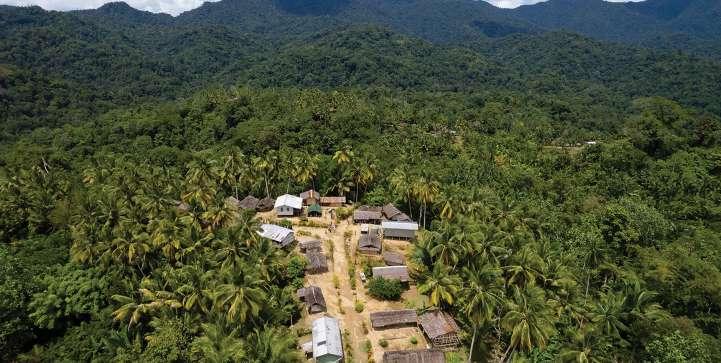

needed to offer alternative protein sources, but also to get the villagers healthy.
The TCA introduced animal husbandry such as rabbit, chicken and fish protein projects, with varying degrees of success. Alongside the immediate food concerns, they have undertaken long-term solar and housing supply projects, says Jean, who drew

on drama and puppetry to teach families about not only conservation, but also the importance of clean water and women’s rights in village representation.
There are now 43 member villages with tenkile or weimang on the land, and well over 50 other villages benefiting from TCA’s work.
People thought we were crazy trying to save an animal we’d never seen outside a zoo. It was like trying to save a ghost.
To date, they have installed over 370 water tanks into 50 villages, as well as solar household lights and streetlights; created 50 fish farming and rabbit farming projects; and completed training programs in gardening, research and conservation that benefit the 13,000 people in the alliance.
And, they’ve stopped the hunting of the critically endangered tree kangaroos, with small family groups now being spotted closer to villages – something not seen in living history.
And for Jim and Jean, it is clear the population is increasing: using sightings, camera traps and mobile phone app
Asier village in the Sandaun Province is taking part in the program to save the tenkile tree kangaroo (top); Jim Thomas is welcomed by villagers (left); a weimang tree kangaroo (above).

reporting, they estimate the elusive tenkile’s population at up to 500.
Jim says the biggest threat is logging, which could be solved by endorsing the Torricelli Mountain Range as a protected area.
“The region is locally protected by the clan leaders, landowners and their communities from mining, but it’s not legally protected, so we’re waiting for the government to create the first protected area for the Sandaun Province.”
Their work is supported by giants in conservation, including patrons Tim Flannery and Dr Jane Goodall, two of the world’s leading voices in conservation and endangered species. David Attenborough has also spent months at a time in PNG and agreed to be filmed for the opener of Into the Jungle
For Jean, their biggest achievement – even though they came to PNG as zookeepers –has been the transformation of people.
She says she has seen people develop the skills to grow, to stand up and talk in public. It’s a very long process, and 20 years ago, particularly women, were very, very shy, and were shunned if they spoke in meetings.
The end goal, she says, is to hand everything back to the locals to manage.
Jim has his own wish list, which includes increasing the size of the protected area, expanding their solar lighting project, attracting conservation researchers and universities to come and help to protect this rainforest, and drawing more villages into the alliance. Oh, and a solar plane.
Does it ever stop?
“No. There is about four per cent of the world’s biodiversity here on 0.003 per cent of the land area on the planet. That’s a hell of a lot of biodiversity,” he says, adding they are working with researchers and linguists as far afield as Harvard and Sweden.
“There’s still an excitement – a species of wallaby or butterfly to be named, microcosms of organisms that haven’t yet been studied,” says Jean.
“The Torricelli mountains are home to half of all PNG’s bird species, 65 per cent of its frog and reptile species and 40 per cent of its mammal species. Of these, four mammals are critically endangered, and three bird species are endangered,” says Jim.
“It is worth saving.”
For more information, or to support the TCA’s work and watch the Into the Jungle documentary, see tenkile.com.


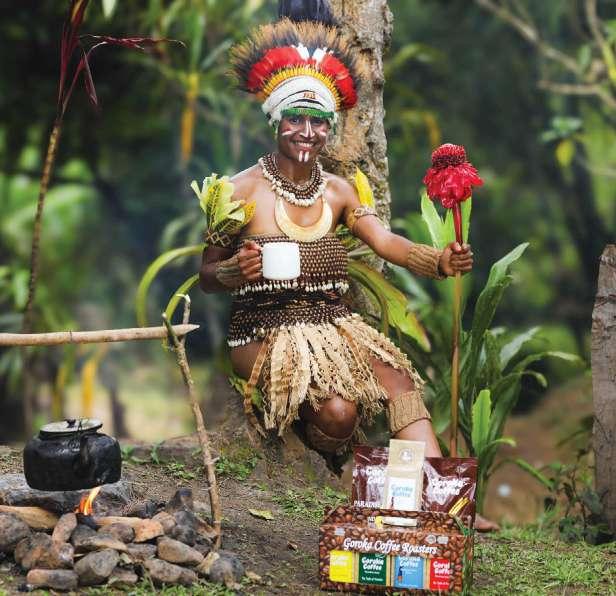
A grizzled tree kangaroo, one of the species found in the West Sepik.
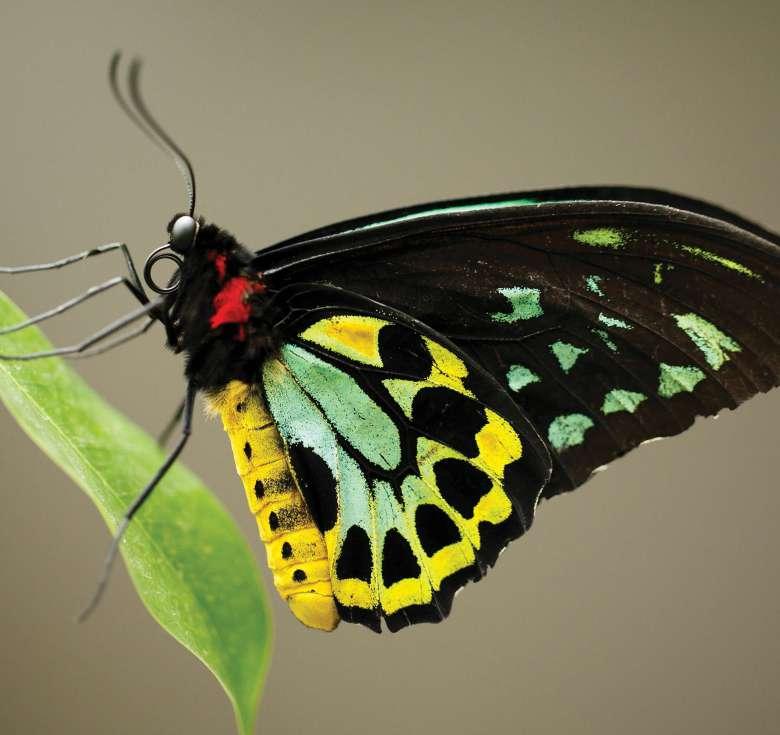
A WORLD OF
Visitors can get a close-up look at the famous birdwing butterfly at a farm near Tufi Resort in Oro Province. Louise Murray reports.
Self-taught naturalist Paul Sekara Guru Guru has had a lifetime interest in insects, watching their habits since he was a young boy. “All day (when he was a youngster) I would watch the


BUTTERFLIES
butterflies, seeing where they laid their eggs, on what plants, and what flowers they liked to feed on,” he says.
Clearing a piece of his land near Tufi Resort, he started by planting vines alongside small trees so the vines could scramble up the trees. It wasn’t long before he started finding large yellow eggs on the underside of the tree leaves.
The female butterfly does not lay her eggs directly on the vine as the vine exudes a chemical deterrent that encourages mould, which will overwhelm any eggs. But newly
hatched caterpillars migrate from the tree leaves on to the vines and start eating, a lot –growing to five centimetres long in 15 days. Guru’s six children are adept at finding the eggs, and the tiny caterpillars as they hatch. Fully grown, they are the size of a finger and almost as impressive as the Cape York birdwing that they will become. Orangetipped brown spikes adorn the back of each caterpillar, with two large white horn-like spines halfway along the back. These make the caterpillars look formidable to bird predators.
A green and black male birdwing (left); one of the fast-growing caterpillars (below); a brown and cream female birdwing (bottom).
Caterpillars form a chrysalis after 20 days of intensive feeding and adult butterflies emerge 32 days later. Males can tell which chrysalises are female and will wait nearby to mate with a newly emerged female once her wings open fully and she can fly.
Guru started a small butterfly farm in 2016 to show visitors the lifecycle of the large lepidopteran up close.
He brought out his visitors’ book to show me. Almost 1000 visitors have signed in from all around the world, as the farm is a popular attraction for small groups from cruise ships, and guests from Tufi Resort, a 20-minute drive away.
He keeps two adults, one of each sex, to show visitors. The more spectacularly coloured iridescent green and black male is decorated with yellow flashes along the margins of the wings, and the drabber but larger brown and cream female lives in a large, netted flight cage.

Smarter Communities Brighter Futures
The captive insects feed on the nectar of fresh hibiscus flowers collected daily.
The female has a wingspan of 20 centimetres, the smaller male 15 centimetres, impressive by any standards. These large insects cannot fly in the rain but must shelter under a leaf until the rain stops and their wings are dry.
“I get huge pleasure showing visitors our native wildlife, and the small fee that we charge visitors has been a great help with the children’s school fees,” says Guru.
In the wild, adult butterflies spend most of their time feeding high up in the forest canopy, so a visit to his farm offers a rare opportunity to see these magnificent butterflies up close, learn about their lifecycle and support a local community.
Visits to the butterfly farm can be arranged through Tufi Resort (tufiresort.com).

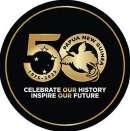
The ‘Wingman’ Paul Sekara Guru Guru.
Richard Andrews speaks with an American professor who has been studying PNG drums and, along the way, discovered some off-beat facts about singing dogs and bananas.
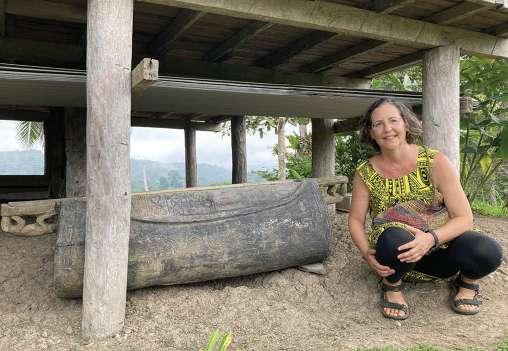
LESSONS IN JUNGLE DRUMS
What do drumbeats, ‘talking dogs’ and the future of the world’s bananas have in common?
The answer lies with Lise Dobrin, an anthropology and linguistics professor who has spent 25 years researching Arapesh culture in the mountains of East Sepik Province and has a strong connection with Wautogik villagers.
Dobrin partnered with the villagers last year to stage an exhibition at the University of Virginia, devoted to the traditional importance of drums in Papua New Guinea.
Aeons before the telegraph, wireless or cellphones, PNG villagers could communicate across long distances and multiple languages via garamut, or slit drums, crafted from large tree trunks.
“In Arapesh country, the drums are still part of daily life,” says Dobrin. “Traditional rhythms that summoned people for gatherings are now used to call kids to school. Using a type of Morse code, they can also send important messages such as ‘a man has died’.”
The Voices of Connection exhibition, at the University of Virginia’s Fralin Museum, included audio of a villager beating messages. Video-recorded comments were provided by Arapesh anthropologist Dr Andrew Moutu, former director of PNG’s National Museum and Art Gallery.
Dobrin met him when she first ventured to PNG as a doctoral student to study the Arapesh language, one of 850 spoken on the island of New Guinea.
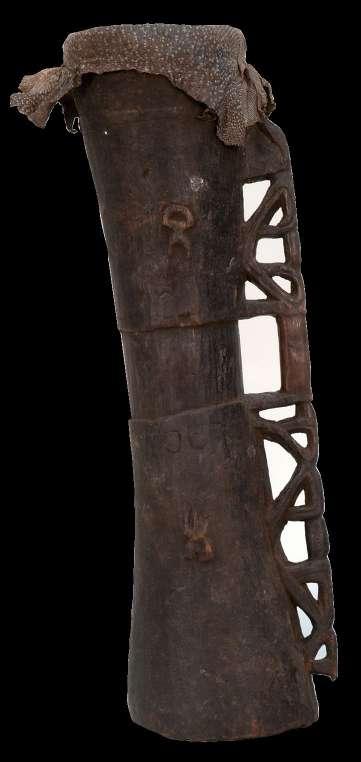
“I was originally interested in how Arapesh nouns were used grammatically,” she says. “This developed into a mission to help understand the language and culture.”
Dobrin developed a close relationship with the village and has returned several times. But she admits the visits were challenging at first.
“I was dysfunctional because I hadn’t grown up in that world. The villagers had to show me how to walk around, how to talk, how to wash in the river. They adopted me, largely I think, because they felt sorry for me.”
During this time Dobrin asked the older people to tell their stories for an Arapesh archive she established. The audio recordings range from folk tales to the history of Wautogik and recent events.
Memorable experiences are also recorded, such as a visit to a nearby town market one day when there was a solar eclipse.
In addition, Dobrin has found that stories about dogs are a recurring theme, which she’s examining more closely.
“Connection over distance is an important Melanesian value,” she says. “Whether it’s messages transmitted by drums, or the use of seagoing canoes for commuting between islands.
“I’m now looking at ancestral stories where dogs acted as ‘mediators’, connecting people who didn’t know each other, came from different villages, or were just wandering on their own in the forest.”
Professor Lise Dobrin with a slit drum (top); a kundu hand drum that was exhibited at the University of Virginia (above).
PICTURES:
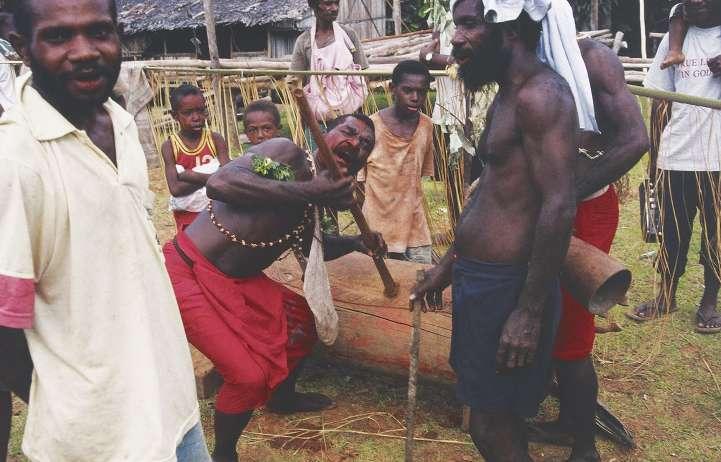
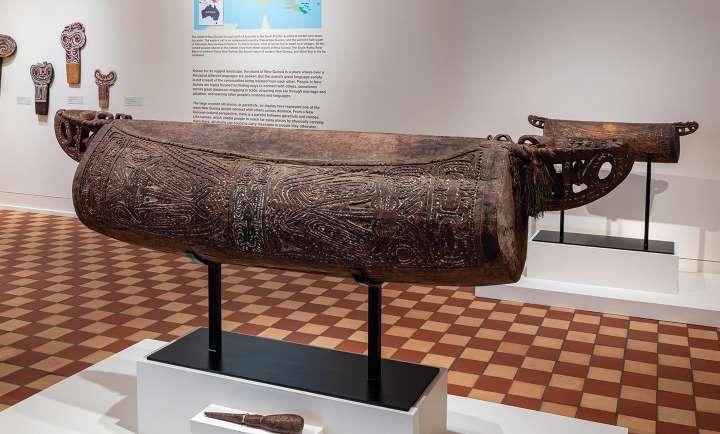

Drums are still part of daily life. Traditional rhythms that summoned people for gatherings are now used to call kids to school.
PNG’s highlands are already known as the home of the New Guinea singing dog –a rare ancient breed that doesn’t bark, but howls hauntingly and can even climb trees. However, Dobrin’s fieldwork takes the phenomenon of ‘singing’ one step further, with Arapesh accounts of ‘talking dogs’.
In one story, from the coastal village of Balam, a dog shows up, makes friends in the community and then leads them back to the village it came from.
“It’s all about reaching out and communicating with others,” she says. “And that takes us back to the garamut drums.”
Dobrin says that making a drum that ‘talks’ well is an elaborate process that first involves choosing the right size, age and type of tree. That requires traditional plant knowledge, which she’s also trying to document.
“Because I did most of my language work sitting in the village with elders, instead of walking around in the forest, I learned the names of plants that I had no clear definition for.”
In response, Dobrin teamed up with Virginia ethnobotanist Ryan Huish to study and preserve the traditional knowledge of diverse plants found in the region.
“Guided by people in Wautogik, we documented several hundred types of plants. Ryan was particularly interested in PNG’s huge variety of bananas.”
Some scientists believe bananas may have been the world’s first fruit, originating in Southeast Asia and New Guinea. Currently, the most popular variety, the Cavendish, is threatened by an aggressive fungus called Panama disease.
Huish has formed a project with PNG’s National Herbarium and other organisations concerned with genetic plant diversity, which may help safeguard the future of the world’s bananas.
“Who would have thought,” says Dobrin. “That a research trip to classify Arapesh nouns would lead to all this?”
Wautogik villagers with a traditional drum (left); a slit drum in the Fralin Museum at the University of Virginia (middle left); an offering of mushrooms for the professor at Wautogik village (below left).
UNTOLD STORIES FROM WORLD WAR 2
Richard Andrews speaks to a former patrol officer and author who has chronicled the hardships experienced by PNG villagers during the Japanese occupation.
When the War Came to Our Ples presents remarkable accounts of the bravery, compassion and resilience of Papua New Guinea’s people during the harrowing and confronting Japanese occupation in World War 2.
Author Kevin Deutrom, a former patrol officer and magistrate, spent years travelling the country by “foot, canoe and jeep” to record the stories of locals who had lived through the Japanese occupation.
“I was particularly concerned there was hardly any record of the suffering of the average village person during that traumatic period,” says Deutrom. “Further, there was little knowledge of the part played by these formidable fighters in the armed forces of Australia, Japan and even the Americans on the New Guinea side.”
Deutrom also researched the fate of nearly 10,000 British Indian Army prisoners of war (POWs) brought to the island by the Japanese, after the fall of Singapore in 1942. His book includes eyewitness accounts of atrocities, execution, and even cannibalism by starving Japanese soldiers.
“The Indian POWs were treated very harshly and only about 3000 survived the war. “They were forgotten men,” he says.
“With the help of village people, a group of us built a monument in 1989 at Awar village, using bricks made by Indians. It’s a memorial for POWs and locals killed in Japanese prison camp at Hansa Bay.”
Deutrom’s privately published book features about 50 translated interviews from the
Momase region. Commemorating this year’s 80th anniversary of VJ Day (Victory over Japan) on August 15, he’s given away hundreds of copies to the families of people interviewed and educational institutes.
“Three generations are now reading about what happened,” he says.
Deutrom credits Koi Iugum as one of the local leaders who helped the author arrange interviews. The Kranget Islander describes the “terrifying” bombing of Madang in 1942 and how the invading Japanese “just grabbed men who may have been in their gardens and forced them to work as carriers. Men had to leave their wives and children”.
Angmai Sum of Riwo village was grabbed as a 12-year-old to be a carrier. However, his youth and a pragmatic approach to capture helped him survive. The young boy learned to get along with his captors, talk with them and even sing their Japanese work songs when carrying a heavy load. (Deutrom was treated to a vocal performance when recording the interview.)
Sangai Grianmu of Babangaua village preferred an Australian Owen gun and traditional forces to deal with the Japanese in Madang.
After locating an enemy position during a patrol, he “mixed some lime powder and blew it towards the Japanese”. (According to Deutrom, the ritual is called winim kabang and is used to incapacitate opponents.)
Grianmu says it worked well.
They started to retreat the way they had come. I had been hiding waiting for them and as they approached my position, I ran up a hill and fired down at them ta-ta-ta-ta-ta. The Japanese soldiers were hit and falling over in every direction and I was teaching them a severe lesson.
The fearsome warrior, decorated three times, was also helped by spirits when he was captured later and tied up.



Author Kevin Deutrom in Adelaide (top); Deutrom with Koi Iugum in Madang in 1989 (above); Sangai Grianmu of Babangaua village (right); Otto and Penitane Kouingre in East Sepik Province (below).

My grave was already dug, and all our people had gathered and were praying, and the soldiers collected me and took me to the site.

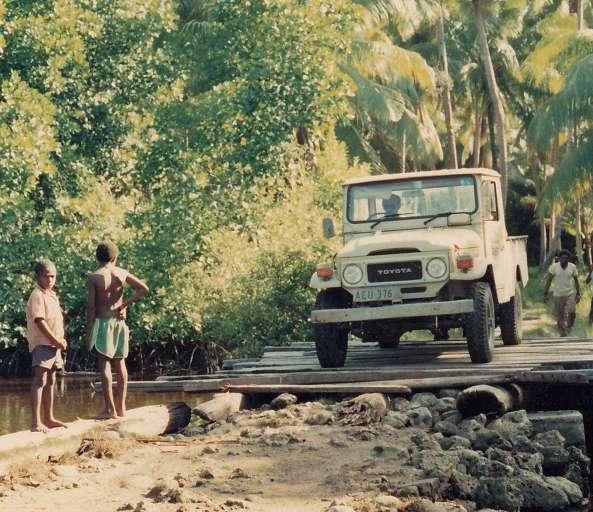
The author crossing the Ramu River to conduct interviews (top); driving to the Awar area for interviews in 1987 (above).
PICTURES: SUPPLIED BY KEVIN DEUTROM FROM HIS BOOK
Suddenly this black bird flew into my cage and started tat, tat, tat, tat working on the rope, loosening the ropes then flew off. (Some parts of Madang believe a willie wagtail is the spirit of a departed relative who brings good luck.) I found I could free the ropes around my hands and soon I was fully free. I then looked for my army pocketknife, which I had hidden in my clothes and pulling it out, slowly cut the bindings of the stockade timber before quickly running out and killing the guard
Other Japanese prisoners were less fortunate.
Bisang Pasum from Kosa Kosa village in Madang describes his first sighting of Indian POWs and their mistreatment.
“When we could, we sometimes disobeyed the Japanese instructions and helped them out. We sneaked green coconuts to them. If we gave them stuff and the Japanese caught us doing it, we would have been decapitated.”
Otto Kouingre worked as a bush guide in East Sepik Province for Australian troops “trying to find the Japanese, who sometimes hid in the bush and shot at them.”
His wife Penitane recalls fleeing to the bush with other villagers because “there was a lot of bombing and shooting”. When she returned home, “that’s when I saw the bodies of the poor Indians” lined up and executed.
Another East Sepik account comes from Henry Kaule of Kinbangwa village, whose grandfather found two escaped Indians hiding by a river and fed them.
“They made signs that they were hungry, had come from a long way, and had been mistreated.”
After the war Kaule returned to the area “where we had left our friends.”
“They did not survive,” he says, “but we all cried, especially as they had died a long way from their homes.”
“Of all the accounts, the story of Kaut Malok from Kauris village in Madang really affected me,” says Deutrom. “When I interviewed him, he was an old man, but still formidable with machete in hand.
“Kaut was a Paramount Luluai – one of several representatives appointed by the Australian Administration, with considerable influence in many villages surrounding Madang town.

“Kaut was arrested by the Japanese, and they were going to shoot him. In the book I’ve transcribed his account of what happened next.”
My grave was already dug, and all our people had gathered and were praying, and the soldiers collected me and took me to the site. While I was standing by the hole the Kempei in charge asked me ‘if I had any last words to say?’ I replied, ‘I do not have any last words as such, and if you want to kill me go ahead, but you should remember that my blood will be on your hands and when you die you will be judged on that.’ The Kempei stared at me when I said that and said, ‘you are a bad man, just leave.’ I then told the people, ‘let’s go home, they don’t want to kill me.’
“The Japanese must have seen the power in him,” says Deutrom.
The Sri Lankan-born Australian also has his own stories to tell. In 1972, he was among the last group of patrol officers sent to PNG. (He avoids the term kiap because of the term’s colonial origins.)
“Within our group we sometimes called ourselves ‘Whitlam’s Boys’ because he wanted independence for PNG and directed that the latest patrol officer recruits had to be anti-colonialist.”
Still green, just four months after arrival in Goroka, Deutrom was posted to the Kainantu sub-district in Eastern Highlands Province. A tribal conflict broke out during a routine patrol.
“Two men had already received arrow wounds,” says Deutrom. “I was terrified and didn’t know what to do.
“My government interpreter said, ‘you have to go to the centre of the fight between the two groups and assert your authority.’ With independence coming, there were signs such historical influence was waning. However, we went down the hill to the battleground. Arrows flying all around us. ‘I’m going to die here today,’ I thought.
“My interpreter was able to bring me the bows of two opposing fighters. He advised me to cut the strings, as a signal that the war was now over.
“It worked and boosted respect for my position. For the five years I remained in Kainantu, I was confident about my safety and never took armed police – even when dealing with sometimes dangerous situations.”
Now retired in Adelaide, Deutrom maintains his connections to the country and people he loves.
“Patrol officers used to joke that when they were bitten by a local mosquito, PNG stayed in their blood,” he says. When the War Came to Our Ples is available on kobo.com as an eBook.

For a print copy, contact kdeutrombooks@hotmail. com.
Angmai Sum of Riwo village was forced by Japanese soldiers to be a carrier.

BY ROBERT HAMILTON-JONES
SILVER LEAF, THE STANLEY HOTEL REVIEW
This is not the first time I have reviewed Silver Leaf, the fine dining restaurant on level 19 of the Stanley Hotel in Waigani. While I praised the food in late 2019, the thing that really grabbed my attention then was the ambience.
That had not changed on my recent visit, but the food has moved to the next level. In fact, I cannot recall having had a better meal in Port Moresby.
The menu is appealing and subtly inventive, without being intimidating or overwhelming.
The man responsible is the Stanley’s Executive Chef, Jerome Tremoulet, who hails from the culinary hotspot of Toulouse in France, and who had a long stint as Head Chef at the iconic Windsor Hotel in Melbourne, Australia. Despite his credentials, his goal is simply to make the most of excellent ingredients, including locally sourced seafood and vegetables: “In fact, we are aiming for homestyle dishes, nothing complicated”, he explains.

WHERE:
Level 19, The Stanley Hotel, Waigani, Port Moresby
PHONE:
+675 2077 888
ONLINE: thestanleypng.com/dining/silver-leaf
OPEN:
6pm to 10pm (Tuesday to Saturday)
STYLE: Fine dining
PRICE:
Mains from PGK90

With that in mind, I went for the smoked local reef fish for my main course, which came with a tomato and lemongrass infused coconut sauce. It was outstanding and unlike anything I had eaten before, with fresh flavours that combined well. My group also
I cannot recall having had a better meal in Port Moresby.
OUR FAVOURITE DISH: Smoked reef fish IN A PHRASE: Top of the tree.
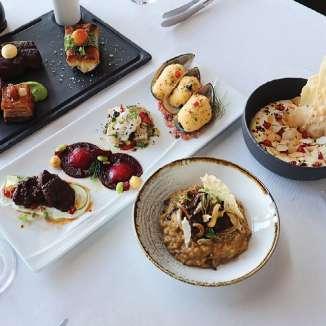
shunned the usual garlic fries in favour of the more exotic kau kau fries with grana padano (a hard Italian cheese) – a risk that paid off handsomely. The steamed vegetable side dish is also recommended for sharing.
Other main course options include Atlantic salmon, braised beef cheek and a wide selection of steaks, while vegetarians are well catered to with a beetroot, goat’s cheese and pine nut entree and a mushroom risotto.
The signature dishes are scallop and reef fish Ceviche (raw fish marinated in citrus juice) and a one-kilogram Australian wagyu beef tomahawk steak, ‘to share’ – thank goodness for that.
Also offering excellent service and a strong wine list, Silver Leaf is ideal for a celebration, corporate dinner or just because you feel like being spoilt.
A cook’s tour
Robert Hamilton-Jones tracks down some of the best dining in Fiji.
Thanks to its thriving tourism industry, Fiji has long had a good dining scene.
In fact, when I heard just before my recent visit that Flying Fish (an outpost of the famous Sydney restaurant, located at the Sheraton Fiji from 2008 to 2018) had closed I was worried the country’s options may have declined in recent times. My fears were unfounded – there has never been so much choice or quality.
In Suva, Eden Bistro & Bar, close to the Australian and US diplomatic missions, might just offer the best fine-dining option in town. Popular with the local business community, it has bright decor, and the food was so good I took the rare step of ordering dessert.
The charming Tiko’s Floating Restaurant has served excellent fish and seafood at surprisingly reasonable prices for 40 years. The vessel doesn’t leave its mooring but still rocks gently.
Meanwhile, Steamship Bar (grandpacifichotel.com.fj/restaurantsand-bars/steamship-bar) at the iconic, heritage Grand Pacific Hotel is the ideal place for a business meeting (inside) or a pre-dinner drink (on the terrace).
There has never been so much choice or quality.
If Suva is Fiji’s business hub, then the main tourist centre is on the west of the main island. Denarau Island is a destination resort, with several luxury properties surrounding an 18-hole golf course. If you want to indulge, you can’t do better than the Waitui Bar & Grill at the Sofitel and its classy beachside setting, for premium cuts of steak and seafood. If you are staying a while, you might feel like mixing things up at the Radisson Blu Resort. Its Italian (Basilico) and Lebanese (Byblos) restaurants certainly don’t cut any corners.
Over at Denarau Marina (the departure point for many island resorts) seek out the inconspicuous Nadina Restaurant for terrific traditional Fijian food (don’t miss the fresh Spanish mackerel in coconut cream), super-friendly service and, with any luck, live music. Finally, the Cellar & Barrel at the Sheraton Fiji (cellarandbarrelfiji. com) now provides a sophisticated, adults-only enclave to relax and enjoy more than 300 types of wine, whisky and other spirits. Sadly, it opened on the very day I departed. But never mind, it’s another reason to return.
Air Niugini flies from Port Moresby to Nadi weekly. See airniugini.com.pg.




Sofitel’s Waitui Bar & Grill (top two photos); Sheraton’s Cellar & Barrel (bottom two photos).
BY PAUL CHAI
Wine Guru
Q: How do I properly store my wine collection at home?
A: Well-stored wine can last decades and improve in quality and price. But most of us will not have the space, the budget or even the time to set up a fancy wine cellar with racks lining the walls.
Still, there are simple storage tips that you can use. The first is making sure your wine is stored horizontally if it has a cork (it keeps the cork damp, and the bottle sealed) and the second is keeping your wine away from direct sunlight (UV light ruins wine).
But it is temperature that plays the most important role in keeping your wine in good condition.
Wine must be stored at a consistent temperature of around 11–14 degrees Celsius. Over 20 degrees and your wine can permanently change in flavour.
using anywhere dark and cool in your home, like a basement. You can also try heavy wooden boxes, wine coolers or Styrofoam boxes to shield against the heat.
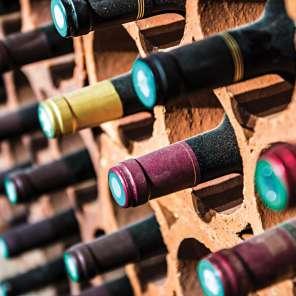
It is also important that wine not be shaken around by music, buzzing appliances or heavy footfall; this stirs up the sediment and affects the taste of the wine.
Speaking of sediment, if you keep wines for a while it can be a good idea to buy a decanter. Pouring your wine out of the bottle into a glass decanter is done to separate wine from sediment but also to allow more oxygen to react with the wine and enhance its flavour. Storing and decanting your wines may seem extravagant but once you learn a few basics it can be a simple and cost-effective way to keep wine because there is much less chance of it going bad.
This can be a challenge in warmer climates like in Papua New Guinea, but if you can’t afford a dedicated wine fridge think about
Do you have a wine question? Email us at paradise@ businessadvantageinternational.com.


















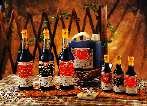

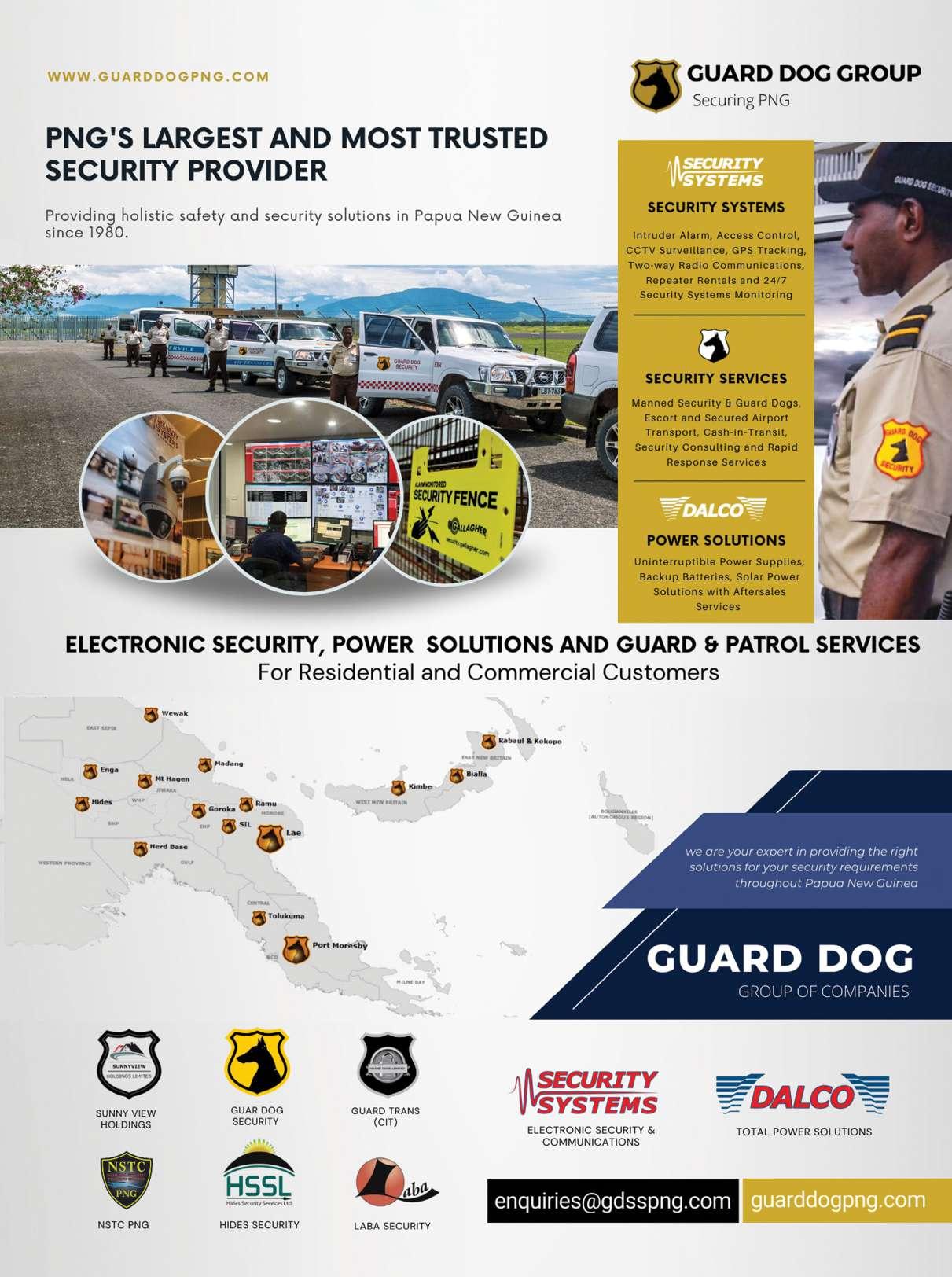
BY BRONWEN GORA
WELLNESS
To most people, staying fit means going for a daily walk, or taking up an activity from swimming to running to boxing. What is often ignored is building muscle via resistance training as well. But building strength – whether in the gym or with body weight moves at home – is vital for quality of life and especially ageing well, says exercise scientist
David Scott from Australia’s Deakin University.
Strength building will transform how you age, he says.
US-based functional medicine practitioner Gabrielle Lyon agrees. “It (muscle strength) has the biggest impact on our health and longevity as we age,” she says.
This is because loss of muscle mass, or sarcopenia, starts in our 30s and 40s and accelerates
after age 60. While this can’t be halted, experts say we can do plenty to stay strong.

Strength training should be done at least two days a week, about 30 minutes to an hour each time, Scott advises. Three sets of 12 repetitions of each exercise are a good start, either at a gym after being shown how to use the equipment by a professional, or simply at home doing body weight exercises like push-ups, squats and sit-to-stand exercises in a chair without using your arms.
And like any physical activity, multiple sessions are unnecessary to gain benefit; doing one weekly session or five to 10 minutes here and there is better than nothing. It is recommended to consult your doctor before starting a new fitness program.
Breathe easier with insurance for you in Papua New Guinea



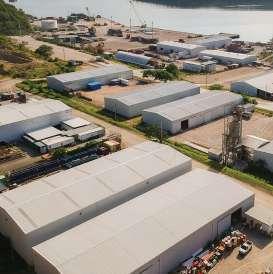




LIVING GADGETS
BY BRONWEN GORA
Cool camping
The Base Camp 4 tent is ideal for the tropics, mainly due to its full rain cover plus generous windows that provide much-needed ventilation in hot weather. Other thoughtful inclusions include 18 pockets conveniently placed around the tent and four mesh panels on the top that allow for some stargazing when the rain fly is not needed. PGK1942; rei.com


Sweet dreams
Made from luxurious satin and with extra-padded softness, Kitsch pillow eye masks rate high for comfort and style. The mask is also extra wide to block out light entirely, while the silky-smooth fabric and careful design ensure the mask sits gently around the head and ears and won’t leave marks on your skin. PGK75; mykitsch.au
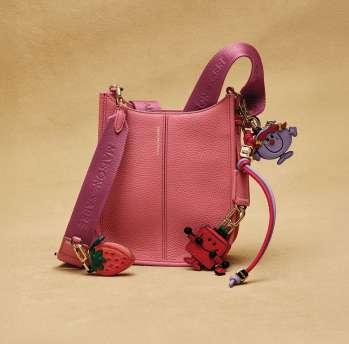
Stow away
Crafted from the world’s finest full-grain leather, the Maison de Sabre mini saddlebag is a plush carryall precisely measured for minimalistic phone, wallet, keys, ear pods and sunglass stowage. Convenient and compact, it’s a bestseller for the brand. Other cool features include expandable panels to ease the packing process, an ultra-soft construction for seamless carrying, secure on-body closure and a colour-matched jacquard strap. It has three individual D-rings for attaching charms, and it comes packaged in a 98 per cent recyclable gift box. PGK870; maisondesabre.com

Beautiful breeze
The durable, all-metal Vornado Silver Swan vintage fan will cool your room in a jiffy with its powerful breeze. Beautifully constructed and with an art deco aesthetic harking back to the earliest Vornado fans of the 1940s, this is one of the brand’s highest-quality models. It offers three speeds, head-tilt adjustment, sturdy diecast blades, built-in carry handle and a five-year warranty. PGK827.80; vornado.com
Functional packing
This multi-chambered toiletry bag from popular gear brand Cotopaxi helps solve the dilemma of trying to pack essential grooming items plus other must-haves. Cotopaxi’s Nido accessory bag features three roomy pockets purposely made in bright colours to ease the process of finding exactly what you’re looking for. Another zippered interior pocket keeps extra small items secure. Manufactured from recycled nylon and in a range of eye-catching hues so it doesn’t get lost in your suitcase. PGK160; amazon.com

See forever
Enhance your wilderness adventures with a pair of these top-quality binoculars. The Athlon Midas G2 8×42 UHD is billed as the rugged benchmark for all-weather brightness and clarity while being light and slim thanks to a magnesium chassis. Fitted with multi-coated optics and other advanced features, these binoculars gather maximum light to produce brilliant colour fidelity and deliver a clearer and sharper image. The XPL coating gives extra protection on the exterior lenses from dirt, oil and scratches. PGK793; amazon.com


Move freely
Quiksilver’s men’s Highline Pro boardshorts are touted as the lightest, driest and most flexible of their type in the water, making them perfect for surfing and other aqua sports. Crafted from Highlite Fuseflex four-way stretch fabric with a laser-cut hem and perforated details, they have drawcord closure and a zippered back pocket. Pictured are the Highline Pro straight 19” boardshorts. PGK343; quiksilver.com.au

Charge up
Charge your essentials – in fact three at once –with this convenient foldable stand that travels well. It delivers 15W of fast wireless charging to your iPhone 16/15/14/13/12, 5W to your Apple Watch and 5W to your AirPods. Leveraging Qi2 technology, which charges iPhones up to twice as fast, you can place your iPhone on the MagSafecompatible charging pad for a secure, magnetic connection. PGK586; belkin.com
Walk easy
Nisolo’s Huarache sandals for men and women are perfect for tropical, humid weather. Not only airy and handwoven from flexible, water-resistant leather, they’re also effortlessly chic. Designed for casual everyday wear, they offer slip-on comfort, come with a non-slip sole, and are a fashionable way to keep your feet comfortable and cool. PGK581; nisolo.com

Space saver
If there is anything a traveller loves, it’s a spacesaving device like the Mayim collapsible carabiner bottle. This eco-friendly drink container easily collapses when required, making it easy to pack and take anywhere. When in use there’s a handy carabiner so you can clip it to your backpack, bag or belt for portability. PGK82; mayimbottle.com

MEMOIR
Careless People
A Story of Where I Used to Work
By Sarah Wynn-Williams (Pan Macmillan)
Available as an audiobook
This is an explosive whistleblower account about the author’s seven years working for Mark Zuckerberg at Facebook.
When she started as the Director of Global Public Policy with the tech giant in 2011, Wynne-Williams felt “exciting and important to spread this tool around the world to improve people’s lives,” she now writes. But her idealism quickly soured, she says.
She alleges, among other things, that Zuckerberg, in his attempt to unlock Facebook in China, developed technology for the authoritarian regime to censor the content and access the data of potential users.
She further alleges that Facebook (now called Meta, which also owns WhatsApp and Instagram) facilitated hate speech by the military junta in Myanmar, which led to genocide against the Rohingya people.
In other allegations, the former New Zealand diplomat raises the spectre of sexual harassment and says she was given a negative performance review for being “unresponsive” to company emails while she was in hospital suffering from complications of childbirth.
Meta has denied the allegations. Explosive.
SURVIVAL
We Are the Stars
By Gina Chick (Simon & Schuster)
Available as an audiobook

SURFING
The Breitling Book of Surfing
By Ben Mondy (Rizzoli International, distributed by Hardie Grant)
There are some books that every surfer must have in their bookshelf. William Finnegan’s Barbarian Days comes to mind, as does Surf Is Where You Find It by Gerry Lopez.
One more to add to the library is The Breitling Book of Surfing, a coffee-table publication priced at a hefty PGK445.
The handsomely presented book comes from Rizzoli, a New York publisher known for high-end books. The Breitling in the title is the Swiss watch brand that launched its first SuperOcean dive watch in 1957 and has since sought to cultivate an affinity with divers, surfers and others who venture into the sea. The author, Ben Mondy, is a writer and broadcaster who grew up surfing in Newcastle, Australia.


The book is a journey into modern surf culture told through epic photography and interviews with surfers from around the world.
Gina Chick is one tough cookie. She’s the winner of the inaugural Alone Australia TV series, a reality show that pits contestants against each other in the wilderness, where they must survive alone as long as possible.
Chick outlasted everyone else, living in the Tasmanian wilderness for 67 days as she ate fried worms and danced around barefoot.
But her book is much more than a tale of bush survival. It is a story of how to live life with humour, resilience and gratitude in the face of the unimaginable pain she has suffered from being bullied as a child, to the death of her three-year-old daughter, the subsequent end of her marriage and being duped by a man she was in love with who pretended to be terminally ill.

Among those telling their unique stories are surfing stars like Kelly Slater and Sally Fitzgibbons, as well as lesser knowns like Brazilian Ciao Vaz, who takes on the big waves of Nazare, is a SUP world champion and – in his spare time – a TV soap actor.
BUSINESS & MOTIVATION
The Diary of a CEO
The 33 Laws of Business & Life
By Steven Bartlett (Penguin Random House)
Available as an audiobook
British entrepreneur Steven Bartlett is the host and creator of The Diary of a CEO, one of the world’s most-listened-to podcasts. His book, of the same title, reprises topics from the buzzy podcast that has included influential people and thinkers such as Richard Branson.
This is not a book about business strategy, but a set of principles (he calls them laws) that can be applied to any industry. Bartlett says the principles can be used “by anyone who is in search of building something great or becoming someone great.”
The 33 principles apply to business and, in some cases, life in general. Law 19, for example, states that you must sweat the small stuff. Focus on kaizen, a Japanese philosophy of continuous improvement.

Building for the future
Chris Daniells became the Managing Director of Steamships Trading Company last year. In this Q&A, he shares progress on multiple Port Moresby projects and explains why Steamships is bullish on Mount Hagen.
Q: How is the Portside Business Park development progressing in Port Moresby?
A: We bought what was essentially a barren piece of land (38 hectares). This would, under any scenario, take at least 12 months to get ready to be an industrial park. That is now substantially advanced. We’re excited about it.
There are some small operations in the business park at the moment. We’ve got PacTow (Steamships Logistics’ Pacific Towing Marine Services) operating from there. We’ve also got a container park and laydown area (for storing equipment) that we’ve been using.
The park will essentially open for business as a mixed-use logistics industrial estate by the end of this year.
We have had a lot of interest in the park, both in terms of logistics and for industrial, manufacturing and office use. There’s a lot of development going on out beyond Motukea, but we feel we are the best suited to bring an industrial park to fruition.
Over the next three years, we will have invested PGK500 million in getting the business park ready and open for business.
Q: Could you take us through the plans to become a special economic zone (SEZ)?
A: We’re in talks with the government on becoming an SEZ (a designated area with special business and trade laws to attract investment and promote economic growth).
Portside is in a prime position to become the first fully operational SEZ facility. Steamships’ collaborative discussions with the government have allowed us to gain a deep understanding of the SEZ framework, ensuring we align with the government’s vision and are actively supporting the

government’s commitment to fostering local manufacturing and downstream processing.
Q: What other major endeavours are you looking at this year?
A: Our property strategy for Port Moresby is really focused on the downtown precinct. Harbourside South, including the Marriott Executive Apartments, and links into Harbourside East and West. It’s a waterfront strategy.
In terms of commercial, we are fully tenanted, which we are very happy with. The Marriott Executive Apartments (opened last year) are slowly filling up. We knew that would take time, but again we think it’s a great product. It is the first Marriott-
branded offering in PNG, opening the doors and creating the opportunity for more global brands to consider PNG a country to invest in. We are focused on the regions as well. In Mount Hagen, we are opening a
Breaking ground at the Portside Business Park late last year are (from left) Motu Koita Assembly Chairman Dadi Toka, Deputy Prime Minister John Rosso, Steamships’ Managing Director Chris Daniells and Steamships’ General Manager Corporate Affairs Vele Rupa.


MRDC Celebrates 50 years of Nation Building
Mineral Resource Development Company has grown into Papua New Guinea’s leading company for managing benefits from natural resources.
We focus on fair sharing of wealth and longterm sustainability. We manage interests for landowners and provincial governments in the mining, oil, and gas sectors. Our goal is to make sure these investments continue to support communities even after resource projects end.
We are strongly committed to improving the lives of landowning communities. Our work brings vital services and infrastructure, leaving a lasting impact on many areas. This year, we celebrate 50 years of partnership and nation building.
We aim to ensure that no one is left behind, that resources are used wisely, and that each generation has a better future.
Looking ahead, we remain focused on building a legacy of fairness, growth, and strength for the next 50 years and beyond.


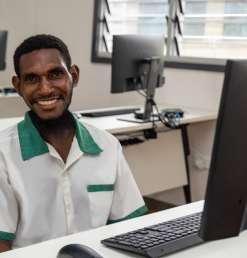
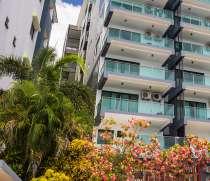


We’re seeing significant progress in Hagen, especially with the improved road access to the Highlands, leaving an opening for new opportunities in the region.
mixed-use retail–commercial development called Wonye Dobel, which is slightly out of town near the airport. We’ve already opened a branch for Bank South Pacific. We’ve got a Tininga supermarket there, and we’re getting a lot of interest from top-tier retailers.
We’re seeing significant progress in Hagen, especially with the improved road access to the Highlands, leaving an opening for new opportunities in the region. Through our Tininga joint venture, we’re contributing to the area’s transformation into a strong regional economic hub. With the growing population and increasing demand, there’s a clear need for infrastructure to support this expansion.
Q: What will be the major drivers of growth for Steamships in 2025 and beyond?
A: We have been the partner of choice for many local businesses and landowner entities, and have made substantial







investments in joint venture projects. We foresee this approach continuing to drive development, not just in the nation’s capital, but also in key regions like Lae and Mount Hagen, where we aim to create lasting community impacts.
Looking ahead, we plan for our growth strategy to focus on exploring sustainable business practices, partnering with the government to ensure that regional hubs grow alongside the capital, creating more job opportunities and improved infrastructure, (and) aligning with the goals of Vision 2050.
There’s significant liquidity available, particularly from superannuation funds, banks such as Westpac, ANZ and Kina Bank, as well as foreign institutions. We’re witnessing increased financing options and growing interest in funding and co-investing in projects that have a long-term positive effect on communities and possess green credentials. n





Radio company thrives on Pacific vibe
Nadav Shemer Shlezinger reports on the rise of media company Communications Fiji Limited, which includes PNG’s Yumi FM in its stable of radio stations.
In an age where traditional media models are being disrupted, Communications Fiji Limited (CFL) Chairman and co-founder William Parkinson believes his firm has the formula to not only survive but thrive in two very different Pacific markets.
Founded in 1985 with the establishment of Fiji’s first commercial radio station, FM96, CFL listed on the South Pacific Stock Exchange in 2001 and now holds a marketleading position in commercial radio in Fiji and Papua New Guinea.
Parkinson, who was born in New Zealand and raised in Fiji, says CFL’s success has been built on intimate local knowledge.
“Because we are from the Pacific, I think we understand our markets in intricate detail and have come up with a formula to target sectors of the community,” he says.

portfolio of five radio networks, including Viti FM, an itaukei-language station, Legend FM, targeting English-speaking audiences, and Hindi-language stations Radio Navtarang and Radio Sargam.
CFL has also applied its targeted approach in PNG, where it owns three radio stations covering English and Tok Pisin-speaking audiences.
“It’s a very different from an Australian or a Western model, which is largely agebased, because we have cultural, racial and language factors to take into account.”
This understanding has driven CFL’s growth from a single, youth targeted Englishlanguage radio station FM96 to a diversified
According to a Tebbutt Research survey conducted over a seven-day period in 2023, 74 per cent of Fijians listened to at least one CFL radio station or accessed its website, fijivillage.com.
CFL has also applied its targeted approach in PNG, where it owns three radio stations covering English and Tok Pisin-speaking audiences, as well as a news site, pnghausbung.com. Its Tok Pisin offering, Yumi FM, is PNG’s most popular radio station, reaching 64 per cent of listeners, according to Tebbutt Research.
The company also has a successful events management arm The Total Event Company (TEC) operating in both markets. “We built this around the need to create events for the stations.” These include the annual Fiji Showcase that has been running for over 30 years and attracts about 100,000 visitors.
TEC’s expertise stretches to building and managing trade events and providing sound and screens for live events like the Fijian Drua home matches.
CFL turned 40 in July and, while radio remains its core business, the company has embraced digital transformation.
Fijivillage.com, an online news portal originally created for the Fijian diaspora in 2000, is the country’s most-visited news website, according to Parkinson, who says this is mostly “driven by local consumption.”
At the same time, recognising that “we’ve got an audience that is digitally very wellconnected,” Parkinson says CFL has made a conscious effort to boost its presence on social media – with about two million engagements across Facebook and other platforms.
“We’ve had to totally change the way we look at talent. Our radio talents are not only radio personalities; they have to be social media influencers as well. They have to do all of those things to keep the brand strong and relevant,” Parkinson says.
Looking ahead, Parkinson foresees continued disruption to the media sector, particularly in Fiji, where data is cheap and there are high levels of internet connectivity.
“We can see the trends that are coming, so that gives us the chance to prepare in PNG with online products like PNG Hausbung, its news website, based on the lessons that we’ve learnt in Fiji,” Parkinson says. n
Relief in forex situation
Papua New Guinea’s major banks are seeing a dramatic fall in foreign exchange backlogs. What’s driving this improved forex availability? Nadav Shemer Shlezinger reports.
In welcome news for Papua New Guinea’s businesses, the country’s troublesome foreign exchange backlogs have recently fallen significantly.
As confirmed in the minutes of the Bank of Papua New Guinea’s March Monetary Policy Committee meeting, this year has seen a “gradual easing” in market conditions, and, in early May, the forex backlog was even “temporarily removed”, according to ANZ’s May Pacific FX Insight.


Patrick Wright, Treasurer at Westpac PNG, says that his bank has also seen its order book approach zero in the past month.
Empowering Papua New Guinea's Future
Discover
Reach out to create limitless opportunities for your organisation’s success in PNG.


“Given the significant reduction, we have seen on occasion essential orders being filled the same day they are received and

The monetary situation in PNG has eased.
Exporters are doing very well out of the price spikes and they’re converting their foreign currency into kina to pay their local suppliers, workers and contractors.
vetted under exchange control guidelines,” Wright says.
Rohan George, Group General Manager –Treasury & Markets at BSP Financial Group, says the time to forex order execution (in June) was “less than seven days”.
Outstanding forex market orders averaged PGK169 million in May and stood at PGK101 million in June, according to George – a significant drop from the average of PGK570 million between February and April.
However, he warns that “we have been in this situation before,” explaining that forex backlogs had fallen to similar levels on four other occasions since 2022 before bouncing back up.
The banks’ treasury experts give much of the credit for the reduced backlogs to a huge influx of foreign currency into PNG on the back of high prices and increased volumes for coffee, cocoa and gold.
Forex inflows totalled PGK5.4 billion in April and May and were forecast to be PGK8.2
billion in the June quarter, a fifth consecutive record quarter, according to BSP.
“Exporters are doing very well out of the price spikes we are seeing,” Kishti Sen, International Economist at ANZ, says, “and they’re converting their foreign currency into kina to pay their local suppliers, workers and contractors.”
Wright and George both agree that exports are making a difference, but they also note that businesses are currently spending less on imports and consequently need less forex to pay for them.
“Inflationary pressures on a depreciating kina, as well as a softer retail and wholesale sector, have seen reduced demand and supply for imported products, resulting in order books not being replenished to the same levels,” observes Wright. n

NASFUND’S INTELLIGENT MOVE
Major PNG superannuation fund Nasfund is pioneering the use of artificial intelligence with award-winning results. Nadav Shemer Shlezinger reports.
Papua New Guinea’s largest private superannuation fund, Nasfund, took home one of the top honours at the Innovation PNG Awards earlier this year, taking out the award for large business for its use of artificial intelligence (AI) to streamline its accounts payable process.
The award recognises Nasfund’s successful implementation of DeepDelve Invoice AI, which is already delivering productivity gains of 40 per cent, freeing up an average of three hours per day for each accounts payable staff member.
Talking about the award, Nasfund Chief Executive Officer Rajeev Sharma says the firm deliberately chose to introduce AI in an area “which was not a huge problem, but where we could see that it would bring some improvement”.
He says the fund’s accounts payable process was identified as the right fit for AI because it previously required a lot of manual effort, which caused slow turnaround times and presented the risk of error, fraud and compliance issues.
In its trial phase, Nasfund tested how well the AI could extract data from supplier invoices, including computerised, EFTPOS and handwritten formats. Invoices were deliberately physically crumpled to test the tool’s robustness. The system then deployed a three-way matching technology, comparing purchase orders,
The arrival of AI is a gamechanger.

supplier invoices and receipt notes to ensure data was consistent across all three.
If all the information matched, then “it would process the payment without any delay,” says Sharma.
But if there were any errors – for example, if the system detected a difference between the rates quoted in the purchase order and the supplier’s invoice – then the payment would go to internal auditors for manual processing.
By the end of the trial phase, DeepDelve was found to extract
data with 97 per cent accuracy, “meaning we had more time to concentrate on what wasn’t working well,” Sharma says.
“It (DeepDelve) makes things easier for us, and more transparent.”
These initial improvements brought about by AI are just the beginning for Nasfund, Sharma told the Innovation PNG Conference.
The next step, he says, will be the use of large language models to automate the entire payments process, resulting in a further 70 per cent reduction in invoice
processing time, from 10 days to three days.
Sharma says the arrival of AI is a “gamechanger”. He says Nasfund would look to implement it in other parts of its business.
“This is the start for us at Nasfund, because we just wanted to trial whether it works or doesn’t work. It definitely has worked, and the (potential) use cases in AI are immense.” n
The Innovation PNG Awards are run by Business Advantage International, the publisher of this magazine.
Nasfund’s CEO Rajeev Sharma speaking at the Innovation PNG Awards earlier this year.
Water solution for villages
The winner of this year’s Innovation PNG award for small business is an ingenious all-in-one water, sanitation and washing station designed for use by PNG’s village communities.

Charlotte Armstrong reports. The
The Environmental Health Development Agency (EHDA) is the winner in the small business category of this year’s Innovation PNG Awards.
Lae-based EHDA won the award for its Water SHE Technology, an all-in-one water, sanitation and washing station. EHDA Director, Boas Sengi, says the facilities have already made a major impact in the villages where they have been installed. For example, he says that 12,544 people, including children and people living with disabilities, benefited from the technology as the result of a contract with Australia’s Department of Foreign Affairs and Trade, which ran between 2019 and 2022.
The Water SHE Technology (which stands for ‘Water, Sanitation, and Hygiene Empowered Technology’) provides a single source for a village’s water needs, including for drinking water, kitchen taps, laundry work, bathing and toilets.
It involves the building of a WaSH (water, sanitation and hygiene) facility in central points
in villages to reduce workload for village women who previously have had to travel long distances to acquire clean water.
The WaSH facility has a roof to keep users out of the harsh sunlight and contains solarpowered lights.
The facility also allows for water storage and purification, improving health outcomes. Beyond hygiene and hydration, Sengi says the WaSH facility acts as a meeting place.
In making the award to EHDA, the Innovation PNG judging panel, chaired by futurist and inventor Mark Pesce, highlighted the potential of the project: “The judges were impressed by the unit’s design and its successful trials, which have already delivered the safe and hygienic facility to thousands of villagers. The judges share the view of the inventor, Boas Sengi, that it has the potential to be rolled out to villages across the country.”
The judges also made three special commendations for this year’s small business award: Port Moresby’s Bobatom Tech and Consultancy for its
e-learning platform, Mount Hagen’s Gotronical Engineering for its design of a sago extraction machine and Lae’s
Project Support Services for its range of solar-powered mills for smallholder farmers. n
Liquidators, Business & Tax Advisers
Established for 20 years
■ External & Internal Audits of Companies, Associations and Trusts
■ Relief Accounting, System Reviews, Procedures Manuals, MYOB Training and General Accounting Support
■ Start Ups, New Companies, Joint Ventures, Foreign Company Approvals, Registered for Online Lodgments
■ Tax Planning, including Foreign Contracts, International Agreements & Exit Strategies
PROVIDING SPECIALIZED SERVICES TO: Mining Subcontractors, Agriculture, Construction, Manufacturing Sectors & NGO’s
John Clarke
Tel 472 7910 Head Office
Fax 472 7908 Lae Mobile 70428092
Email jc@kapiandclarke.com.pg
FCAUK, FCPAPNG (Principal) 30 years in PNG For a professional, competitive and timely service contact:
all-in-one water station by Water SHE Technology.
Auditors,
SIX KEY PLANKS FOR SUCCESS
The Chief Executive Officer and Managing Director of PNG’s Kina Bank, Ivan Vidovich, delivered these tips for digital innovation at the 2025 Innovation PNG Conference in Port Moresby earlier this year.
1. Identify the problem you’re solving
The most important question about digital innovation always comes back to the ‘why’. It’s a key question to keep asking yourself: ‘Why am I embarking on a strategy, or why am I doing this project? What does it mean for my customers? What return on investment will be delivered?’ It leads you to the obvious question: ‘What is the problem I’m actually solving?’
2. Consider the strategic risks
As a bank, strategic risks can relate to







of Digital Transformation through PNG DataCo








DataCo owns, operates and maintains over 12,000km of Fiber Optic Cables (Submarine and Terrestrial).
Fibre Presence in 21 Provinces.
70% District Connectivity Nationwide. All Marine Provinces Connected.
Two (2) Data Centers in PNG located in Port Moresby and Madang being the disaster recovery data center.


of competition. If you try to see more deeply, understand and interrogate your motivations, you can identify for yourself things that can mitigate fundamental strategic risks for your organisation. Then, you ask yourself, ‘How can we do business with strategic risk, rather than build a wall and insulate ourselves?’
3. Involve the whole organisation
Not all the answers lie with a board, the CEO or the management team. You’re only one person. You really need to look at the different parts of your organisation and try to get the whole organisation understanding and participating. It’s amazing what can be achieved when you start to harness collective intelligence.
4. Know your limits
Kina Bank from time to time has suffered from what I call ‘the eyes are bigger than your stomach’ risk, where just because you have a good idea and just because you
think your customers are going to use it, it doesn’t mean you can implement it. I call it the two Cs: capability and capacity. We ask the question, ‘Do we build this ourselves or do we find a partner who’s already done it?’ It’s a critical strategic decision, because at first you think you want to own and control everything. That’s not necessarily a pathway to success.
5. Have a growth mindset
If you’re going to change an organisation – if it’s going to make a difference to the environment that you’re working in, to the people of the country that you operate in – you first need to be able to change yourself: people who have self-transformative practices are more likely to be successful in transforming an organisation. Looking ahead, I don’t think AI in Kina Bank or in the context of Papua New Guinea should be about taking out jobs but about improving customer service and reducing risk. It might change
people’s jobs, and you might have to, as an organisation, think about retraining people for the future. And that’s exciting if you’ve got a growth mindset.
6. Experiment, learn and be prepared for failure
Success can be that you’ve learned what you set out to learn. In the case of a couple of our tech platforms that don’t have massive scale but have interesting customer feedback, we’re learning something about the next iteration, or the next product.
WhatsApp banking for Kina Bank has been a good example of not doing something because you think it’s going to go gangbusters but doing something because you’re going to learn. A relatively small number of our customers use it in its current form. And that’s ok, because we’re learning about the future of interactions through products and services like that. n

Planting a Greener Future:
How the EU-FCCB
Programme
is Cultivating
Sustainability
in Papua New Guinea
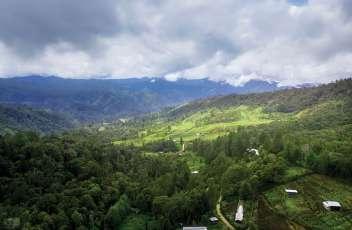


Sowing Seeds for a Sustainable Tomorrow
BY HEANG THY
Papua New Guinea (PNG) is home to one of the last great tropical rainforests—a vital ecological haven and a source of life for communities who have lived in harmony with their environment for generations. But with climate change accelerating, the challenge is clear: protect this natural heritage while enabling inclusive, sustainable growth.
The European Union-funded Forestry–Climate Change–Biodiversity (EU-FCCB) Programme is helping PNG meet this challenge head-on. In collaboration with Expertise France, CIFOR-ICRAF, and the FAO, the Programme works to strengthen environmental governance, build a climateresilient economy, and empower local communities.
The Programme’s national component, led by Expertise France, has formalised partnerships with six key PNG government agencies: CCDA, CEPA, DAL, DLPP, NEA, and PNGFA, to drive reforms in forestry, land use, energy, agriculture, biodiversity, and digitalisation. These efforts aim to support PNG’s green transition, climate finance, and sustainable economic growth. Key initiatives include:
• Supporting CCDA’s national climate governance and carbon market framework
• Helping CEPA strengthen the Protected Areas Forum
• Aiding PNGFA in transitioning away from round log exports
• Working with the Autonomous Bougainville Government on a Blue-Green Economy Policy
Accurate land-use data is also key. FAO and PNGFA recently led a national forest and land-use assessment (2000–2022), now guiding PNG’s reporting to the UNFCCC and informing future inventory workin East Sepik and Sandaun.
In Oro Province’s Managalas Conservation Area, CIFOR-ICRAF has co-developed PNG’s first locally led Conservation Area Management Plan. It empowers clan leaders and communities to combine traditional knowledge with modern strategies—protecting biodiversity while creating sustainable livelihoods.
Education and inclusion remain at the Programme’s core.
In 2024, 21 EU-FCCB master’s scholarships were awarded to PNG graduates, and civil society support is growing through the PNG Environmental Alliance. Young people and women are central to every initiative, ensuring the green transition is inclusive and community-led.
The EU-FCCB Programme turns knowledge into action, enabling landowners and government to advance sustainable forestry, conservation, and resilience in PNG.
— Mr. Mirzohaydar Isoev, Technical Coordinator and Deputy Project Manager of the EU-FCCB Programme’s national component.
A message from the European Union to Papua New Guinea
As the European Union’s Ambassador to Papua New Guinea, it has been a true privilege to spend the past three years in this fascinating country. To those arriving, I wish you a safe, colourful and enriching journey. To those departing, I am sure we share a deep sense of privilege in having had the opportunity to experience Papua New Guinea’s remarkable and unique cultural heritage and breathtaking natural beauty.
This year, Papua New Guinea stands at a crucial moment as it celebrates its 50th anniversary: a time to reflect on the past, celebrate the present, and prepare for the future.
The European Union has stood alongside Papua New Guinea since its independence, with the establishment of


diplomatic relations in 1977. We have since then built a strong and dynamic relationship, rooted in mutual respect and strengthened through political dialogue, as well as economic and trade, and development and cooperation projects across key sectors.
As Papua New Guinea enters this new chapter, the EU remains committed to walking this path together, supporting the country’s sustainable growth, resilience, and prosperity.
On behalf of the European Union, I would like to extend my heartfelt congratulations to the Government and people of Papua New Guinea on this Golden Jubilee. May the years ahead bring continued success, unity, and opportunity for all.
On behalf of the European Union, I would like to extend my heartfelt congratulations to the Government and people of Papua New Guinea on this Golden Jubilee. May the years ahead bring continued success, unity, and opportunity for all.
— Ambassador Jacques Fradin
As Paradise Magazine celebrates 50 years of PNG independence in storytelling, the EU-FCCB Programme honours the everyday champions, decision-makers, policymakers, students, community leaders, women, youth, and all stakeholders. The future of PNG and the planet depends on the seeds we plant today. Through collaboration, vision, and continuous action, we can ensure that these seeds grow into a legacy of resilience and prosperity.
H.E. JACQUES FRADIN, AMBASSADOR OF THE EUROPEAN UNION TO PAPUA NEW GUINEA
BRAIN GYM
QUIZ, PUZZLES, CROSSWORD
DoubleTake
Tackle either set of these clues – you can even mix and match them, because the solutions are the same for both sets.
Wordsearch
Find all the words listed hidden in the grid of letters. They can be found in straight lines up, down, forwards, backwards or even diagonally.
CRYPTIC CLUES
ACROSS
1. Move Transvaal heifer outside (8)
6. Not even bland? That’s not good! (3)
7. Tear around inside then act like a bully (8)
8. Shadows lost? Show commercials! (3)
10. Basic components of weather forces (8)
13. Scheme to rip off top of steeple (8)
16. Study in Sweden and Denmark (3)
18. Flees refuges (8)
19. It’s a joke, either way (3)
20. Martin’s adopting a couple of aliens (8)
DOWN
1. Ted stuck around there, tied to post (8)
2. Goes along with production of Grease (6)
3. Wish a memoir could conceal humiliation (5)
4. Part of the rectangle that’s vertical (5)
5. Sudden invasion offers first real support (4)
9. Emphasises that I’m ignored by mistresses (8)
11. Sister in conundrum (3)
12. Sick ardour heard on summer evenings (6)
14. Hope radio has some musical drama (5)
15. Swagger like Rod (5)
17. One rascal took part for ages (4)
STRAIGHT CLUES
ACROSS
1. Job reassignment (8)
6. Feud, ... blood (3)
7. Menace (8)
8. TV promotions (3)
10. Heating coils (8)
13. Plot secretly (8)
16. Lion’s lair (3)
18. Backs off (8)
19. Prevent from speaking (3)
20. Creatures from Red Planet (8)
DOWN
1. Hitched (8)
2. Concurs (6)
3. Loss of face (5)
4. Construct (5)
5. Military foray (4)
9. Accentuates (8)
11. Convent dweller (3)
12. Noisy insect (6)
14. Phantom of the ... (5)
15. Bracing bar (5)
17. Historical periods (4)
Sudoku 1
Sudoku 2
For crossword and puzzle solutions, see page 164.
Wheel Words
Create as many words of 4 letters or more using the given letters once only but always including the middle letter. Do not use proper names or plurals. See if you can find the 9-letter word using up all letters.

The Paradise Superquiz
HOW WELL DO YOU KNOW PNG? 50 QUESTIONS FOR 50 YEARS OF INDEPENDENCE
1 When was the Sir Hubert Murray stadium opened in Port Moresby? (a) 1932 (b) 1969 (c) 1984
2 Who was Sir Hubert Murray? (a) a PNG Olympic sprinter (b) a retail entrepreneur (c) a lieutenant governor
3 Who was PNG’s first prime minister? (a) Sir Julius Chan (b) Sir Michael Somare (c) Gough Whitlam
4 Which currency did the kina replace in 1975? (a) Australian dollar (b) British pound (c) German deutschmark
5 What was the name of the student who designed the PNG flag in a national competition? (a) Samantha Karike (b) Susan Karike (c) Serah Karike
6 What’s at the corner of Bumbu Road and the Highlands Highway? (a) Lae Showgrounds (b) Mount Hagen market (c) Port Moresby hospital
7 What is the name of the PNG team that competes in the Queensland Rugby League? (a) Kumuls (b) Hunters (c) Lewas
8 How many provinces are there in PNG? (a) 24 (b) 22 (c) 26
9 In which year did PNG host APEC? (a) 2018 (b) 2019 (c) 2020
10 Which animal appears on PNG’s 1 kina coin? (a) bird of paradise (b) tree kangaroo (c) crocodile
11 When did Air Niugini start flying as the national airline? (a) 1975 (b) 1973 (c) 1965
12 What was the destination of Air Niugini’s first flight? (a) Lae (b) Rabaul (c) Cairns
13 How many species are there of the bird of paradise? (a) 45 (b) 52 (c) 18
14 What is the elevation of Mount Wilhelm (PNG’s highest mountain)?
(a) 9045 metres (b) 4905 metres (c) 4509 metres
15 Can you name PNG’s second-highest mountain? (a) Mount Giluwe (b) Mount Suckling (c) Mount Hagen
16 Which queen is associated with a PNG chocolate brand? (a) Queen Emma (b) Queen Emily (c) Queen Elizabeth II
17 Which is further south?
(a) Alotau (b) Kimbe (c) Samarai
18 Who are the Barramundis?
(a) Port Moresby’s biggest fishing club (b) PNG’s national men’s cricket team (c) PNG’s national women’s swimming squad
19 Where was pioneering aviatrix Amelia Earhart last seen when she took off on her ill-fated flight in 1937?
(a) Port Moresby (b) Lae (c) Alotau
20 In which year of World War 2 did Japan invade PNG?
(a) 1940 (b) 1941 (c) 1942
21 Who majority owns PNG’s longest-established newspaper The Post Courier ?
(a) Rupert Murdoch’s News Corp (b) the PNG government (c) Thomson Reuters
22 What is the Tok Pisin word for ‘friend’? (a) palpal (b) pren (c) birua
23 Who officially opened PNG’s national parliament building in Port Moresby in 1984?
(a) Sir Michael Somare (b) Prince Charles (c) Gough Whitlam
24 What do the five stars on the PNG flag represent? (a) the Southern Cross constellation (b) the Orion constellation (c) a high-five gesture
25 Where and when did PNG first compete in the Olympic Games? (a) Melbourne, 1956 (b) Mexico City, 1968 (c) Montreal, 1976
26 Which countries have colonised PNG?
(a) Australia, Japan, Britain (b) Australia, Japan, Germany (c) Australia, Germany, Britain
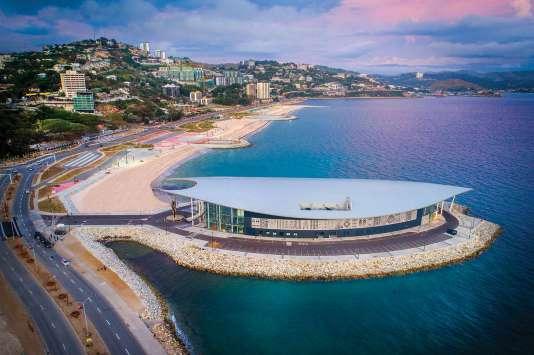
APEC Haus at Ela Beach. Can you name the year PNG hosted APEC? See question 9.
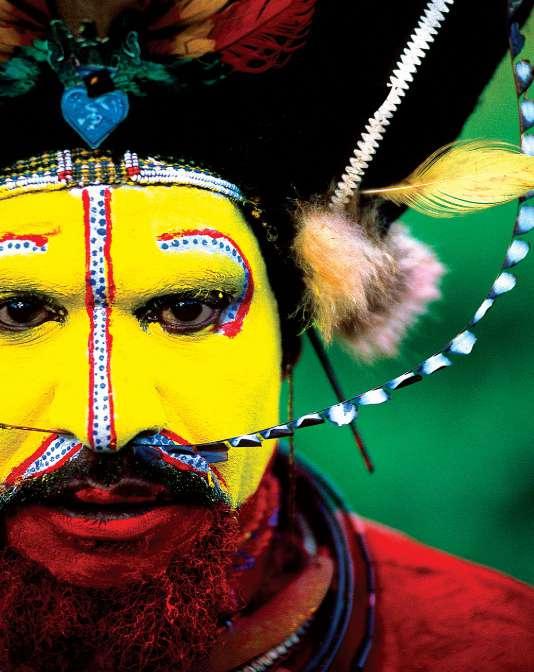
27 What is the name of the world’s largest butterfly, which resides in PNG? (a) Queen Alexandra’s birdwing (b) goliath birdwing (c) Wallace’s golden birdwing
28 What is the national anthem of PNG? (a) God Save the King (b) Oh PNG, Land of Beauty (c) O Arise, All You Sons
29 What was the name of the Royal PNG Constabulary bandmaster who composed PNG’s national anthem? (a) Dylan Thomas (b) Thomas Jefferson (c) Thomas Shacklady
30 What is mined at Ok Tedi? (a) diamonds and cobalt (b) gold and silver (c) gold and copper
31 The town of Kiunga is on which river? (a) Sepik (b) Strickland (c) Fly
32 How many toea equal one kina? (a) 10 (b) 100 (c) 1000
35 What is the stock exchange code for PNG? (a) PNGSE (b) PNGXXX (c) PNGX
36 What was banned in Port Moresby from 2014 to 2017? (a) chewing gum (b) betel nut (c) plastic bags
37 What is the blood alcohol limit for drivers in PNG? (a) 0.00 (b) 0.05 (c) 0.08
38 Who is John Ribat? (a) PNG’s only cardinal (b) PNG’s ambassador to China (c) a National Court judge
39 How long is the Kokoda trail? (a) 92km (b) 96km (c) 194km
40 What did Ryan Pini do in 2006?
(a) won bronze in the freestyle at the Commonwealth Games (b) won gold in the butterfly at the Commonwealth Games (c) won silver in the backstroke at the Commonwealth Games
41 Why will sports fans be rejoicing in PNG in 2028?
(a) a PNG team will start playing in the NRL (b) PNG will host the Commonwealth Games (c) a round of the LIV Golf League will be played in Port Moresby
42 Who opened the Pacific Games in Port Moresby in 2015?
(a) Prince Charles (b) Prince Harry (c) Prince Andrew
43 Who is Dika Toua?
(a) a PNG swimmer (b) a PNG tennis player (c) a PNG weightlifter
44 What is a PMV?
(a) a bus (b) a vegetable (c) a prime mover
45 What is the country telephone code for PNG?
(a) +61 (b) +675 (c) +611
46 What did Mick Leahy do?
(a) designed the first PNG stamps (b) was a 1930s explorer and gold miner in PNG (c) was the first to canoe the Sepik River solo
47 At independence, who said “Let us unite with Almighty God’s guidance and help in working together for the future as a strong and free country”?
(a) Pope Paul VI (b) Michael Somare (c) Prince Charles
48 By population, what is PNG’s third-largest city?
(a) Madang (b) Mount Hagen (c) Kokopo
49 Where is Lido Beach?
(a) Port Moresby (b) Kavieng (c) Vanimo
50 Can you name the pictured tribesman?
(a) Asaro Mudman (b) Huli Wigman (c) Chimbu tribesman Can you name this PNG tribesman? See question 50.
33 What is the closest distance between PNG and Australia? (a) 3.75km (b) 37.5km (c) 375km
34 What generated PGK400 million in spending in PNG in 2023? (a) sales of Coca Cola (b) tourists (c) the Morobe Show
Answers next page
Wheel Words
Solution: Filo, Flit, Foil, Frit, Lift, Loti, Oily, Rift, Riot, Roil, Toil, Trio, Viol, Fitly, Flirt, Ivory, Roily, Torii, Flirty, Frivol, Vilify, Vitrify, Vitriol.
9-letter word: FRIVOLITY DoubleTake Sudoku
The Paradise Superquiz





PAPUA NEW GUINEA VISITOR GUIDE
Out and about
A quick guide to Papua New Guinea, from catching a taxi to making a phone call.

PICTURE: DAVID KIRKLAND
Port Moresby from the air … the capital city has a population of almost 365,000 people.
ARRIVALS LOUNGE
CLIMATE
Except for the Highlands, Papua New Guinea has a warm tropical climate. The wet season in Port Moresby is from December to April.
COMMUNICATIONS
Internet: Web access in Port Moresby has improved immensely in recent years. Complimentary Wi-Fi is available at hotels and at Jacksons International Airport.
Phone: International phone roaming is possible in PNG, but it can be costly. A cheaper option is to buy a local SIM card and prepaid credit (including data packs for smartphones). Major mobile networks are Digicel, Telikom PNG and Vodafone. Mobile data is available in cities and towns but may not be available in rural areas.
ELECTRICITY
The current in PNG is 240V AC 50Hz, using Australian-style plugs.
GETTING AROUND
Airport transfers: For arrival/ departure in Port Moresby, hotels provide a complimentary transfer.
Car hire: Major companies include Hertz Car Rental (+675 325 4999/+675 7235 2442) with a self-drive rate of PGK270–485 a day. With a driver it is PGK612–868. Avis Car Rental (+675 324 9400) day rate is PGK315–435 with a PGK4600 bond. With a driver it’s an additional PGK15 per hour. WB Transport Systems (+675 341 3541) day rate is PGK300–1500. With the poor state of roads, especially in Lae, 4WDs/SUVs are recommended.
Domestic flights: Travelling within PNG often means taking an internal flight (for instance,

you cannot drive between Port Moresby and Lae). Air Niugini offers passengers the chance to book (and, for some flights, also to check-in) online, but make sure you print out a copy of your receipt to show at check-in. Aircraft and helicopter charters are available for travel to remote locations.
Security firms: They can provide airport transfers if you are not staying at a hotel or if you require transport at night for evening social events. Available 24 hours, quotes are given when you inquire. Recommended firms in Port Moresby are Corps Security (+675 7166 8305), G4S (+675 7999 1700) and Black Swan International (+675 7500 0200). In Lae, recommended security firms are Guard Dog Security (+675 7202 1069) and G4S (+675 472 3999).
Taxis: Recommended firms are City Loop (+675 7715 9338) and Comfort (+675 7615 5663); Expedient Limited (+675 7232 9990) provides shuttle services. ODESH (+675 7981 8832/+675
7408 6270) is Port Moresby’s first taxi and chauffeur on-demand booking service. See odesh.net or download the app.
HEALTH
Serious medical conditions can be treated in Port Moresby at the Pacific International Hospital, Paradise Private Hospital and Port Moresby General Hospital, which have emergency services. Some conditions may require treatment outside the country. Travellers should ensure they have adequate health cover. The cost of medical evacuation can be high. Visitors should also note that malaria is prevalent in PNG and there have been cases of measles and tuberculosis.
MEDICAL EMERGENCY
For St John Ambulance phone 111 or 7111 1234. St John provides a 24-hour ambulance service in Port Moresby.
MONEY
PNG’s currency is the kina (PGK). Banks and ATMs are located
around Port Moresby, Lae and almost all urban centres.
MARKETS
Banana Market: Located within the secure Adventure Park premises at 14 Mile, 30 minutes outside the city. Despite its name, you can find a wide range of fresh fruit and vegetables sourced from the gardens of surrounding communities. Open 7am–5.30pm.
Boroko Market: Next to Santos Stadium, this popular market has a great range of local produce. There is limited parking but there is a general understanding to park along the side street with caution. Open 7.30am–5pm.
Ela Beach Craft Market: At the IEA TAFE campus opposite the beach. Held on the last Saturday of each month. Support artisans from nearby Motuan villages and small businesses that sell paintings, bilums, as well as woven baskets, mats and tapa (tree bark) cloth sourced from rural parts of the country. Organised by the Ela Murray International School. Tel. +675 302 3800. Open 7.30am–midday.
Gordons Market: Next to the Gordons police station, it’s the biggest market in Port Moresby with two levels. Well-organised, you can find everything from various greens, root crops and seasonal fruit. There is ample parking and security. Open 7am–6.30pm.
Holiday Inn Craft Market: Held on the third Saturday of each month in Cassowary Park. Paintings, wooden carvings and pandanus mats are just a few of the items on sale. Proceeds from the vendor fees (PGK20) and the craft market’s sausage sizzle go to charity. Open ➤
A market vendor selling locally made goods at Port Moresby
ARRIVALS LOUNGE
8am–1pm. See facebook.com/ holidayinnandsuitesportmoresby.
Koki Fish Market: Built over the sea, this fish market is the biggest one-stop shop for seafood. Fish like tuna and red emperor caught by local villagers can be cleaned and cut for you. Open 6am–6pm.
Moresby Arts Theatre Craft Market: Located at Waigani (next to Parliament House) find local art, carvings, pottery and jewellery. Enjoy the barbecue, live music and movies for kids. Some craft days have cultural dances and performance art shows. Held on the first Saturday of each month. Entry PGK2. Open 8am–1pm.
PAU Sunday Market: Pacific Adventist University, 30 minutes outside the city, has a market every Sunday, starting at 5am. There’s produce from the school’s farm, including cucumber, watermelon and corn, as well as cooked food from the Pacific.
POM City Markets: If you’re after traditional crafts as well as a whole range of novelty products from small business owners, they regularly set up at the Vision City amphitheatre, National Museum & Art Gallery and Food Republic PNG carpark. They also host the Harbourside Night Markets at

the Harbourside Precinct, which includes live music and food. See facebook.com/pomcitymarkets for upcoming dates. Tel. +675 7007 3046.
Some of these locations (as well as all food markets in general) are known for crime so it isn’t recommended that you go alone, or without your own security.
SHOPPING
BNBM Home Centre: Located at Gordons, sells everything from building materials to homeware and tech items. See facebook. com/BNBMPNG.
Brian Bell Home Centre: Sells a wide range of white and brown goods as well as sportswear and
manchester. There are outlets at Boroko and Gordons with a smaller shop at Vision City. See facebook. com/brianbellgroup.
Foodworld: Has two outlets – Waterfront and Gordons. Considered the best grocery shops by many. The Waterfront outlet has a home centre, salon, eye care, clothing and tech shops. There is a Popi’s cafe at both locations.
Rangeview Plaza: Opposite
Vision City, the plaza has a big grocery shop, clothing stores and a salon. The spacious dining area upstairs has multiple food vendors and a playground. There are stalls outside where local artisans sell their crafts, paintings and
toana wear. See facebook.com/ RangeviewPlaza/.
Stop & Shop: It has outlets all over the city, but recommended locations are at Harbour City and Waigani Central (also home to Jack’s of PNG, Prouds and Hardware Haus). Small businesses are set up in the car park selling meri blouses as well local art and crafts. An outlet has opened at 8 Mile. See cpl.com.pg.
Unity Mall & Supermarket:
This complex at the Steamships compound in Waigani has small businesses selling PNG-designed outfits, crafts and accessories. You can also find a pharmacy and several hair stations. The eateries offer local cuisine, snacks and coffee. The supermarket sells fresh local vegetables sourced from all over the country. See unitygroup.com.pg.
Vision City: Centrally located in Waigani, the mall has everything from groceries to clothing stores, pharmacies, salons and even a carwash service. The only cinema (Paradise Cinema) in the country is on level 2. You can also find a night club (The Cosmopolitan). Take your pick from the many restaurants and food vendors at the Food Junction. See visioncitypng.com.

The swimming pool at Port Moresby’s Stanley Hotel.
ARRIVALS LOUNGE
HOTELS
PORT MORESBY
Airways Hotel: Airways is within a large, secure compound next to Jacksons International Airport. An inspiring setting, luxurious rooms, excellent service and very good food options. See airways.com.pg. Tel. +675 324 5200.
Citi Boutique Hotel: The Citi Boutique Hotel is a three-star property in Boroko. It has 60 deluxe queen and twin rooms, a business centre, cable TV and free Wi-Fi. There’s also a day spa and beauty salon, restaurant, bar, karaoke room, and a rooftop terrace. The hotel provides free airport transfers. See facebook.com/citiboutiquehotel. Tel. +675 300 1300.
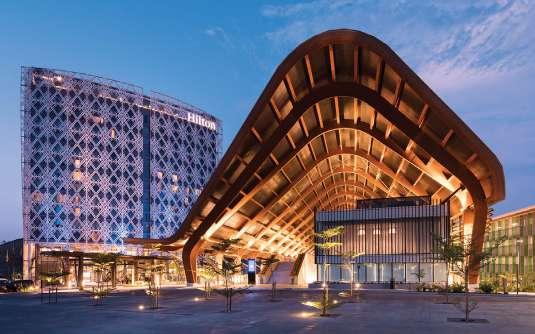
Citi Serviced Apartments
and Motel: There are two Citi Serviced Apartments and Motel properties, one block located at East Boroko and the other at Manu. They are set in safe and secure grounds. The apartments
are fully kitted out. They include cable TV, free Wi-Fi, washing machines, dryers, fridges, fans and air conditioning. Housekeeping is also provided. See facebook. com/citiboutiquehotel. Tel. +675 300 1300.
Crown Hotel: Upmarket rooms and suites in the heart of the CBD. Decent gym, business centre, undercover parking, thriving cafe and Mediterranean restaurant. See ihg.com. Tel. +675 309 3329.
Ela Beach Hotel and Apartments: On the fringe of the CBD, this constantly expanding hotel/apartment complex is part of the Coral Sea Hotels group. See coralseahotels.com.pg. Tel. +675 321 2100.
Gateway Hotel: Conveniently located just minutes from Jacksons International Airport, the hotel has a range of dining options, conference facilities, modern gym and two swimming pools. Free airport shuttles are available for guests. See ➤

The Hilton Hotel Port Moresby and Katubu Convention Centre.
ARRIVALS LOUNGE
coralseahotels.com.pg. Tel. +675 327 8100.
Grand Papua: This premium hotel is now part of the Raddison group and features 156 suite rooms (short and long stay), an executive floor, gym and conference facilities. The separate restaurant and bar areas are popular for business meetings. Centrally located. See coralseahotels.com.pg/grandpapua-hotel. Tel. +675 304 0000.
Hilton Port Moresby: The capital city’s newest luxury hotel opened in late 2018 and is in the government district 10 minutes from the airport. There are five restaurants, an executive lounge, six meeting rooms, a convention centre, swimming pool and fitness centre. All rooms in the 15-storey hotel include floor-to-ceiling windows. The accommodation includes standard rooms, executive rooms and suites. See hiltonportmoresby.hilton.com. Tel. +675 7501 8000.
Holiday Inn & Suites: Located in Waigani, the large grounds include a walking track in a tropical garden setting, outdoor restaurant and bar area, business centre and gym. Includes three-star Holiday Inn Express hotel. See ihg.com. Tel. +675 303 2000.
Lamana Hotel: In Waigani, the hotel has 24-hour free airport transfers, free in-room Wi-Fi, a conference centre, restaurants, and the famous Gold Club. See lamanahotel.com.pg. Tel. +675 323 2333.
Loloata Island Resort: This island resort, 40 minutes from Port Moresby, opened in late 2019. There are 68 rooms (including some overwater suites and villas), a day spa and two restaurants. Day passes are available for visitors who aren’t staying overnight, and

shuttles are provided from Port Moresby. The island is perfect for swimming, snorkelling, diving, walking or just lounging beside the pool. See loloataislandresort.com. Tel. +675 7108 8000.
Sanctuary Hotel Resort & Spa:
The hotel is an oasis in the city, located 10 minutes from the airport in North Waigani. There is a lot of greenery in the hotel grounds and a large aviary, which includes the bird of paradise. The hotel, close to government offices, has a business centre, a day spa, swimming pool and a restaurant with a traditional PNG menu with a contemporary edge. It also has rooms and facilities with ramps for people with disabilities. Tel. +675 303 7400.
Shady Rest Hotel: Located at Three Mile, seven minutes from the airport, this affordable hotel has 74 rooms, including newly built executive rooms, conference facilities, a day spa and salon, a small gaming lounge, a tapas lounge, the Indian-inspired Cellar Restaurant and Mr Mike’s Pizza Company. See shadyrest.com.pg. Tel. +675 323 0000.
Stanley Hotel and Suites:
One of Port Moresby’s newest hotels, this is a luxurious 429-
room property in Waigani, close to government offices and embassies. It has 95 long-stay apartments, gym, pool, cafe, restaurants and an executive lounge. Connected to Vision City Mega Mall. See thestanleypng. com. Tel. + 675 302 8888.
LAE
Crossroads Hotel: A 45-room facility at Nine Mile. The hotel has a Japanese-themed teppanyaki restaurant with Asian/Western fusion menus, full bar service, a well-equipped gym, Wi-Fi and complimentary transfers to both Lae City and the airport. Tel. +675 475 1124.
Hotel Morobe: A centrally located boutique with 38 elegantly decorated rooms. See hotelmorobe. com. Tel. +675 4790 100.
Huon Gulf Hotel & Apartments:
Has comfortable rooms, conference rooms and a pool, located in the industrial part of town. The restaurant offers Italian cuisine and there are two bars. See coralseahotels.com.pg/huongulf-hotel-apartments/. Tel. +675 7999 0100.
Lae City Hotel: Located in the main Top Town area, this hotel
has 24-hour concierge, gym and an excellent cafe and restaurant with Western and Asian cuisine. See laecityhotel.com. Tel. +675 472 0138.
Lae International Hotel: The city’s premier hotel has recently renovated rooms, full bar service, conference and banquet halls, a gym and pool. See laeinterhotel. com. Tel. +675 472 2000.
Lae Travellers Inn: An affordable option, offering clean and comfortable rooms. There is a car rental service on the inn’s premises and their restaurant offers curry takeaway. See laetravellersinn.com/. Tel. +675 479 0411.
EATING & DRINKING
PORT MORESBY
Airways Hotel: Port Moresby’s ritziest hotel has several places to eat. If you’re after fine dining, Bacchus is the place to go. For something more casual, go poolside to Deli KC or 7C’s past reception. The Vue Restaurant has a buffet each morning, lunch and evening. The Filipino-themed buffet is a winner. There is also an a la carte menu and stunning views. The tandoori dishes come highly recommended. If you’re after a drink, have cocktails and beers at the Balus Bar. For an exclusive experience, head to the Havanaba Bar to enjoy a cigar with your pick of top-shelf wines and spirits. See airways.com.pg. Tel. +675 324 5200 and +675 7373 2600.
Akura: An elegant dining and lounge bar at Harbourside that is a popular spot for after-work drinks Try their beef vermicelli salad or pop in for Taco Tuesday. Tel. +675 7320 7777. See instagram.com/ akurapng. ➤
Cocktails at the Crown Hotel.



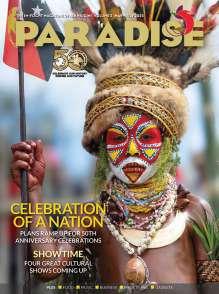


ARRIVALS LOUNGE
Alibi Bar & Grill: At the Harbourside precinct, open for lunch and dinner daily. There’s a kid’s playground if you’re making it a family day. Fridays and Saturdays bring in a big night crowd and the bar stays open until late. Try their platters: the Surf & Turf, Meat Lovers and the Fisherman’s Basket with a view of the harbour. See facebook.com/ alibipng. Tel. +675 7320 7777.
Ang’s Restaurant: No-frills Chinese hidden away in an industrial block opposite Brian Bell’s Gordons Plaza shopping centre. Roast duck is the signature dish. Tel. +675 323 0863.
Asia Aromas: Offering Chinese and Thai food by the water at Harbourside, this eatery has consistently good reviews on




social media. Outdoor seating is available. A good spot for sunset drinks. Tel. +675 321 4780.
Aviat Port Moresby Club: The club is open for breakfast, lunch and dinner. Home-style meals include stir-fries, toasted sandwiches, salt-and-pepper prawns and a pizza menu. This is
a great spot to sit at lunchtime under the shady mango trees, or in the air-conditioned bar. See facebook.com/Aviat-Club.
Cuppa Cafe: Has a rustic setting with great breakfast options, pasta dishes, burgers and salads. The snack bucket – a large bowl of fried chicken, onion rings, prawns,
battered fish, spring rolls and chips – is perfect for sharing. Try their coffee or a range of healthy smoothie combos. Tel. +675 302 8666.
Crown Hotel: For fine dining, choose Rapala Restaurant, its menu a mix of Western and Middle Eastern dishes. It’s open 6pm to 10pm. All-day dining is available at The Cafe, opens at 6am. Every Saturday night, the hotel hosts an International Street Food Festival, featuring popular dishes from around the world. See crownhotel.com.pg. Tel. +675 309 3000.
Crowne Plaza Residences: The Port Terrace Restaurant & Bar has views of Fairfax Harbour, and all-day dining. It’s open 6.30am to 10pm. Try a power juice for ➤








Rooftop dining at the Gateway Hotel in Port Moresby.

“You r part n er in de li ver in g So c i a l , E n v i r on me n ta l a n d Co rp o rate G o ver n a n ce in t h e Minin g I n d us try ”

The M ine r al Res ou r c es A u th or it y ( M R A ) is a g o v e r n m ent instit u ti o n
esta b lished t o r e gu late , g r ow and s u staina b l y m ana g e the m inin g
( m ine r als) ind u st r y t o m axi m i z e m ine r al ex po r t r ev en u e for P a pu a
Ne w Gu inea . It is the cu s t o dian of o v e r 1 5,000 v o l um es of ex p l o r ati o n
r e po r ts and o v e r 900,0 0 0 data po ints of m ine r al data . It is the fi r s t po int of co nta c t for an y bu sinesses in the m inin g se c t o r
Call U s (675) 207 2250
S end U s M ai l info@mra.gov.pg O ur Loc ati o n Mining Haus, Poreporena Freeway PO Box 1906 Port Moresby 121 NCD Papua New Guinea


ARRIVALS LOUNGE
LAE
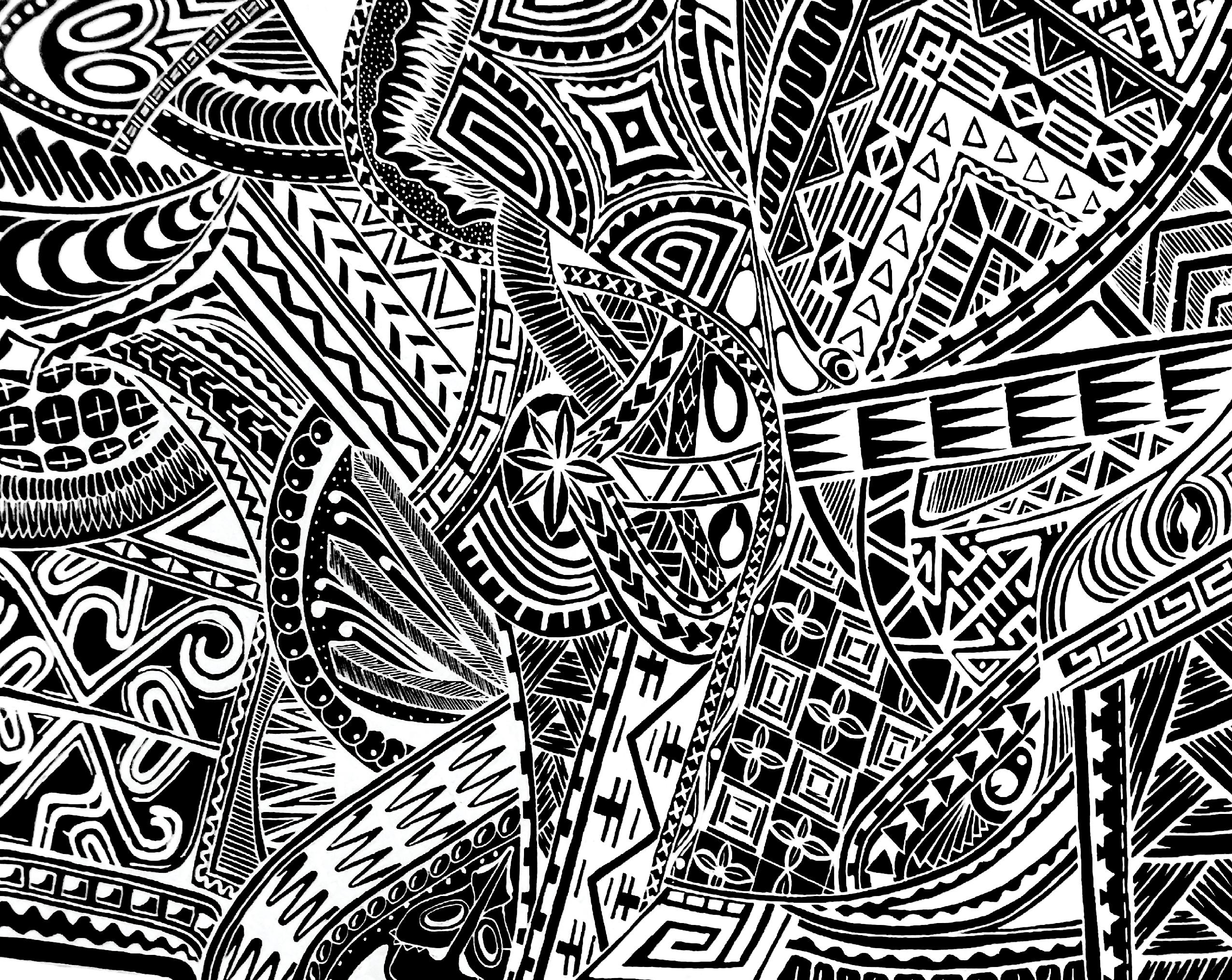

ARRIVALS LOUNGE VISITOR
breakfast, chicken parmy for lunch or chilli lobster for dinner. The extensive menu also includes burgers and steaks, as well as share plates. Great spot to watch the sunset with a beverage, with wine, beer, spirits and cocktails on offer. See portrestaurant.com.pg. Tel. +675 308 3100.
Daikoku: The extensive Japanese menu has teppanyaki, donburi bowls and a large range of sushi. ‘All-You-Can-Eat’ grilled skewers available every Thursday night. You can find them at Stop & Shop Harbour City (first floor) and the Harbourside Precinct. See daikokupng.com. Tel. +675 7375 3130.
Duffy Cafe: Known for excellent coffee and homemade cafe-style food and bakery items, Duffy has three locations: at Harbourside, Gordons and Jacksons International Airport. You can order your breakfast ahead of time for those busy work mornings. You can also find their bread on sale at Waterfront Foodworld. See duffypng.com. Tel. +675 325 8528.
Dynasty at Vision City: This may be the biggest restaurant in Port Moresby. Its size, its chandeliers and its gold decor make it a favourite for balls, dinners and parties. The menu is huge, too, with pages of Asian dishes. The crispy lemon chicken is a favourite. See facebook. com/100064086213057. Tel. +675 302 8538.
Edge by the Sea: The Edge cafe has alfresco dining with a wonderful marina outlook from the ground floor at the Edge Apartments in Harbour City. Eggs benedict, burrito bowls, pork burgers and grilled snapper are among the breakfast and

lunch menu favourites. Try their Turkish lahmacun. There’s a mist water system in the alfresco area that can reduce the ambient air temperature by up to 10 degrees, perfect for those blisteringhot days. See facebook.com/ edgebythesea/. Tel. +675 7995 5263.
Ela Beach Hotel: Drop in to Salt Restaurant for casual all-day dining, including curry, burgers and wok dishes, or pizza at Enzo’s. The Beachside Bakery has a great range of sweet treats and coffee that you can enjoy in outdoor seating. See coralseahotels.com.pg. Tel +675 7998 6510.
Fusion Bistro: A fusion of flavours from China, Thailand and Vietnam. Located in ENB Haus, Harbour City. Takeaway available. Tel. +675 7196 6666.
Gateway Hotel: The hotel’s dining options include the Wild Orchard for breakfast and dinner buffet daily, Jackson’s Gaming–Restaurant–Bar, which has a rooftop bar with views of the airport, as well as claims to the best lamb rack in town, Sizzler’s Family Restaurant for value dining (PGK60 buffet), while Enzo’s
Express does quick lunches, coffee and pizza. Deli Cafe serves excellent milkshakes and the hotel’s own range of bread and pastries. See coralseahotels.com. pg. Tel. +675 7999 0200.
Grand Papua Hotel: The elegant Grand Brasserie has an a la carte menu of modern European cuisine, as well as buffet options – Asian on Tuesday and Seafood on Friday. The Grand Cafe, on Douglas Street, has barista-made Goroka coffee, fruit juices, freshly made salads and sandwiches. The Grand Bar – with stylish marble, high ceilings, timber floors and window shutters – has a light menu and is a popular place to wind down after work. See coralseahotels. com.pg/grand-papua-hotel. Tel. +675 7999 0000.
Hilton Port Moresby: The hotel has five eating areas including Mumu, which is named after the traditional earthen oven of PNG, and serves traditionally inspired dishes. There’s also a top-floor lounge bar called Summit, cafe-style dining in Copper on the lobby level, all-day dining and a breakfast buffet at Feast, including a Southeast Asian buffet every Wednesday
night, and quick bites, such as sandwiches and coffee, at Halo in the convention centre foyer. See hiltonportmoresby.hilton.com. Tel. +675 7501 8000.
Hilton Residences: The Host Deli, Bistro & Bar on level two has a relaxed modern vibe with ample seating options. The Super Bowl (roasted cauliflower, falafel, poached egg, chickpeas with hummus, labneh and halloumi) comes highly recommended. If you’re on the go, the delicatessen bar offers fresh fruit, pastry, sandwiches and desserts. Opens at 6.30am and stays open till late for drinks. See hiltonportmoresby. hilton.com. Tel. +675 7501 8000.
Holiday Inn & Suites: The Kopi Haus Restaurant has breakfast from 6am, lunch and dinner. It has a la carte as well as a buffet, with the cuisine including PNG flavours. Expect themed buffets (such as barbecue and flavours of Asia) from Wednesday to Friday. The poolside Gekko Bar opens at midday and includes a big screen for sports telecasts and tasty bites to go with a range of wines, cocktails and local and international beers. See ihg.com. Tel. +675 303 2000.
Hosi Ramen: As the name suggests, this Japanese restaurant at Vision City specialises in ramen (noodles served in broth with meat and vegetables). A party of up to 15 people can opt for a hotpot session. Tel.+675 302 8555.
Jeanz Cafe: A family-friendly cafe with ample seating that proudly serves PNG Arabica coffee. Located in Gordons Plaza, it has a great range of salads, pastries and sandwiches. See gordonsplaza.com.
The Mumu restaurant at the Hilton Hotel Port Moresby.
ARRIVALS LOUNGE
Kofi “N” Kai: A cafe located in BNBM Home Centre with ample lounge seating. Try the ham and cheese croissant or indulge in dessert options like Oreo cheesecake, carrot cake or the Tel. +675 775 74399.
Korean Garden: An affordable menu at Vision City that includes a do-it-yourself barbecue, as well as traditional favourites such as kimchi and gimbap. See facebook. com/koreangardenpng. Tel. +675 302 8534.
Lamana Hotel: Choose from options including Spices Restaurant (Indian), the Italian Restaurant, Cafe Palazzo and PNG’s biggest nightclub, The Gold Club. The 360 Bar has great night views, and exclusive birthday fireworks can be organised. See lamanahotel.com. pg. Tel +675 7373 0600.
Loloata Island Resort: The private island has two restaurants. Bootless Bay is spacious with high ceilings and an open-plan style that provides a panoramic view of the sea. They serve a highly recommended breakfast and lunch buffet. The vibe at night makes it the perfect spot for a dinner date. The Beach Club upstairs is a great spot for special events like corporate dinners, birthdays and weddings. See loloataislandresort.com. Tel. +675 7108 8000.
Lucky Lucky: Informal but classy Thai cuisine at the Nambawan Super Plaza. Town and harbour views, alfresco dining. Go-to dishes include pad Thai noodles and the charcoal-grilled pepper beef sirloin. Tel. +675 7995 5264.
Mojo Social: This casual Mediterranean-inspired bar and restaurant is on the ground floor of PWC Haus at Harbour City. Tapasstyle dishes, risotto and pizza are


among the offerings. Try the new Mexican dishes during a regular Taco Tuesday. See mojofood.co. Tel. +675 7995 5264.
Pentagon Entertainment: On the former Laguna Hotel premises. Guests can enjoy indoor and outdoor seating. There is also a family-friendly pool area. Try some of the signature dishes like biryani stuffed roasted chicken, crispy pork sisig, and salmon in an orange glaze. Tel. +675 325 1068.
PGO!: PNG’s first online delivery service. Their vendors include Burrito Central (Port Moresby’s first Mexican takeaway), Port Terrace, The Dirty Kitchen, Abus na Kumu (translates to ‘meat and greens’), Fusion, Kopibin, Mr Mike’s Pizza, The Cellar, Juice Bar and Marcus Kitchenette and Catering and many more. See phipax.com.
Port Terrace: Fast becoming a popular lunch and dinner spot, the restaurant and bar is in the Crowne Plaza Residences. There are grilled dishes, share plates like a seafood or sticky pork ribs platter, and homemade pasta dishes. There’s a new cocktail to try every month. See portrestaurant.com.pg. Tel. +675 308 3100.
Red Rock Bar: Located at Dogura, 6 Mile (along Magi Highway). Be prepared for an uphill drive to the bar but it’s worthwhile for the spectacular sunset. Try the Red Rock burger or sizzling lamb and pork with a table in the outdoor area. Tel. +675 8214 7357.
Royal Papua Yacht Club: Relaxed, spacious and open to non-members. Comfort food, draught beer and an open-plan bar area showing sport on large
screens. There is a themed cocktail night each Thursday. See rpyc.com.pg. Tel. +675 321 1700.
Seoul House: This restaurant specialises in Korean, Thai and Chinese cuisine, cooked on a hotplate in front of you. The dishes include a seafood platter of coral trout, mussels and shrimp, and Singapore-style chilli crab. Seoul House is tucked away in a garden oasis compound in Five Mile. The owners also have a cafe at the Jacksons International Airport, Hotspot. Try the black forest cake and croissant sandwich while waiting for your flight. Tel. +675 7823 3075.
Shady Rest Hotel: The Indian dishes at the hotel’s Cellar Restaurant draw high praise from reviewers on TripAdvisor. The restaurant also prides itself in its steaks. Mr Mike’s Pizza Company is a takeaway located at the hotel and has classic pizzas, such as Hawaiian and margarita, as well as gourmet pizzas such as the Mediterranean, which is packed with feta, olives, mushrooms and more. Bakeology Cafe & Bakery offers alfresco dining surrounded by lush greenery. Enjoy a range of sandwiches, salads, pastries, desserts and freshly baked bread. See shadyrest.com.pg. Tel +675 323 0000.
Stanley Hotel and Suites:
This Waigani hotel has several restaurant choices. On the 19th floor, the Silver Leaf offers intimate fine dining with stunning night views. The Executive Lounge (for guests staying on the 14th to 18th floors) offers breakfast, allday snacks and cocktail canapes. A walk up the stairs from the lounge takes you to the Mezz Bar, which offers premium spirits. There is also a smoking deck. ➤
Lae Yacht Club, a relaxing venue for drinks or pub-style meals.
The Lamana Hotel in Waigani.
ARRIVALS LOUNGE
The chic tapas-style Monsoon Lounge is on the ground floor. Green Haus restaurant has all-day dining, including buffet dinners with live cooking stations. Choose your own combo at the new juice station available at breakfast and lunch. The serene Rainforest Cafe, close to the check-in area, has coffee, desserts and pastries. See thestanleypng.com.
Tandoor on the Harbour: Come here for a curry with great bay views. The butter chicken with garlic nan is classic. See facebook. com/tandoorontheharbour. Tel.+675 3201 910.
Tasty Bites: This cosy traditional Indian restaurant is tucked away in the town centre in Hunter Street near Crowne Plaza (ANG Haus). A great spot for quick

and affordable meals. Try the vegetable noodles with chicken strips or the pizza menu. Deliveries available. Tel. +675 321 2222.
Tribes Coffee Club: This cafe has two locations: Oasis building
in the Steamships compound, Waigani, and Lawes Road, Ela Beach. All-day dining available. The seafood platter with crab, shrimps and the catch of the day is a dinner favourite. Tel. +675 321 0455.
Tuna Bay Resort: Located in Taurama, just five minutes from Manu. Enjoy battered fish and chips, char-grilled rump steak and boneless chicken that comes with a side of garden salad and chips. There is indoor and outdoor dining, with bay views. Tel. +675 7920 8777.
LAE
Bulolo Golf and Country Club: Lae’s newest restaurant has an a la carte menu with indoor dining and an outdoor deck overlooking the course. The Bulolo T-bone steak is said to be among the best in the country and is sourced locally. Try ‘Papa Tony’s Pizza’, a stone-baked pizza created by the club’s chefs. See facebook.com/ bulolocountryclub/. Tel. +675 7358 7161.

The pool area at Loloata Island Resort.
ARRIVALS LOUNGE
Bunga Raya: This local favourite, serving Malaysian-style Chinese, is located next to the Lae Golf Club. Be sure to try the stuffed lettuce cups, laksa and claypot tofu. They’ve added boba milk tea and their own range of fruity sodas to the drink’s menu. See facebook. com/bungarayarestaurant/. Tel. +675 472 7177.
Cafe 411: There’s a cosy atmosphere at this casual cafe next to Hotel Morobe on Coronation Drive. The Westernstyle menu includes finger foods and PNG coffee. Try the T-bone steak with mushroom sauce if you’re after something hearty. Tel. +675 479 0100.
Huon Club: This private members’ club offers airconditioned facilities, comfortable
lounge chairs, an expansive deck overlooking the Lae Golf Club, a fully stocked bar and Foxtel to preview all the racing and sporting events. Open on Wednesday and Friday, members can enjoy regular lucky key draws and a barbecue menu. Inquiries to Lae Golf Club. See laegolfclub.com.pg. Tel. +675 472 1363.
The City Cafe: Located in the Lae City Hotel on 3rd Street, the cafe serves Western and Asian cuisine. The signature dishes include ribs and nasi goreng. Tel. +675 472 0138.
Lae Garden Restaurant: The Asian menu includes staples such as crispy chicken, butter prawns and the Malaysian dish nasi lemak. The elegant restaurant, inside Hotel Morobe on Coronation

TRANSPORT
Drive, offers breathtaking views of the city from its balcony. A great venue for big dinner parties. Tel. +675 479 0100.
Lae Golf Club: The club is excellent for a few sundowners as you overlook the stunning green with access to the excellent bar. Apart from golf, you can enjoy the basketball and tennis courts. See laegolfclub.com.pg. Tel. +675 472 1363.
Lae International Hotel:
Home to three restaurants –
Luluai’s Italian Pizza, Vanda and Kokomo – which serve an array of international cuisine, including Indian and seafood buffets. The Sportsman’s Bar (aka Jack’s Bar) is a good place for a nightcap. See laeinterhotel.com. Tel. +675 472 2000.
Lae Yacht Club: The perfect place for late-afternoon beers, or just as nice for a relaxing lunch. Serves pub-style food. Try the Cajun grilled fish of the day. See laeyachtclub. com.pg. Tel. +675 472 4091.
Mountain View Restaurant: Located at the Crossroads Hotel at Nine Mile. Try the newly curated menu, which is a mix of Western and Pacific cuisine. Ramu steaks are a favourite. Great spot for cocktails and wine. See crossroads-hotel-lae.mydirectstay. com/. Tel. +675 475 1124.
Ocean Restaurant: Located at Aviat Club, it’s a popular seafood spot. Offers authentic Asian cuisine and local dishes. See facebook. com/p/Ocean-RestaurantLae-100049129045632/. Tel. +675 7370 3045. n


ARRIVALS LOUNGE
Papua New Guinea has more than 800 languages, but the three official languages are Tok Pisin, English and Motu. Here, we outline some Tok Pisin, which is the largest lingua franca of PNG.
Where do I find a taxi?
Bai mi painim taxi long we?
One coffee with milk, please. Wanpela kap kopi wantaim milk plis.
Where is the toilet?
Toilet istap we?
Numbers
1
2
3
How much is this?
Hamas long dispela?
Thank you very much. Tenkiu tru.
You understand English?
Yu save long tok Inglis?
Where is my bag?
Bag bilong mi istap we?
Where can I change my money?
Wanem hap bai mi ken senisim moni bilong mi?
One beer, please. Wanpela bia plis. Why? Bilong wanem?
How many children do you have? Yu gat hamaspla pikinini?
Where are you from?
Yu bilong wanem hap?
I don’t know. Mi no save.
What do you want?
Yu laikim wanem samting?
Restaurant Ples bilong kaikai
Goodbye Gutbai
Hello Halo
Water Wara
Baggage Kago
Airport Ples balus
Place Ples
Fish Pis
4
5
6
7
8
9
10 Ten

Wan
Tu
Tri
Foa
Faiv
Sikis
Seven
Et
Nain

THE LATEST FROM AIR NIUGINI
WITH ILLAN KAPRANGI, MANAGER CORPORATE COMMUNICATIONS
PNG cadets start pilot training
Four young Papua New Guineans have departed for Australia in the second group undertaking Air Niugini’s revived National Pilot Cadet Program.
The cadets include one woman and are based at Flight Training Adelaide in South Australia for 18 months before returning to PNG to continue their training.
Christopher Morea Saisagu, Salmon Ephraim Hans, Daera Konio Reid and Eruel Toovey Verave were selected for the program after passing a rigorous selection process.
Thousands of applications were received from young men and women across PNG. Shortlisted candidates underwent academic assessments, aptitude tests and interviews conducted by Flight Training Adelaide and Air Niugini.
During a meeting with the cadets and their parents before they travelled, Air Niugini’s Chief Executive Officer Gary Seddon emphasised the airline’s significant investment in their training.
He said that by the time the cadets are fully trained, Air Niugini will have invested PGK1 million in each of them. He highlighted the expectations of the highly regulated airline industry, focusing on safety and security, and urged the cadets to remain focused and disciplined.
“It may be your lifelong dream to one day work for the national airline. While you have made it this far, it’s the envy of many to be in the seats you occupy today. Therefore, do not take this opportunity lightly. Air Niugini is making this substantial investment to ensure

Thousands of applications (for cadet pilot positions) were received from young men and women across PNG.
your dreams become a reality. We want you to succeed and return to work with us,” the CEO said.
Air Niugini’s Acting Chief Operating Officer, Captain Samiu Taufa, and Manager of Pilot Cadets and Dash 8 pilot, Captain Joachim Ortlauf, also encouraged the cadets to stay focused.
“Initially, it’s always exciting; however, there will be challenges and temptations along the way,” Captain Taufa said. “There may be times when you feel alone but always remember to stay focused and disciplined. If you need support, there are always people here at Air Niugini who will help, guide and mentor you throughout your training.”
Upon completion of their 18-month training in Australia, the cadets will graduate with a commercial pilot’s licence and multi-engine instrument rating. They will then return to Air Niugini to continue their in-flight training.
Air Niugini’s cadet pilot program was reintroduced in 2023 by the current CEO after an eight-year hiatus.
Since the inception of the cadet pilot training program in 2015, Air Niugini has graduated 84 Papua New Guinean pilots. n
Air Niugini rolls out latest software system
As part of Air Niugini’s digital transformation, the airline has implemented a new software system called Oracle Fusion Cloud Enterprise Resource Planning (ERP).
It will provide a more efficient way to manage the airline’s human resources, payroll, finance and supply chain operations.
Air Niugini Chief Executive Officer, Gary Seddon, says the airline’s digital transformation program, launched in early 2023, signifies a commitment to a robust future, “developing our people, our systems and our fleet”.
“To effectively manage this transformation, having access to accurate and timely
information is essential,” he says. “It empowers our management team to make informed, data-driven decisions that align with our strategic goals.”
ERP is a cloud-based system and is used by major airlines, including Qantas, Air Asia, Qatar Airways and Virgin Australia. n
Air Niugini executives and cadets (from left) Captain Joachim Ortlauf, Christopher Morea Saisagu, Salmon Ephraim Hans, Captain Samiu Taufa, CEO Gary Seddon, Daera Konio Reid and Eruel Toovey Verave.
Airline pushes safety message
Air Niugini’s unwavering commitment to fostering a robust safety culture across the airline was in evidence recently at the company’s second annual safety day.
Under the theme Yumi Bung Wantaim: Lukautim Wok, Lukautim Balus, Lukautim Laip (Together: Safeguard Work, Aircraft, and Life), the event focused on raising awareness and educating staff about the importance of safety in every facet of the airline’s operations. It also served as a platform to recognise the airline’s dedicated ‘safety heroes’ – staff who go beyond their duties to ensure a safe working environment.
At
Air Niugini,
safety is not just what we do; it’s who we are.
Chief Executive Officer, Gary Seddon, officially opened the event, saying that safety is a shared responsibility that transcends the business.
“Let us use today to learn, to challenge ourselves to speak up, and to support one another. Whether you work at the ramp, the flight deck, the hangar or the head office, your voice matters, and your actions matter even more. At Air Niugini, safety is not just what we do; it’s who we are.”
Twelve departments set up information booths, providing colleagues with insights into various safety processes, procedures and equipment relevant to their roles. Recognition was also given to staff from ground operations and flight operations for their exemplary contributions to workplace safety. They were awarded with certificates.
This year’s safety day also saw the involvement of key stakeholders, including Santos, Niu Sky, St John Ambulance and the Royal Papua New Guinea Constabulary (RPNGC).
The RPNGC’s K9 unit conducted drills for detecting illegal substances and demonstrated responses to bomb threats. St John Ambulance demonstrated essential first-aid procedures, emergency medical response tactics and life-saving skills. Amaru, a cybersecurity specialist from New Zealand, demonstrated real-time system hacking, phishing attacks and credit card data breaches.
The airline’s in-house health clinic offered complimentary basic health checks, emphasising the importance of health and safety in the workplace.
The event was live-streamed, allowing staff in outports, both domestic and international, to participate and witness the activities. Head of the Safety, Quality, Risk, and Audit Department, Marco McConnell, said: “Safety is not merely a checklist or a set of procedures – it’s a mindset, a culture and a way of life.” n

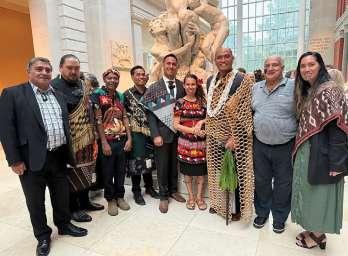
New York journey for PNG artists
Air Niugini has assisted the Massim Museum in Alotau to bring a Pacific perspective to New York’s famous Metropolitan Museum of Art (Met).
The museums have been collaborating on the reopening of the Met’s Oceanic Gallery, and as part of the collaboration the Massim Museum sent a three-member delegation to the US.
Air Niugini helped with the air transport, taking the three delegates from Alotau to Port Moresby and Brisbane.
In the three-member team were a master carver, historian and a culture bearer.
Lazarus Modedya is a master carver from the Trobriand Islands, renowned for his intricate woodwork and storytelling.
Jeff Evennett is an artist, storyteller and historian from Samarai Island, dedicated to preserving coastal community stories.
Fidelma Saevaru is a culture bearer and vital contributor to the partnership, providing historical context for Pacific artefacts.
The reopening of the Oceanic Gallery in May celebrated the renovation of the Met’s Michael C. Rockefeller Wing, housing over 1800 works from Africa, the Americas and Oceania.
This journey began two years ago when the Met reached out to the Massim Museum, seeking “genuine voices” to provide context for their Pacific collections. n
PNG participants with other Pacific Islanders at the Met in New York.
Staff attending Air Niugini’s safety day in Port Moresby.
WELCOME ABOARD
ENJOY OUR BIRD OF PARADISE IN-FLIGHT SERVICE
PLEASE ASK US
If there is anything our cabin crew can assist you with during your flight, please do not hesitate to ask them.
HAND LUGGAGE
Please ensure that your carry on luggage is placed in the overhead locker or under the seat in front of you.
TAKEOFF AND LANDING
Ensure that your seat is in the upright position during takeoff and landing. Folding tables must be returned to their original position in the seat back or the armrest.
SAFETY FIRST
Your seat belt must be securely fastened during take off and landing or whenever the seat belt sign is on. When the seat belt sign is off you may move about the cabin as necessary. However while seated, keep your seat belt fastened securely in case of unexpected turbulence.
ELECTRONIC EQUIPMENT
Cellular telephones, TV receivers or radio controlled devices are not to be used at any time on board an aircraft. Electronic devices such as portable computers, compact discs or cassette players and video games can be used only when the seat belt sign is switched off.
CHILDREN AND BABIES
The cabin crew will also be pleased to assist in preparing your baby’s food and bottle. Baby food and diapers are also available. Please do not hesitate to ask our friendly cabin crew.
SMOKING
Smoking is not permitted on any Air Niugini flight.
ENTERTAINMENT
A selection of movies and music including classical, modern, country and local are available on international services.
PILLOWS AND BLANKETS
On International flights, pillows and blankets are available on request from our cabin crew.
CUISINE
Our in-flight* meals have been specially prepared for your enjoyment. If you require a vegetarian meal or you are on a special diet, child or baby food, please inform us when making your reservation.
IMMIGRATION AND CUSTOMS FORMS
During your flight, our cabin crew will distribute Immigration and Custom forms before each landing point. Ensure that you carefully read and complete these documents and have them ready for inspection with your passport at the Immigration and Customs arrival counters.
BEFORE YOU LEAVE
Please check your seat pocket and overhead lockers before you disembark to ensure you have not left any items of value. We look forward to seeing you when you next fly with us on our Bird of Paradise Service.

B737-800 P2PXB 10J/150Y – Boeing
Length: 39.5M
Wing Span: 35.79M
Range: 5000-5500KM
Cruising Speed: 810-850KPH
Power Plant: 2 x CFM56-7B27E

B767-300ER - Boeing
Length: 59.94m
Wing Span: 47.57m
Range: 8100km
Cruising Speed: 857kph
Power Plant: 2 x PW4000
Normal Altitude: 11000 - 12000m
Standard Seating Capacity: 188
Business Class: 28
Economy Class: 160
Number of Aircraft in Fleet: 2

F70 – Fokker
Length: 30.91m
Wing Span: 28.08m
Range: 3410km
Cruising Speed: 743kph
AIR NIUGINI FLEET
Normal Altitude: 11300m
Standard Seating Capacity: 162
Business Class: 10
Economy Class: 150
Number of Aircraft in Fleet: 01

B737-800 P2PXC 16J/128Y - Boeing
Lenght: 39.5M
Wing Span: 35.79M
Range: 5000-5500KM
Cruising Speed: 810-850KPH
Power Plant: 2 x CFM56-7B27E
Normal Altitude: 11300m
Standard Seating Capacity: 154
Business Class: 16
Economy Class: 128
Number of Aircraft in Fleet: 1

F100 – Fokker
Length: 35.53m
Wing Span: 22.08m
Range: 3000km
Cruising Speed: 780kph

B737-800 PXA - Boeing
Lenght: 39.5M
Wing Span: 35.79M
Range: 5000-5500KM
Cruising Speed: 810-850KPH
Power Plant: 2 x CFM56-7B27E
Normal Altitude: 11300m
Standard Seating Capacity: 154
Business Class: 16
Economy Class: 138

DHC8-400 - Bombardier
Lenght: 32.8M
Wing Span: 28.4M
Range: 3000KM
Cruising Speed: 670KPH
Power Plant: 2 x Rolls Royce Tay 650-15 turbo engines
Normal Altitude: 11000m
Standard Seating Capacity: 73
Business Class: 8
Economy Class: 65
Number of Aircraft in Fleet: 3

DHC8-202 – Bombardier
Length: 22.25m
Wing Span: 25.89m
Range: 1800km
Cruising Speed: 550kph
Power plant: 02 x Pratt & Whitney PW123D
Normal Altitude: 7600m
Standard Seating Capacity: 37
Number of Aircraft in Fleet: 2
Power Plant: 2 x Rolls Royce Tay 650-15 turbo engines
Normal Altitude: 11000m
Standard Seating Capacity:101
Business Class: 8
Economy Class: 93
Number of Aircraft in Fleet: 5

DHC8-Q315 – Bombardier
Length: 25.7m
Wing Span: 27.4m
Range: 1700km
Cruising Speed: 510kph
Power Plant: 02 x Pratt & Whitney PW123E
Normal Altitude: 6100m
Standard Seating Capacity: 50
Number of Aircraft in Fleet: 5
Power plant: 02 x Pratt & Whitney PW150A
Normal Altitude: 7600ft
Standard Seating Capacity: 76
Number of Aircraft in Fleet: 4

Falcon 900EX - Dassault
Lenght: 20.21M
Wing Span: 19.33M
Range: 4500KM
Cruising Speed: 650KPH
Power Plant: 3 x Honeywell TFE731
Maximum Altitude: 7600m
Standard Seating Capacity: 12
Number of Aircraft in Fleet: 1
Your health inflight

At Air Niugini we care about your comfort and safety. We have included the following information about your health in-flight that we hope you will find helpful and useful.
When you are flying you can be seated and be inactive for long periods of time. The environment can be low in humidity and pressurised up to an altitude of 2240 metres above sea level. Unlike other forms of transportation, air travel allows for rapid movement across many time zones, causing a disruption to the body’s “biological clock”. Although these unique factors do not pose a health or safety threat to most passengers, there are guidelines you can follow that will improve your comfort level, during and after a flight. We hope the following recommendations will help you have a more pleasant flight today and in the future.
Blood Circulation / Muscle Relaxation
When you’re sitting upright in a stationary position for a long period of time, several things can happen.
The central blood vessels in your legs can be compressed, making it more difficult for the blood to get back to your heart.
The long inactivity of your body muscles in this position can result in muscle tension, back aches or a feeling of excessive fatigue during, or even after, your flight. A stationary position inhibits the normal body mechanism for returning fluid to your heart, and gravity can cause the fluid to collect in your feet. This results in swollen feet after a long flight.
Studies have concluded that prolonged immobility may be a risk factor in the formation of clots in the legs (DVT - deep vein thrombosis). Particular medication and medical conditions may increase the risk of formation of clots if associated with prolonged immobility.
Medical research indicates that factors which may give you an increased risk of blood clots in the legs include: Former or current malignant disease
Blood disorders leading to increased clotting tendency
Personal or family history of DVT
Immobilisation for a day or more
Increasing age above 40 years
Pregnancy
Recent major surgery or injury, especially to lower limbs or abdomen
Oestrogen hormone therapy, including oral contraceptives
Dehydration
Heart failure
Trauma
Varicose veins
Obesity
Tobacco smoking
Recommendations
If you fall into any of these categories or you have any concern about your health and flying, Air Niugini recommends you seek medical advice before travelling. Follow our in-flight exercises programme.
Jetlag
The main cause of jetlag is travelling to different time zones without giving the body a chance to adjust to new night-day cycles. In general, the more time zones you cross during your flight, the more your biological clock is disturbed.
The common symptoms are sleeplessness, tiredness, loss of appetite or appetite at odd hours.
Recommendations
Get a good night’s rest before your flight. Arrive at your destination a day or two early, to give your body a chance to become more acclimatised to the new time zone.
Leave your watch on home time if you’re staying at a destination less than 48 hours. Also try to eat and sleep according to your home time.

Change your watch to the local time if your stay is longer than 48 hours, and try to eat and sleep in accordance with the local time.
On longer stays, try to prepare in advance, adjust your meal and rest times to be closer to those of your destination.
Try some light exercise - go for a brisk walk, or do some reading if you can’t sleep after arrival at your destination. It generally takes the body’s biological clock approximately one day to adjust per time zone crossed. Fly direct to minimise flight time. This allows you to relax more upon arrival.
Cabin Humidity / Dehydration
Humidity levels of less than 25 percent are common in the cabin. This is due to the extremely low humidity levels of outside air supplied to the cabin. The low humidity can cause drying of the nose, throat, eyes and it can irritate contact lens wearers.
Recommendations
Drink water or juices frequently during the flight
Drink coffee, tea and alcohol in moderation. These drinks acts as diuretics, increasing the body’s dehydration. Remove contact lenses and wear glasses if your eyes are irritated.
Use a skin moisturiser to refresh the skin.
Eating and Drinking
Proper eating and drinking will enhance your comfort both during and after your flight.
Recommendations
Avoid overeating just prior to and during the flight. It is difficult to digest too much food when the body is inactive.
Drink coffee, tea and alcohol in moderation. These drinks acts as diuretics, increasing the body’s dehydration.
Cabin Pressurisation
It is necessary to pressurise the outside air drawn into the cabin to a sufficient density for your comfort and health.
Cabins are pressurised to a maximum cabin altitude of 2440 metres. It is the same air pressure as if you were at an elevation of 2440 metres above sea level. The cabin pressure and normal rates of change in cabin pressure during climb and descent do not pose a problem for most passengers. However, if you suffer from upper respiratory or sinus infections, obstructive pulmonary diseases, anaemias or certain cardiovascular conditions, you could experience discomfort. Children and infants might experience some discomfort because of pressure change during climb and descent.
If you are suffering from nasal congestion or allergies, use nasal sprays, decongestants and antihistamines 30 minutes prior to descent to help open up your ear and sinus passages. If you have a cold or flu or hay fever your sinuses could be impaired. Swollen membranes in your nose could block your eustachian tubes-the tiny channels between your middle ear chamber. This can cause discomfort during changes in cabin pressure, particularly during descent.
Recommendations
If you have a pre-existing medical condition that warrants supplemental oxygen, you can order from us. Please give at least seven days notice before travelling.
To “clear” your ears try swallowing and/or yawning. These actions help open your eustachian tubes, equalizing pressure between your ear chamber and your throat. When flying with an infant, feed or give your baby a dummy during descent. Sucking and swallowing will help infants equalize the pressure in their ears.
Motion Sickness
This ailment is caused by a conflict between the body’s sense of vision and its sense of equilibrium. Air turbulence increases its likelihood because it can cause movement of the fluid in the vestibular apparatus of the inner ear. If you have good visual cues (keeping your eyes fixed on non-moving object), motion sickness is less likely to occur.
Recommendations
When weather is clear and you can see the ground, sea or horizon, you are less susceptible to motion sickness.
You can buy over the counter medications but we recommend that you consult your doctor about the appropriate medications.






































































































































































































































































































































































































INTERNATIONAL ROUTE MAP
Your wellbeing
These exercises are designed to encourage a safe way to enjoy movement and stretch certain muscle groups that can become stiff as a result of long periods of sitting. They may be effective in increasing the body’s circulation and massaging the muscles. We recommend you do these exercises for three or
four minutes every hour and occasionally get out of your seat and walk down the aisles if conditions allow. Each exercise should be done with minimal disturbance to other passengers. None of the following should be performed if they cause pain or cannot be done with ease.


ANKLE CIRCLES
Lift feet off the floor: Draw a circle with toes, simultaneously moving one foot clockwise and the other foot counter clockwise. Reverse circles. Do each direction for 15 seconds. Repeat if desired.
KNEE LIFTS
Lift leg with knee bent while contracting your thigh muscle. Alternate legs. Repeat 20-30 times for each leg.
SHOULDER ROLL
Hunch shoulders forward, then upward, then backward, then downward using a gentle circular motion.
ARM CURL
Start with arms held high at 90° angleelbows down, hands out in front. Raise hands up to chest and back down alternating arms. Do these exercises in 30 second intervals.
KNEE TO CHEST
Bend forward slightly. Clasp hands around left knee and hug it to your chest. Hold stretch for 15 seconds. Keeping hands around knee, slowly let it down. Alternate legs. Repeat 10 times.
FORWARD FLEX
With both feet on the floor and stomach held in slowly, bend forward to walk your hands down the front of your legs towards your ankles. Hold stretch for 15 seconds and slowly sit back up.
Raise both arms straight up and over your head. With one hand grasp the wrist of the opposite hand and gently pull to one side. Hold stretch for 15 seconds. Repeat other side.
SHOULDER STRETCH
Reach right hand over left shoulder.
Place left hand behind right elbow and gently press elbow towards shoulder. Hold stretch for 15 seconds. Repeat other side.
NECK ROLL
With shoulders relaxed, drop ear to shoulder and gently roll neck forward and to the other side, holding each position about 5 seconds. Repeat 5 times.
Foot motion is in three stages.
1. Start with both heels on the floor and point feet upwards as high as you can.
floor.
3. Lift heels high, keeping balls of feet on floor. Continue these three stages with continuous motion in 30 second intervals.
FOOT PUMPS
OVERHEAD STRETCH
2. Put both feet flat on the
ADVERTISING DIRECTORY
Air Niugini
Pg165, 181 & 194
Allied Pacific
Consultancy Pg174
Argo Marine Pg119
Ashton Brunswick Pg19
Atlas Steel Pg33
Australian High Commission
Pg26
Avenell Engineering Systems Pg143
Badili Hardware Pg169
Bank of South Pacific
4page special insert
Bank of South Pacific Life Pg45
Barlow Industries Pg111
Bishops Pg164
Bismark Shipping Pg69
Business Advantage International Pg171
Consort Express Lines Pg127
Constantinou Group Pg195
Corps Security Pg179
CPL Group Pg76
CreditBank PNG Pg17
Credit Corporation Properties Pg25
Cross Roads Transit Pg161
Crown Hotel Pg18
Datec Pg153
Duffy Cafe Pg168
Dulux Pg68
EastWest Transport Pg180
Ela Motors Pg117
EU-FCCB
Pg158,159
ExxonMobil Pg196
Farmset Pg110
Gazelle International Hotel Pg83
Goroka Coffee Pg129
Guard Dog Group Pg141
Hastings Deering Pg46
Heritage Park Hotel Pg95
Hilton Hotel Pg4,5
Hotels Hospitality Pg115
ICTSi Pg73
Island Mobile Hire Cars Pg77

International Training Institute Pg88
Internal Revenue Commission Pg87
Islands Petroleum Pg47
Kanda International Pg128
Kapi & Clarke Pg155
Kokopo Beach
Bungalow Resort Pg193
Kongo Coffee Pg178
KPMG PNG Pg152
Kumul Minerals Pg43
Kumul Petroleum Holdings Ltd Pg55
Kwila Corp Ltd Pg105
Lae International Hotel Pg116
Lightspeed Pg131

Mapai Transport Pg100,101
Marriot Pg21
MinPac PNG Pg99
Moni Plus Pg150
Mineral Resources Authority Pg173
Motor Vehicle Insurance Ltd
Pg122,123
MRDC Pg149
Nambawan Super Pg56,57
Nasfund Pg10,11
National Fisheries Authority Pg64,65
NCI Packaging Pg96
Niugini Assurance Group Pg24, 142
PAC Solutions Pg107
Pacific Energy Aviation Pg16
Pacific Palms
Property -
Harbourside Dev Ltd Pg23
Panamex Pg140
Paradise Foods Pg49
Pinhalense Pg44
Plawa Sun LtdKavieng Hotel Pg89
Plawa Sun LtdMalagan Resort Pg106
PNG Coffee Pg22
PNG Core Pg97
PNG Dataco Pg156
PNG Embroidery Pg96
PNG Forest Products Pg79
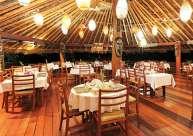


PNG Immigration Pg121
PNG Ports Pg6,7
PNG Sustainable Development Pg30, 31
Portside Pg75
Pronto Pg157
Remington Pg63
Resource & Investment Finance Ltd Pg67
Royal Papua Yacht Club Pg120
Santos Pg37
Smarthills Pg175
South Pacific Post Pg147
SP Brewery Pg2
Steamships
Corporate Pg81

Swire Shipping Pg51
TCB Travel Pg29
Theodist Pg61
Travel Services Ltd Pg3
Tropic Air Pg15
Trukai Industries Ltd Pg137
Tufi Resort Pg85
Vanguard International Pg104
Vodafone PNG Pg27
Walindi Plantation Resort Pg20
Westpac Bank Pg13
Wisdom PNG Pg172
WRC PNG Pg71




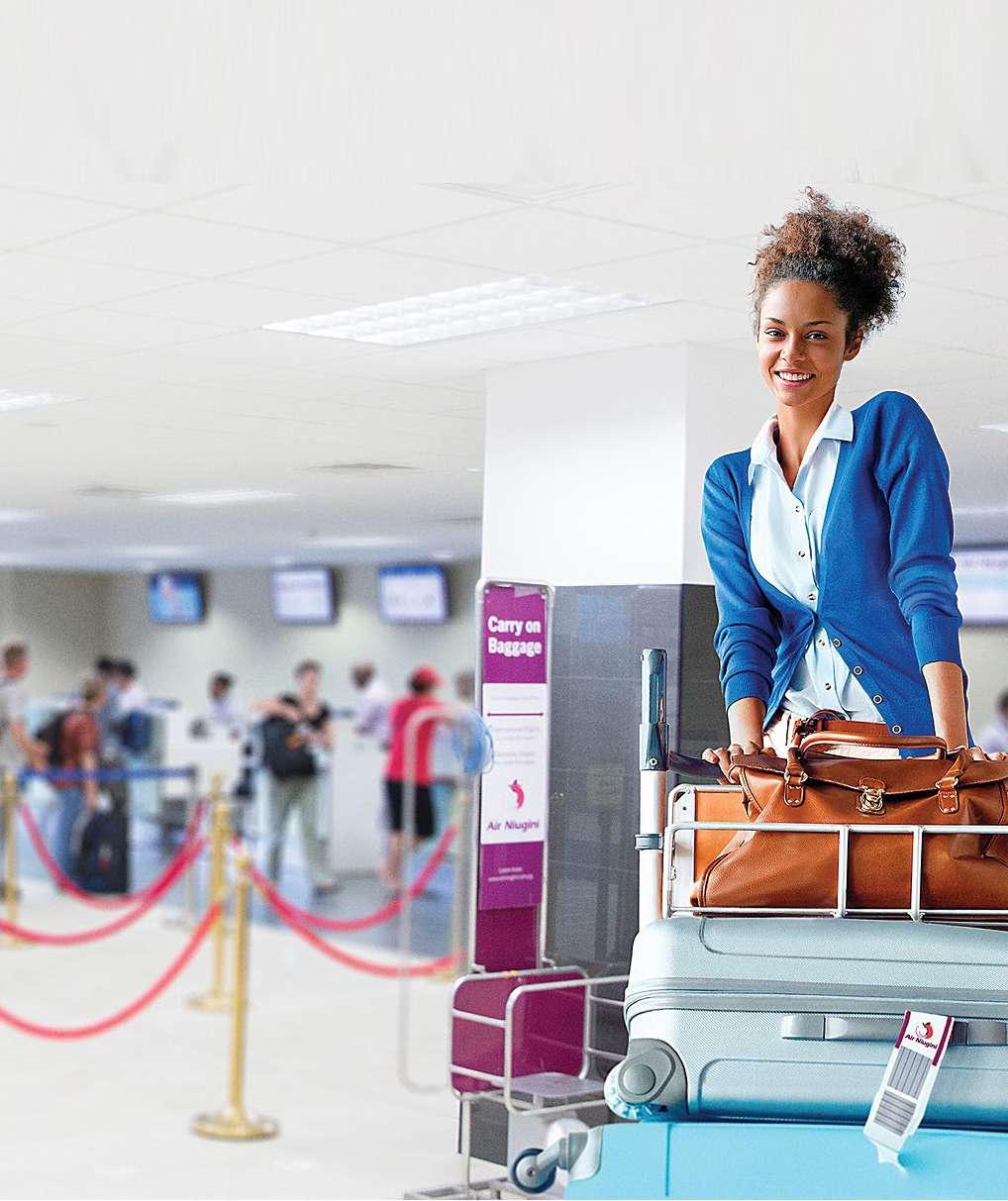
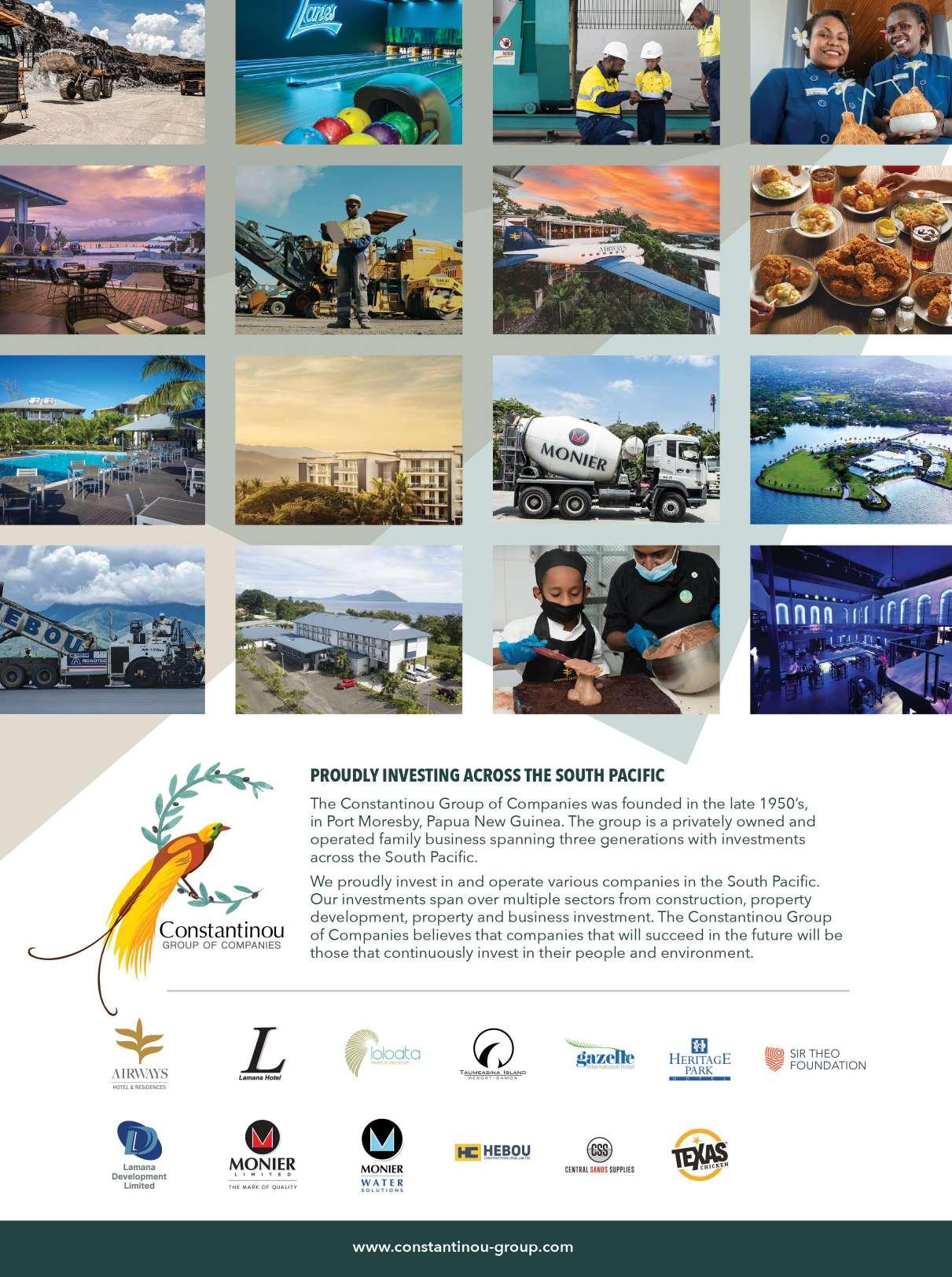
PNG LNG Revenues to the Government and people of PNG
PGK 14.9 Billion Tax Revenue Stream Amount since 2014
*(start of production through January 2025)


Distributions to Kumul Petroleum
Distributions to MRDC (Landowners) Royalty Development Levy

Total Benefits to the State
10.4 Billion
2.1 Billion
1.5 Billion
1.3 Billion
PGK 30.2 Billion
For over 10 years of Production, the PNG LNG Project has contributed over 30 billion kina in total benefits to the State of Papua New Guinea.
This infographic shows the amount of revenues paid by the PNG LNG Project to the Government and people of PNG since LNG production started in 2014. All figures shown are for amounts paid or payable through January 2025.
The PNG LNG Project generates five primary revenue streams. These include equity distributions paid to Kumul Petroleum Holdings Limited (KPHL) and MRDC, which is based on the amount of equity in the PNG LNG Project held by each (KPHL – 19.4% and MRDC – 2.8%). Different types of tax including company tax are paid to the Internal Revenue Commission. In 2024, Tax payments alone to the State were over PGK 4 billion, the largest in the Project’s history. Development Levy and Royalties are paid to the Department of Petroleum and Energy in line with the Oil and Gas Act for the benefit of respective Project areas, provincial and local level governments plus landowner beneficiaries.
PNG LNG is operated by a subsidiary of ExxonMobil in co -venture with:



